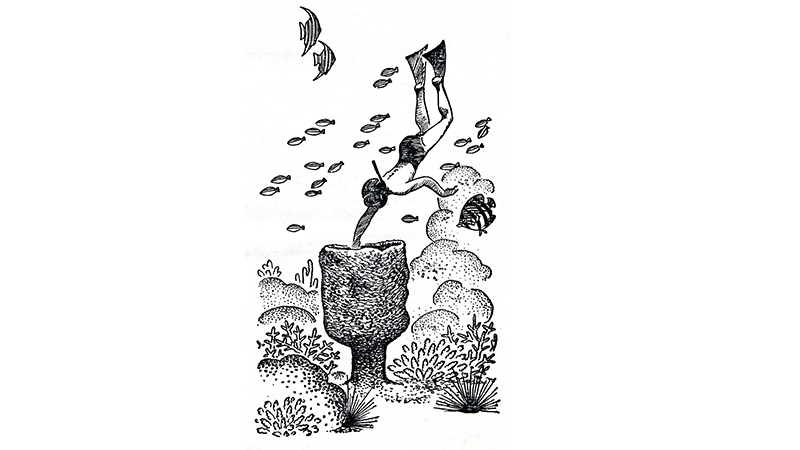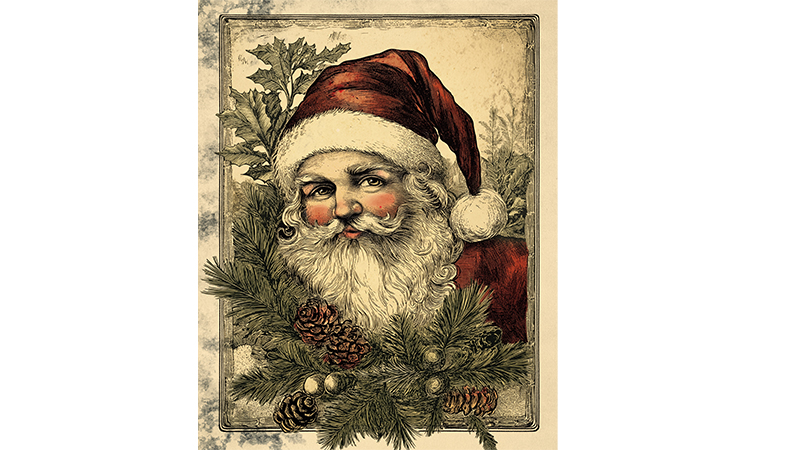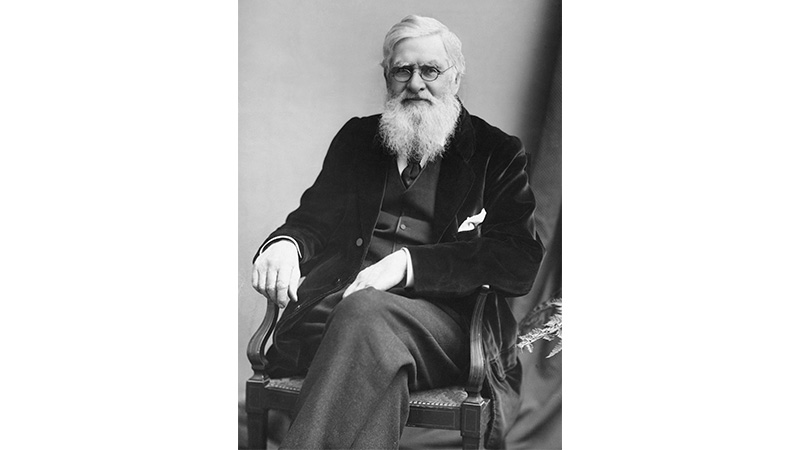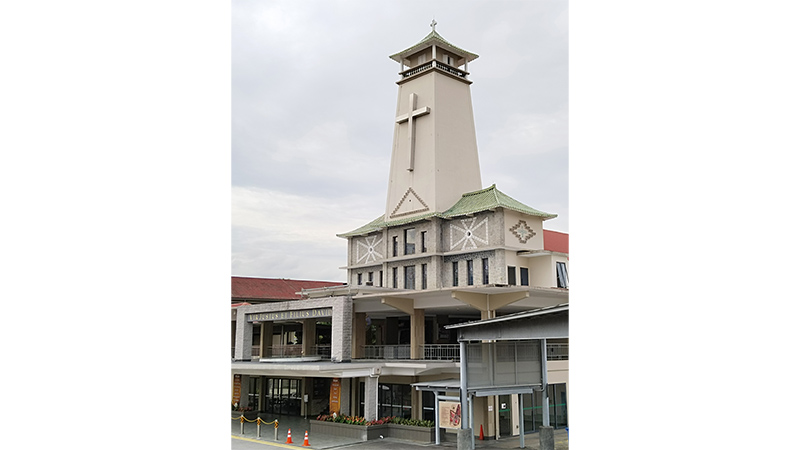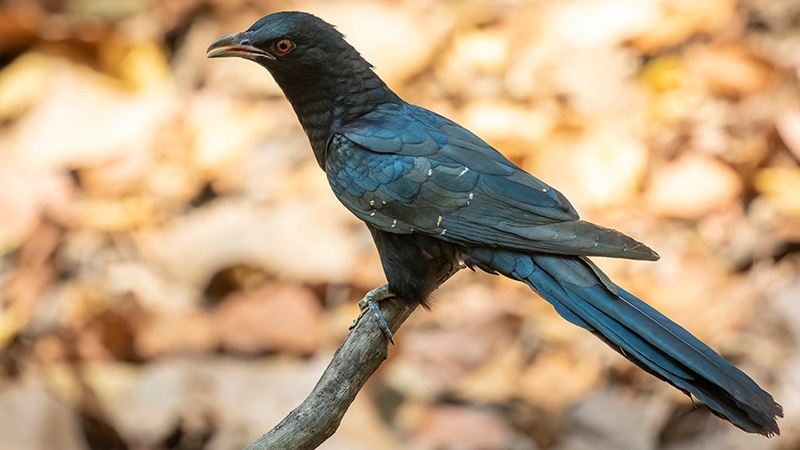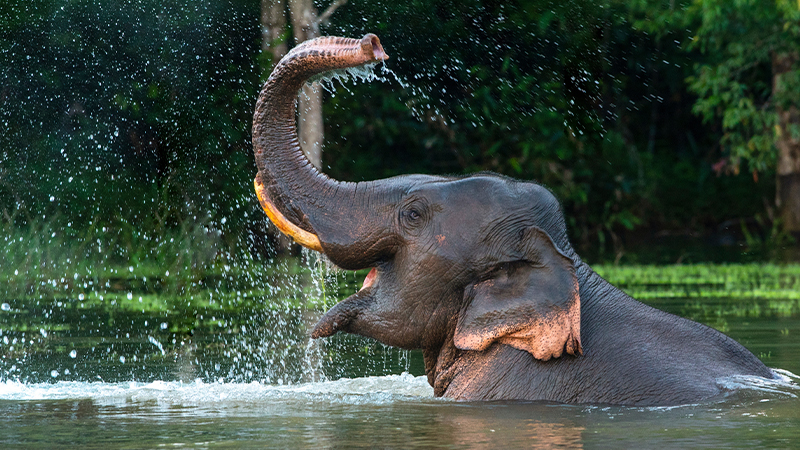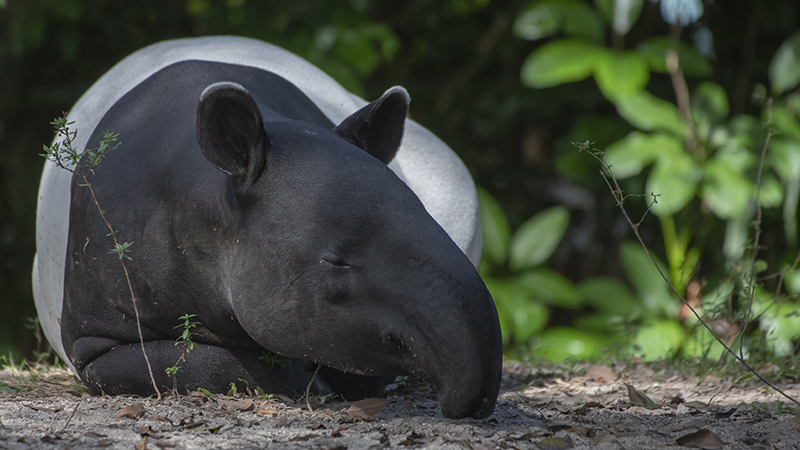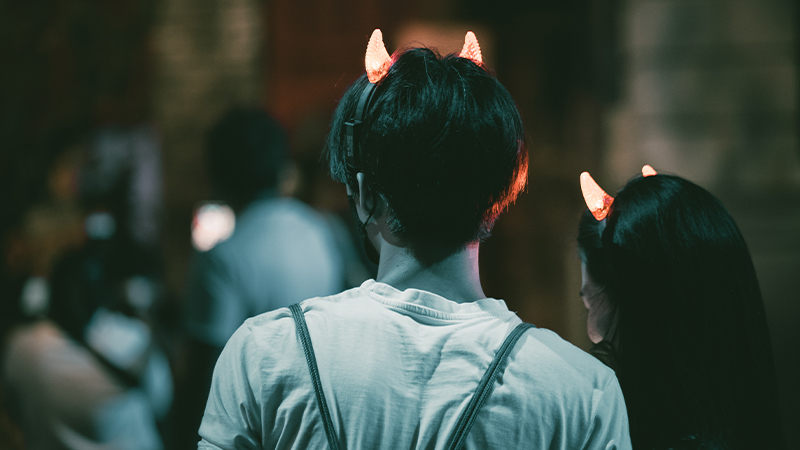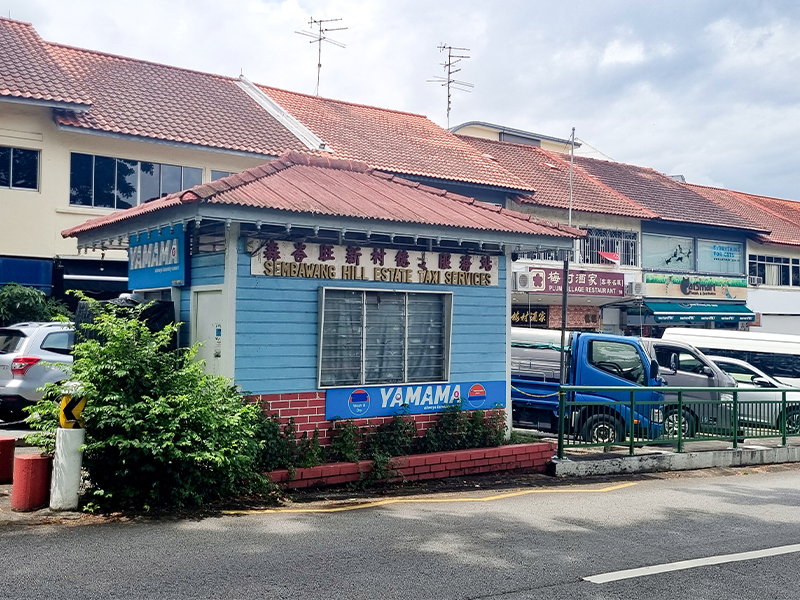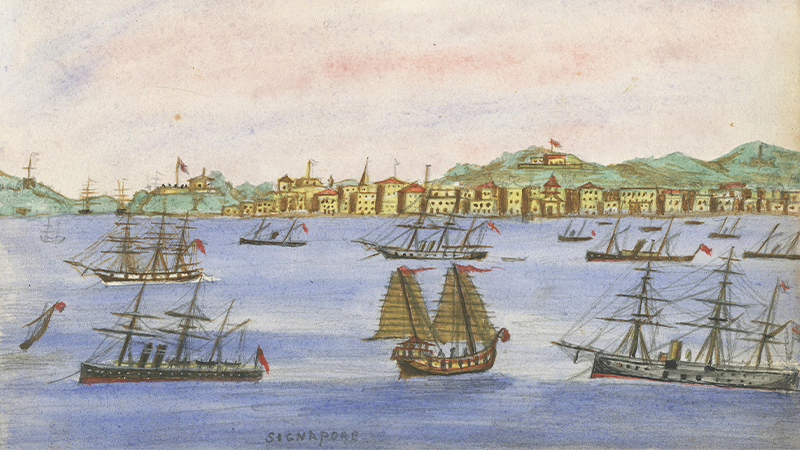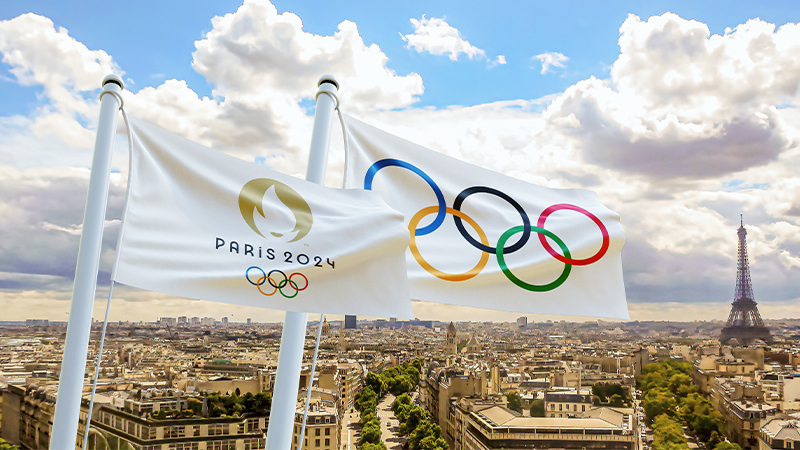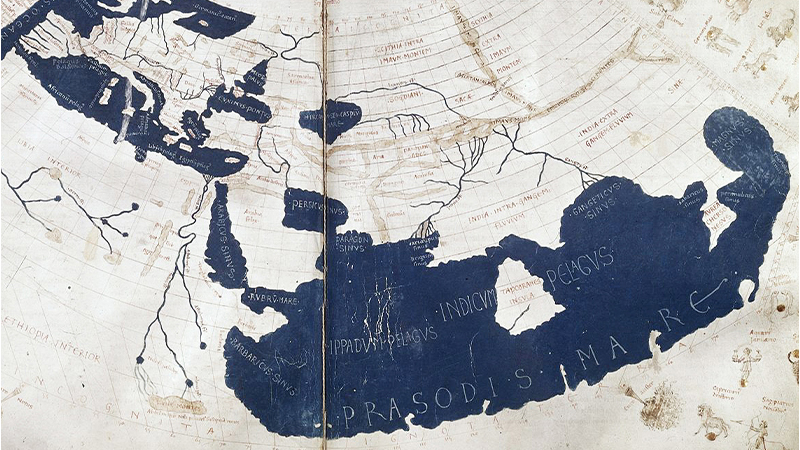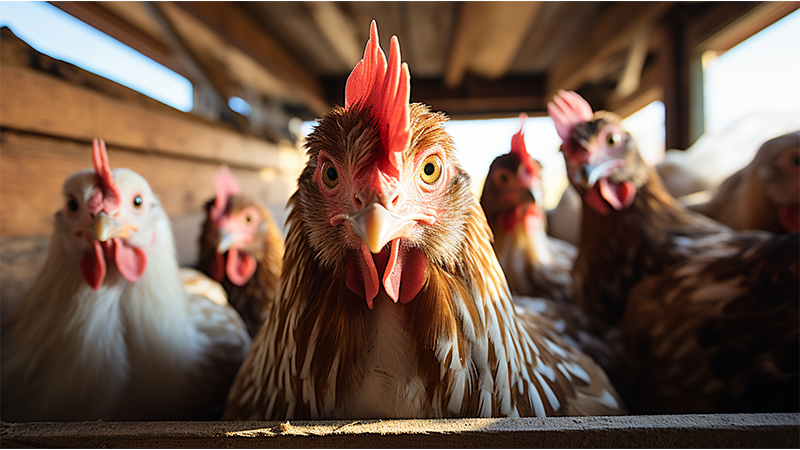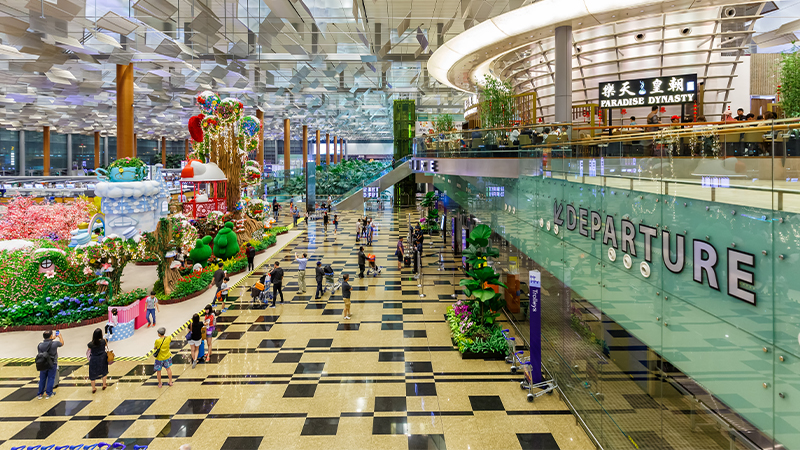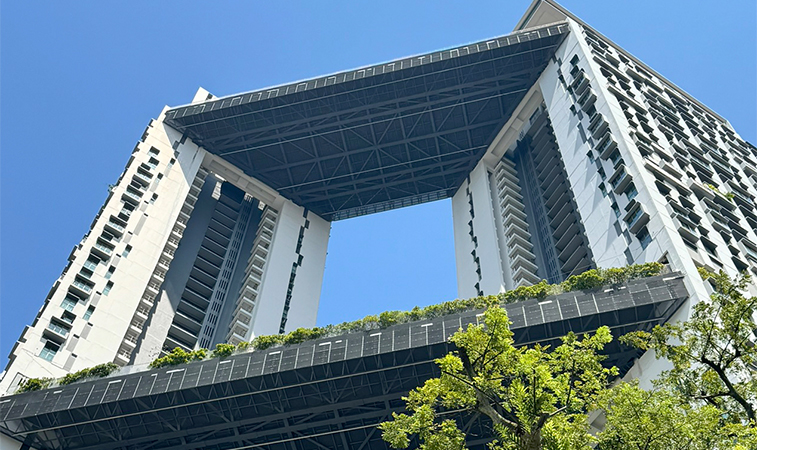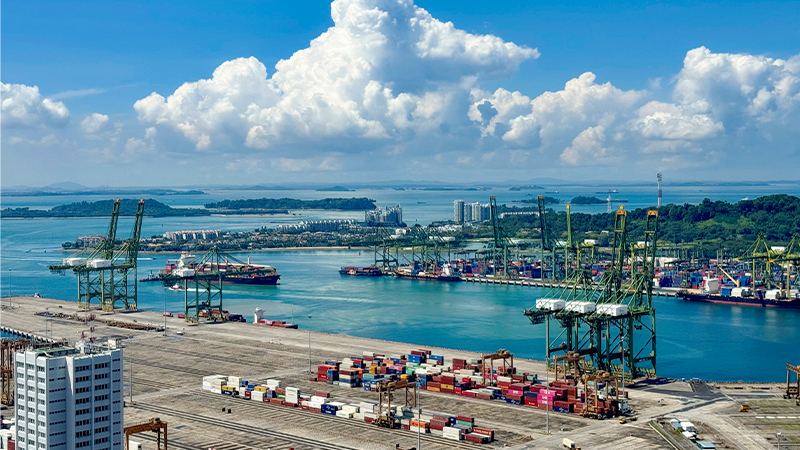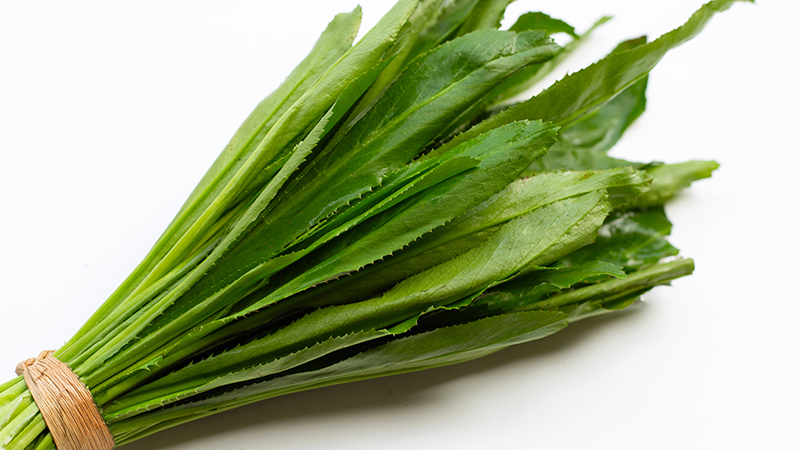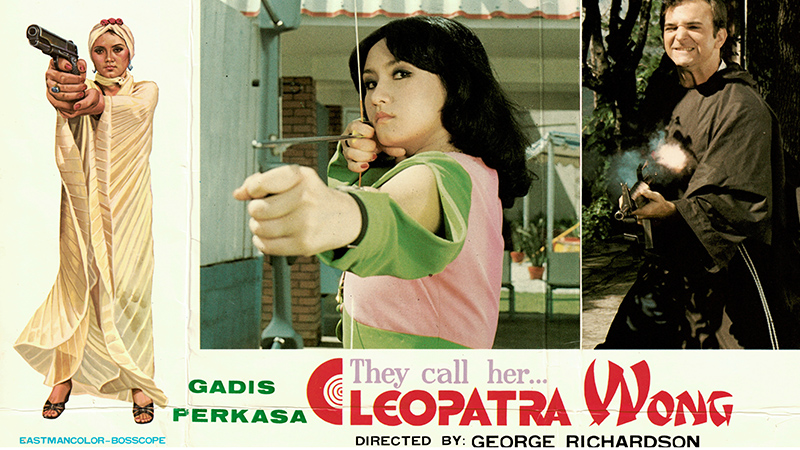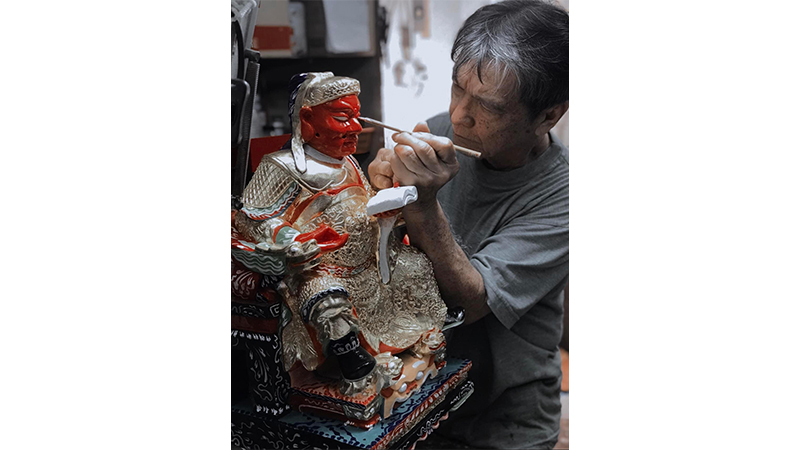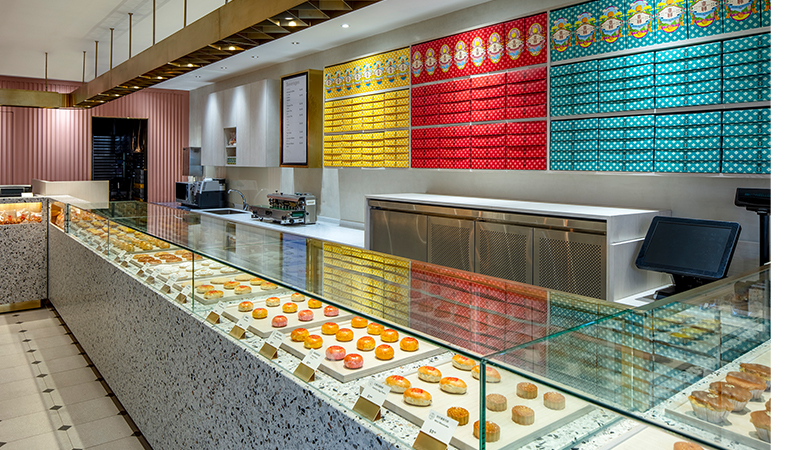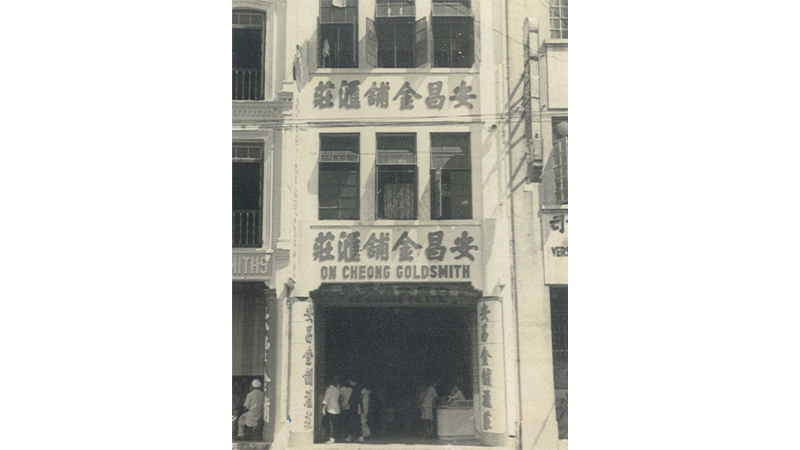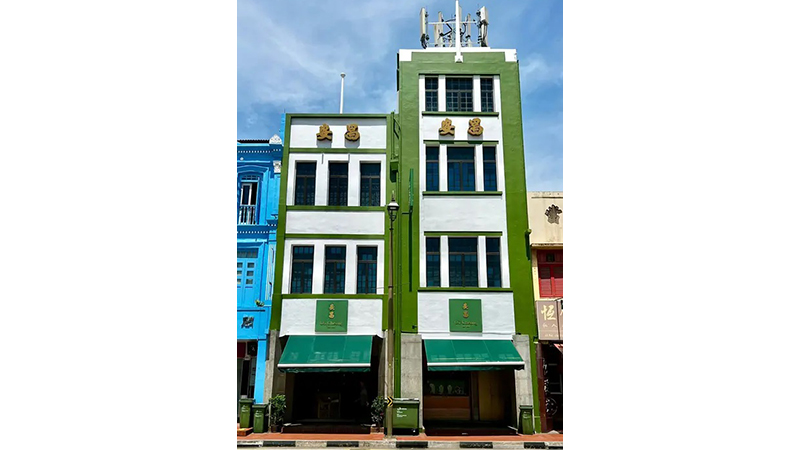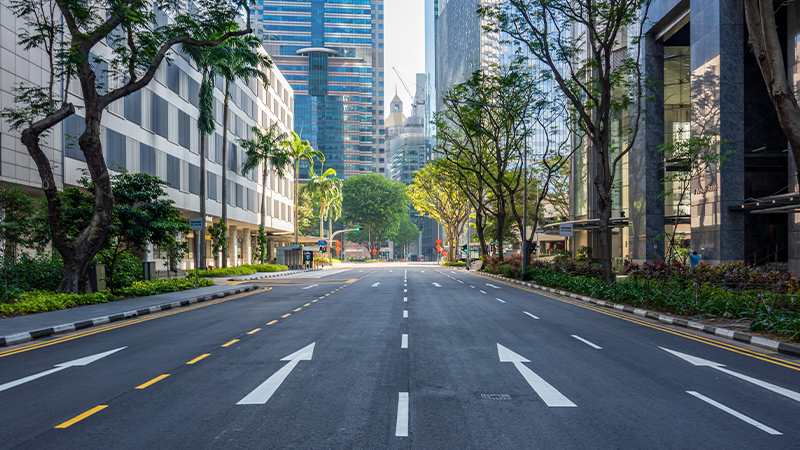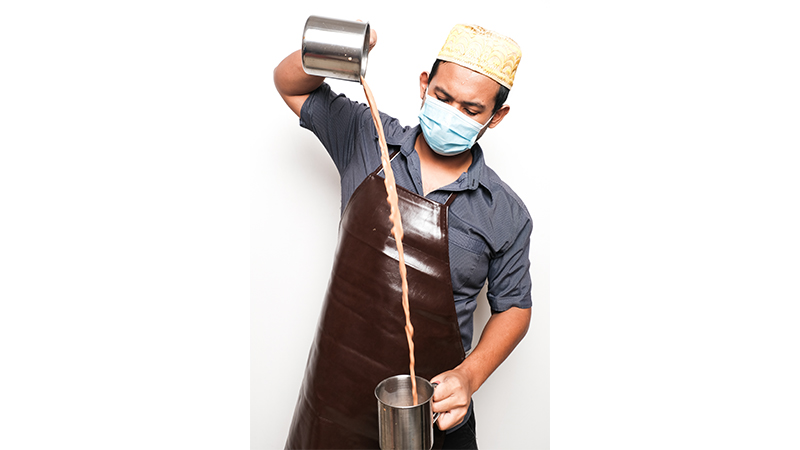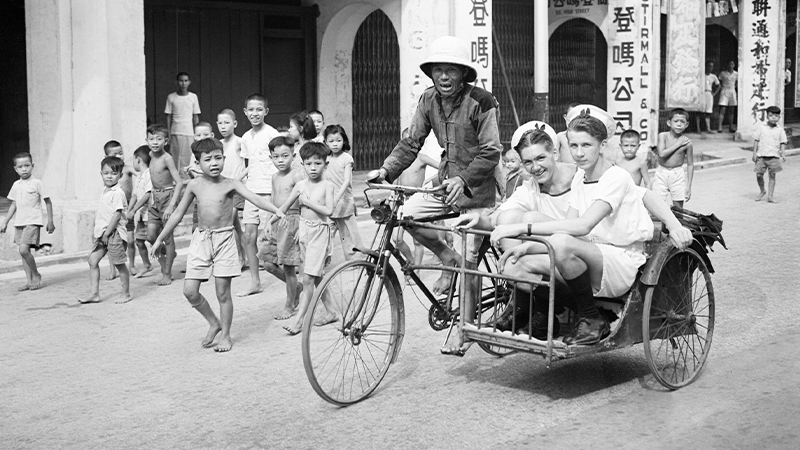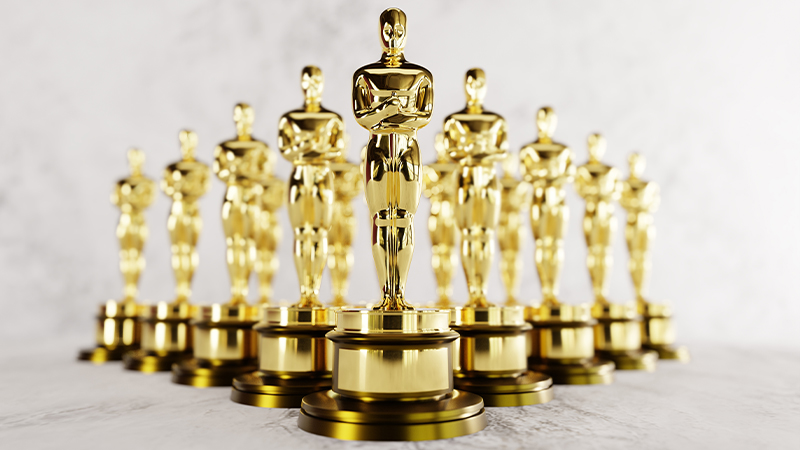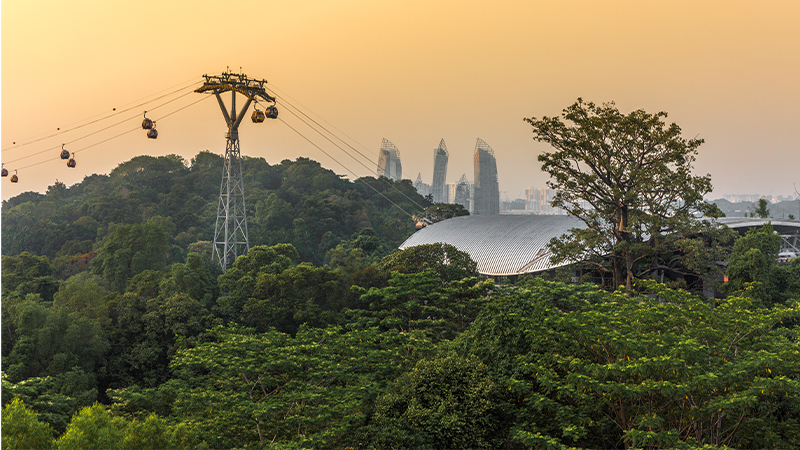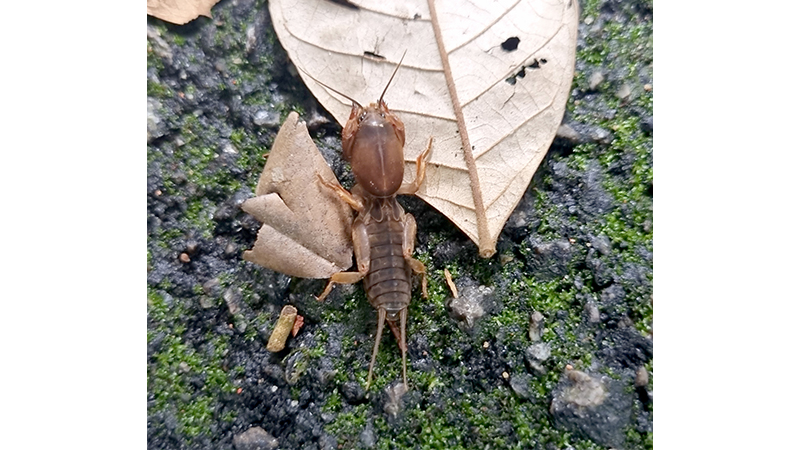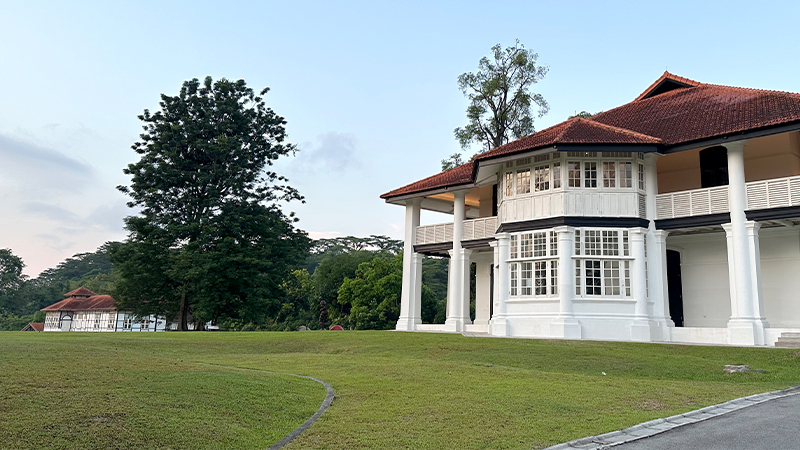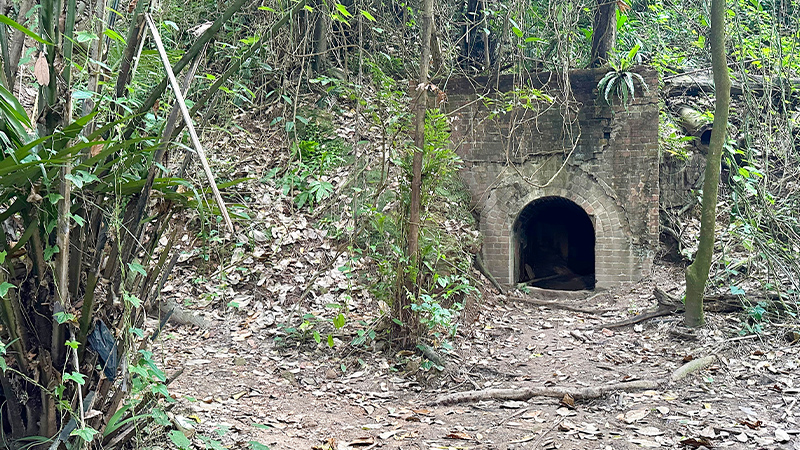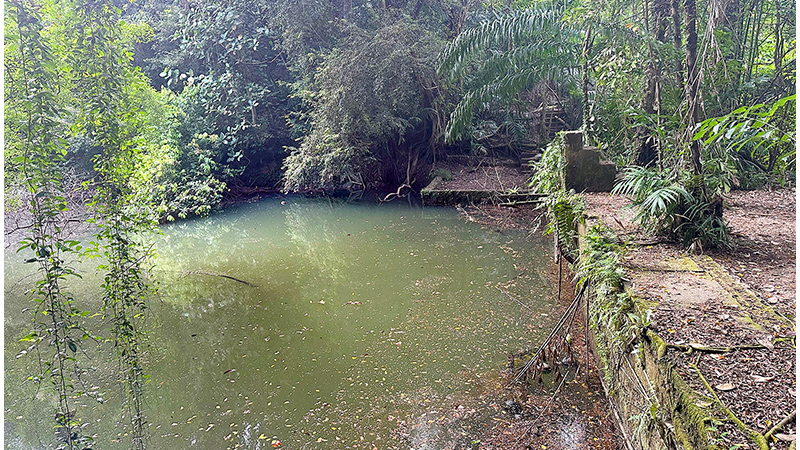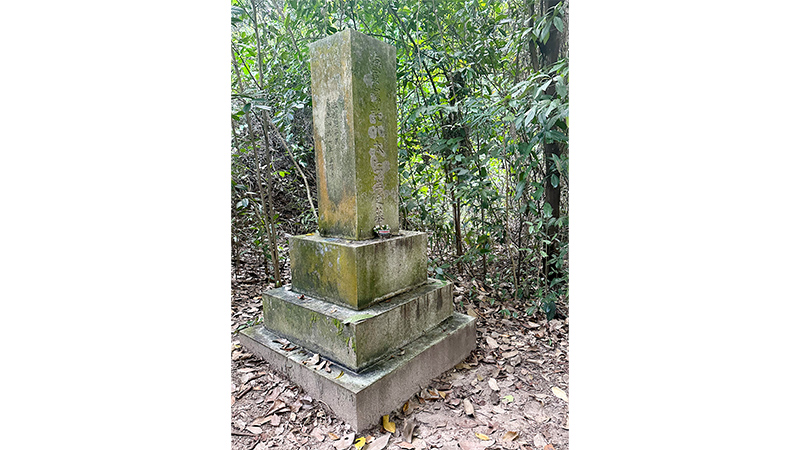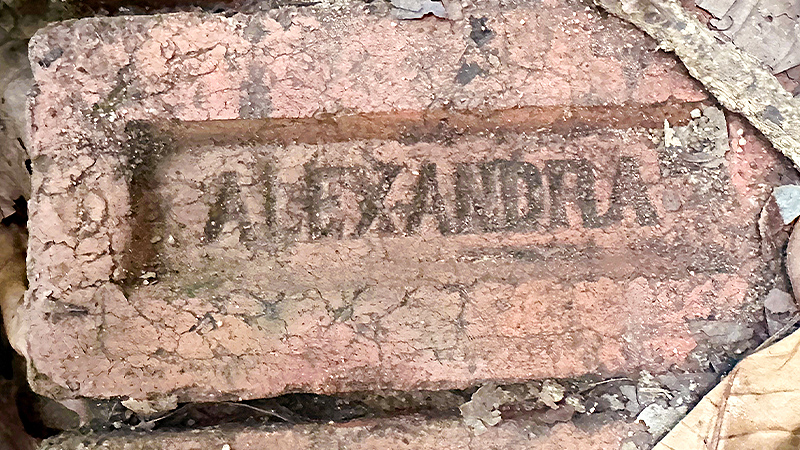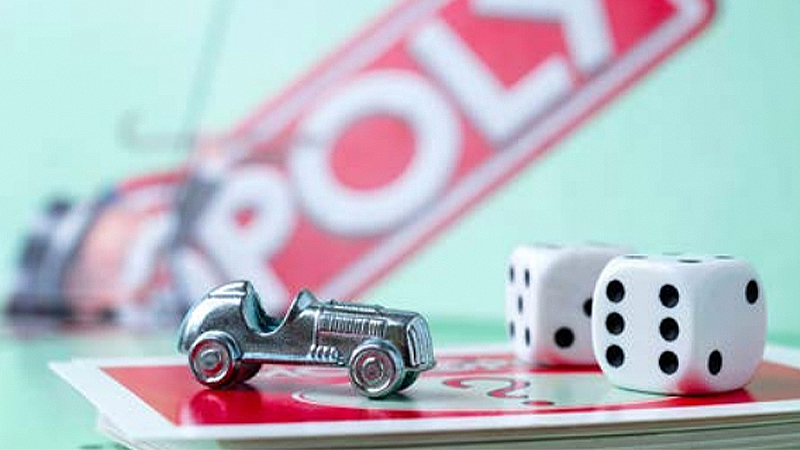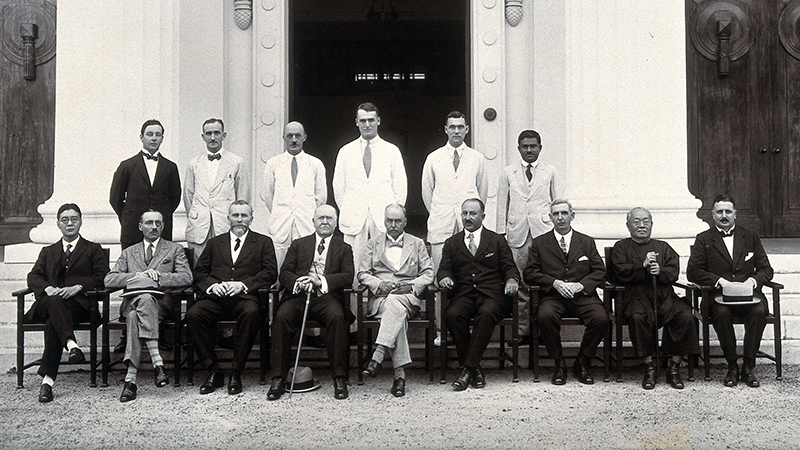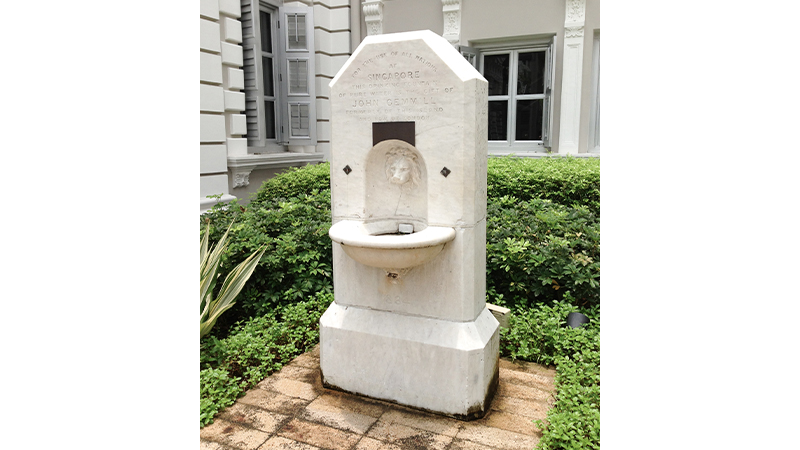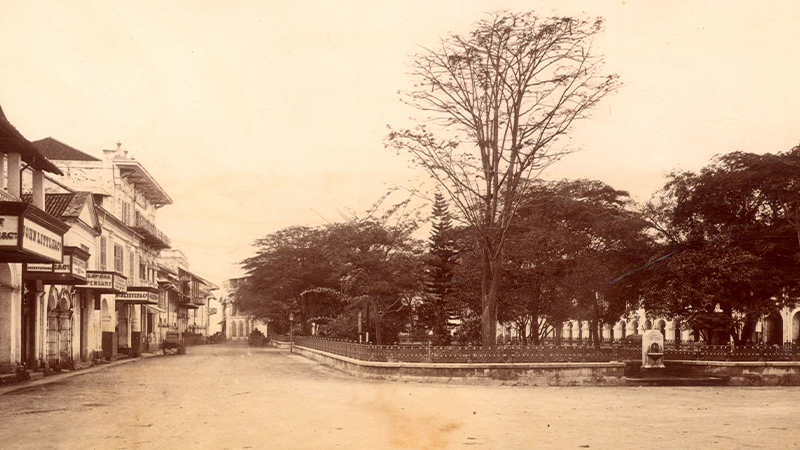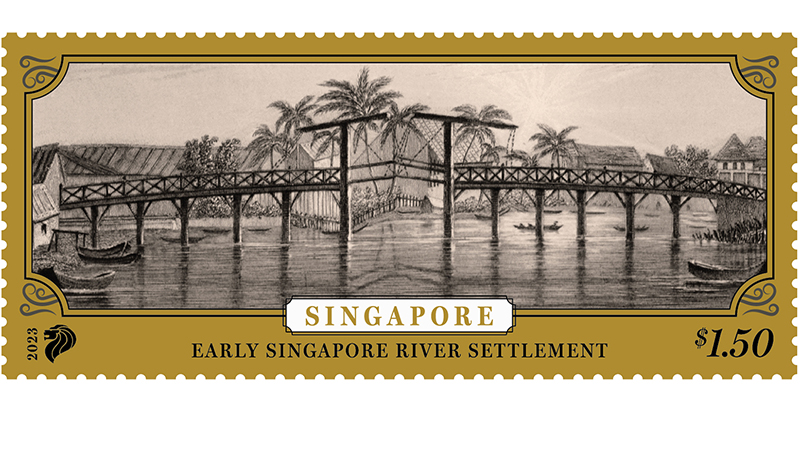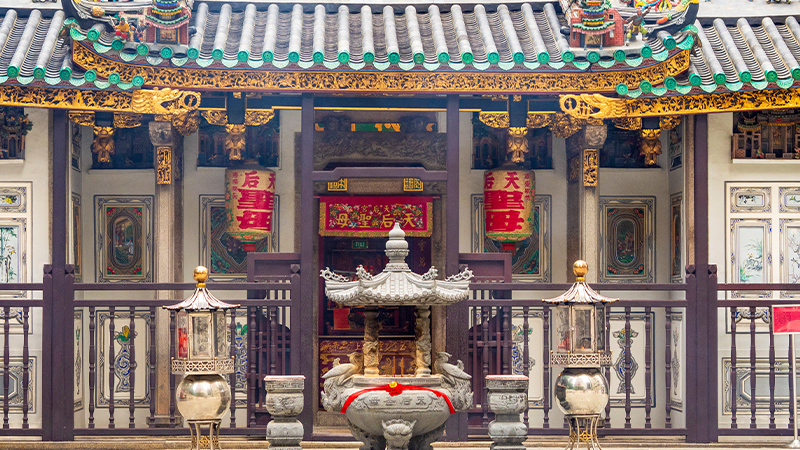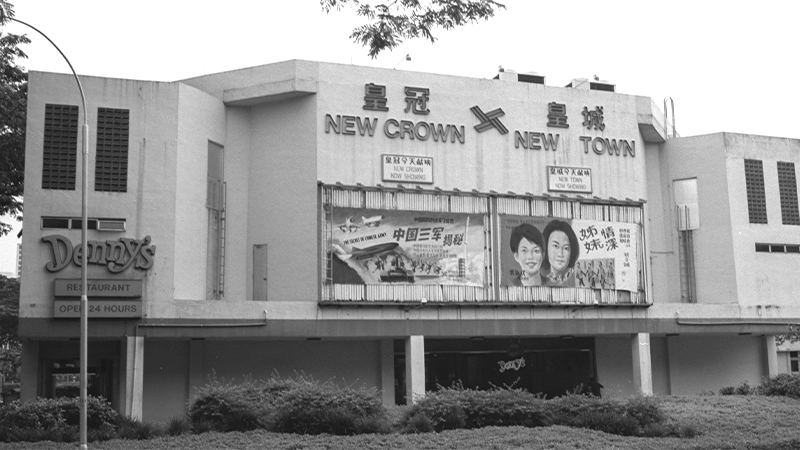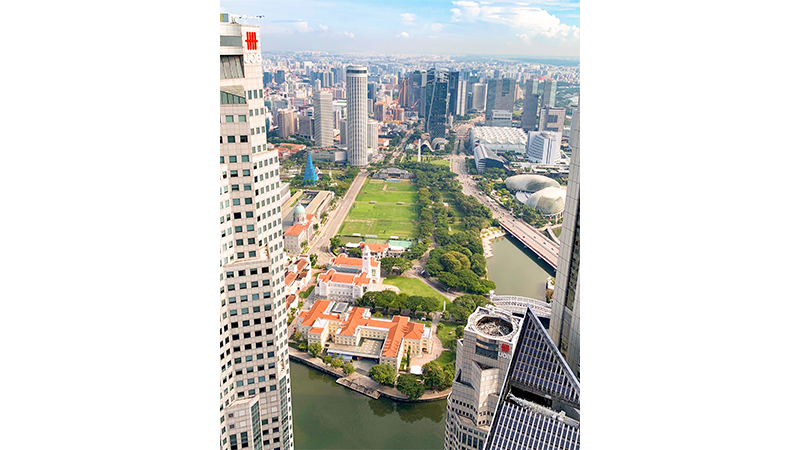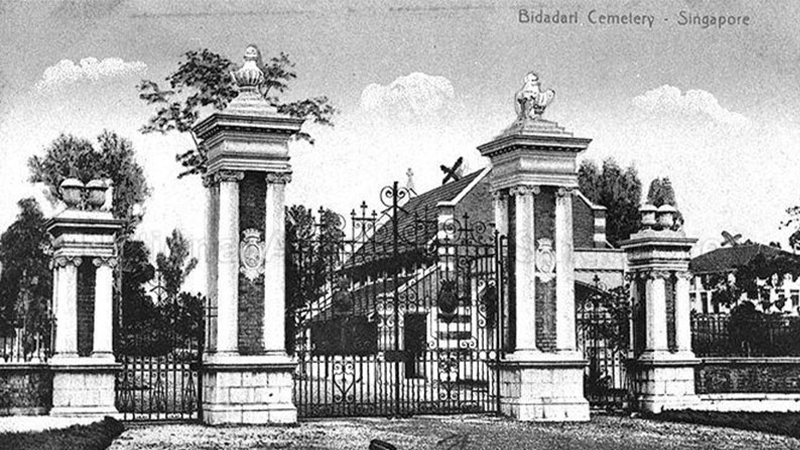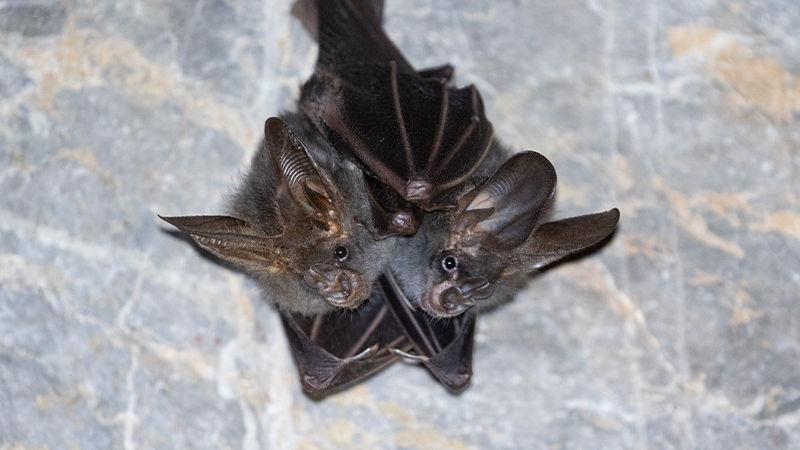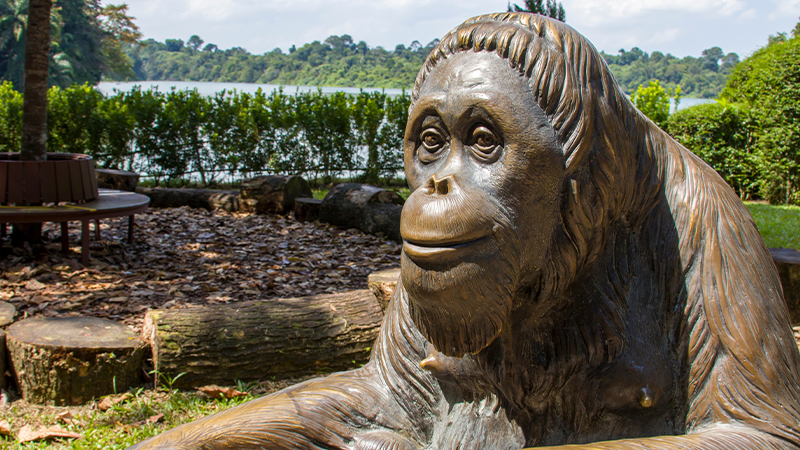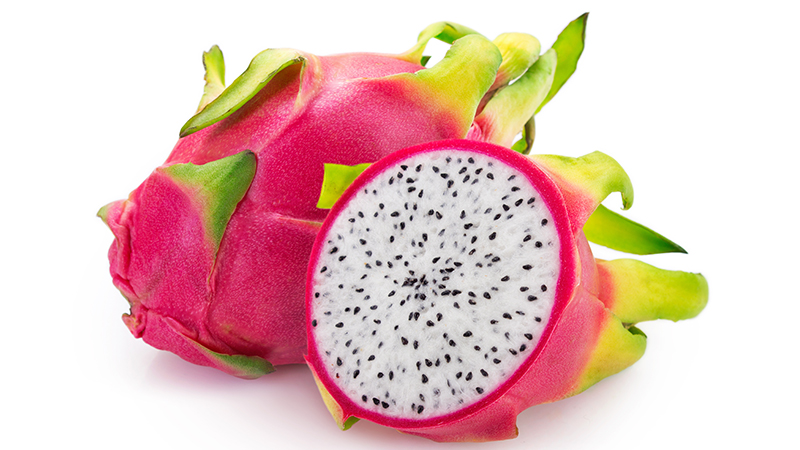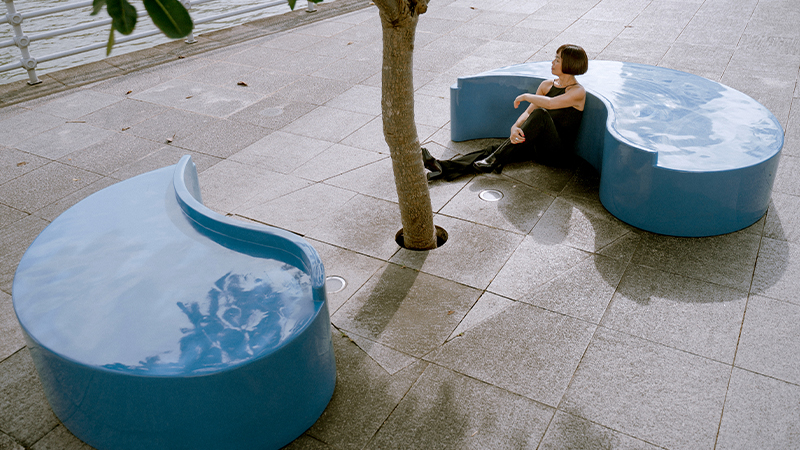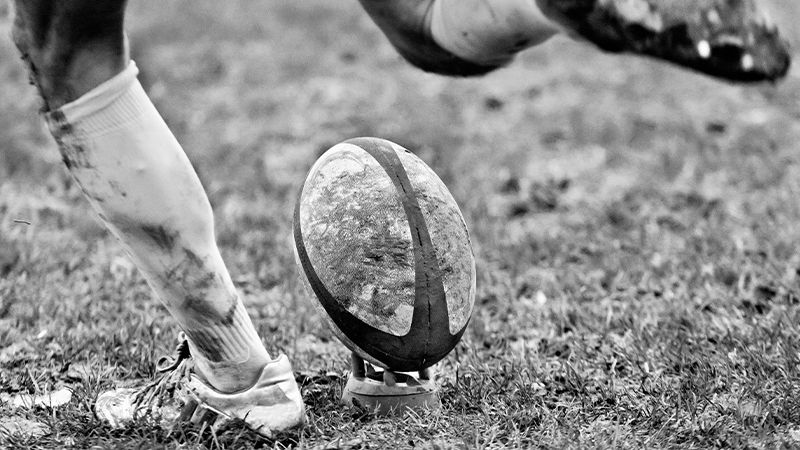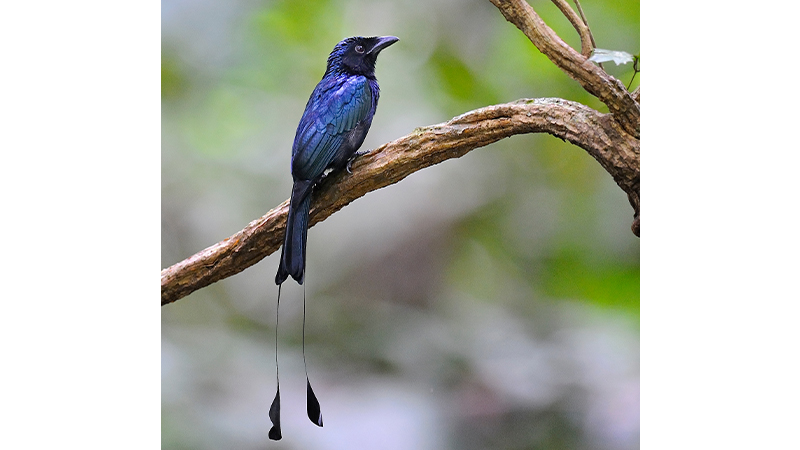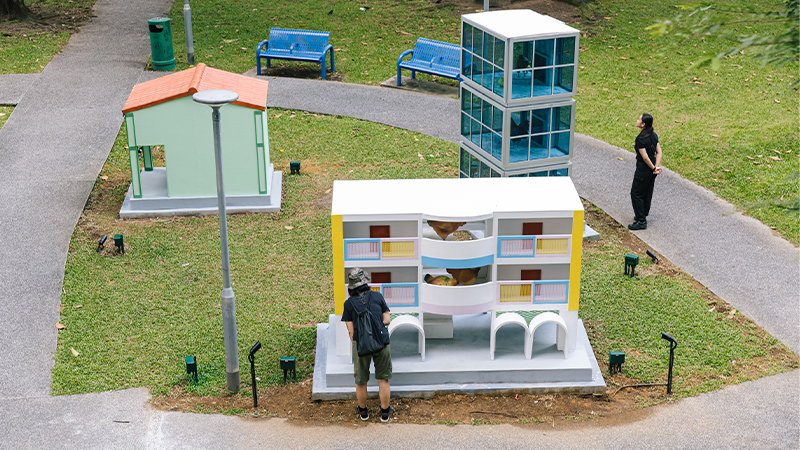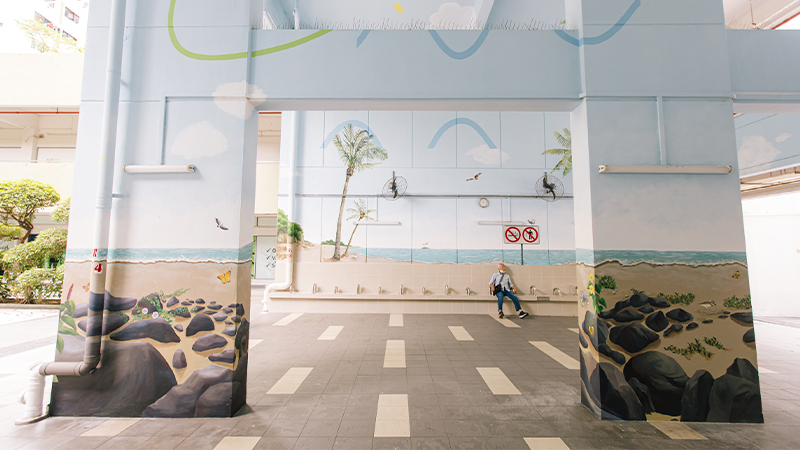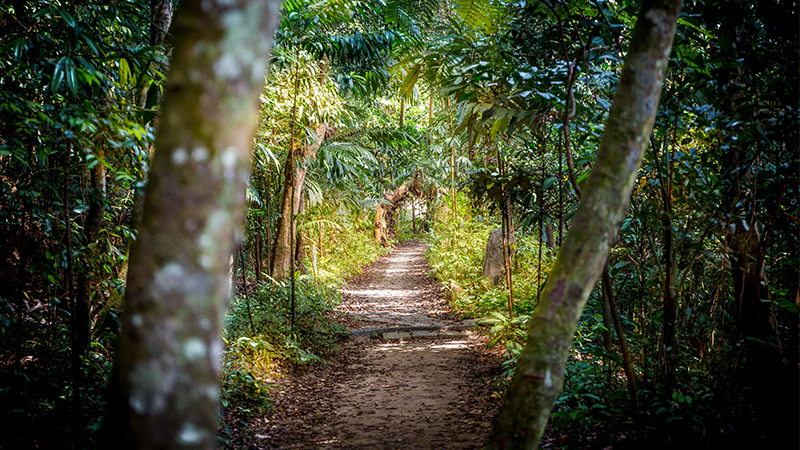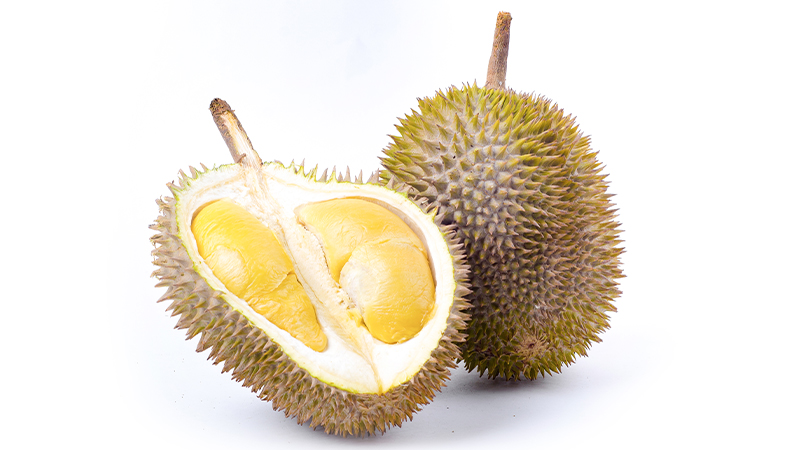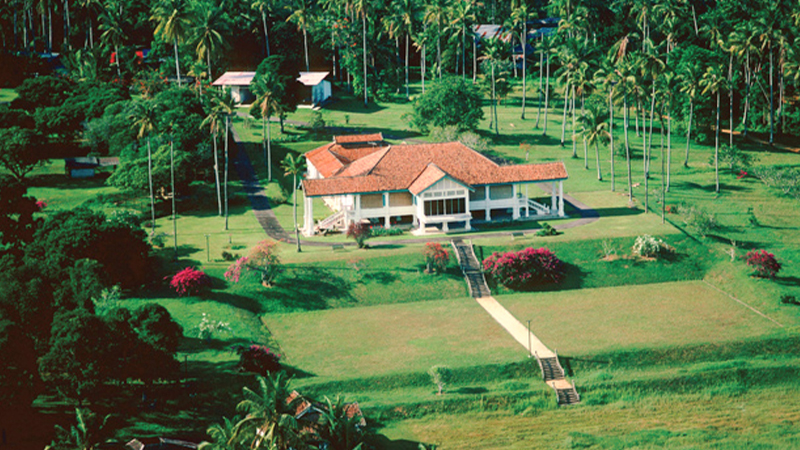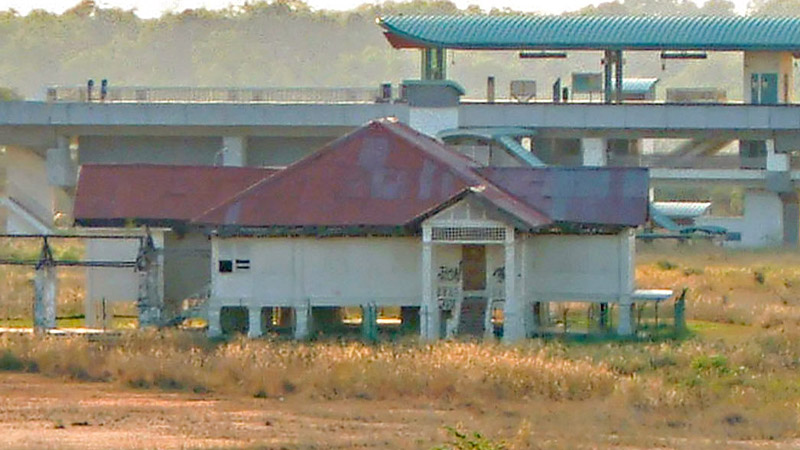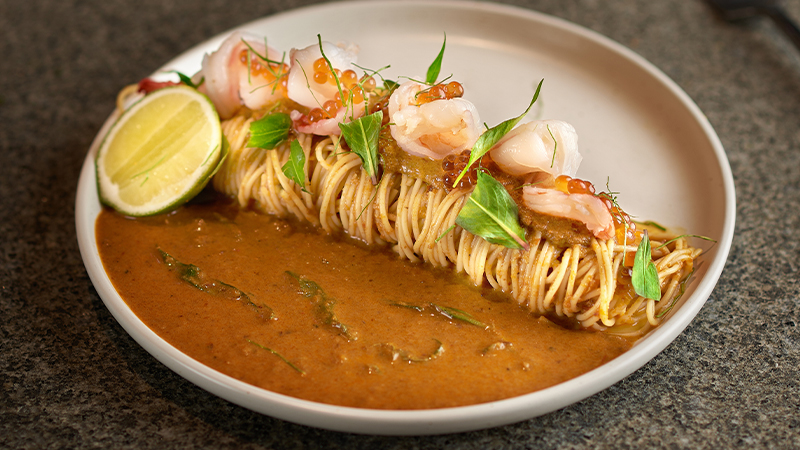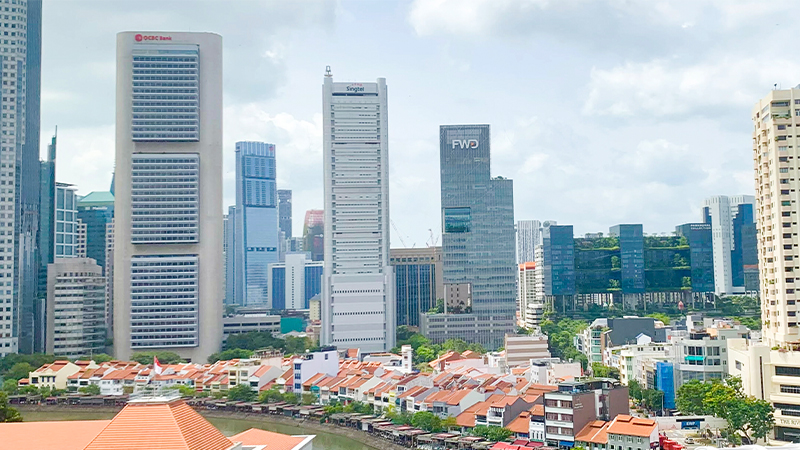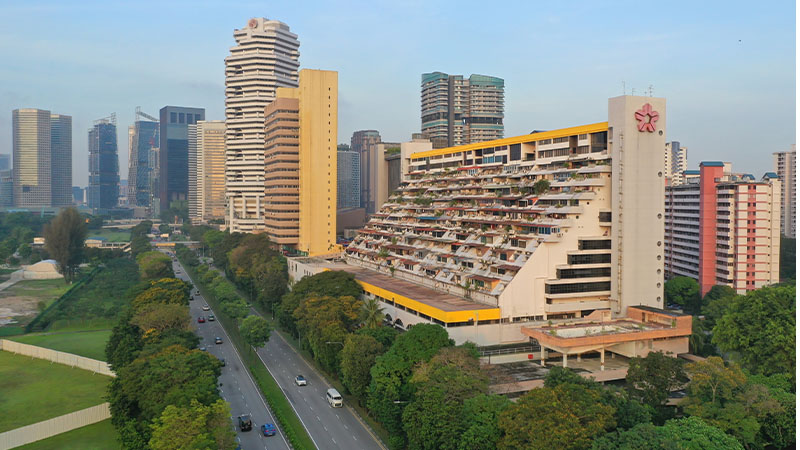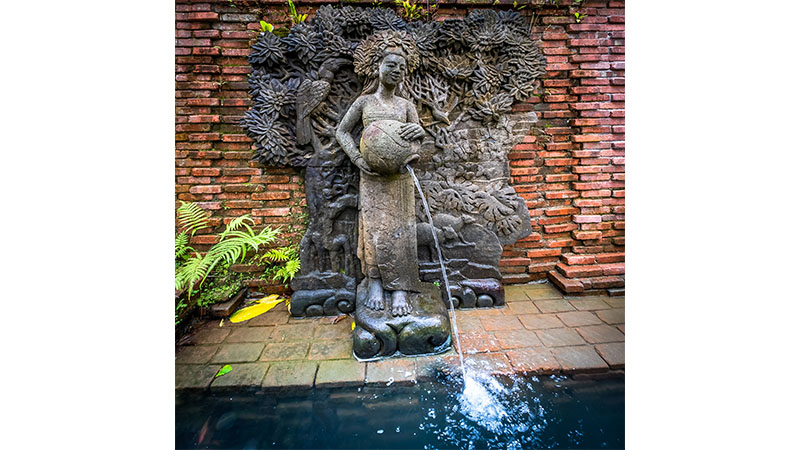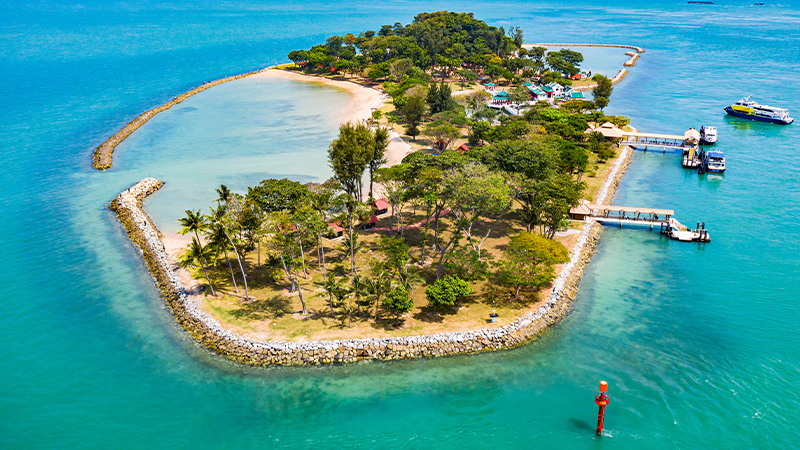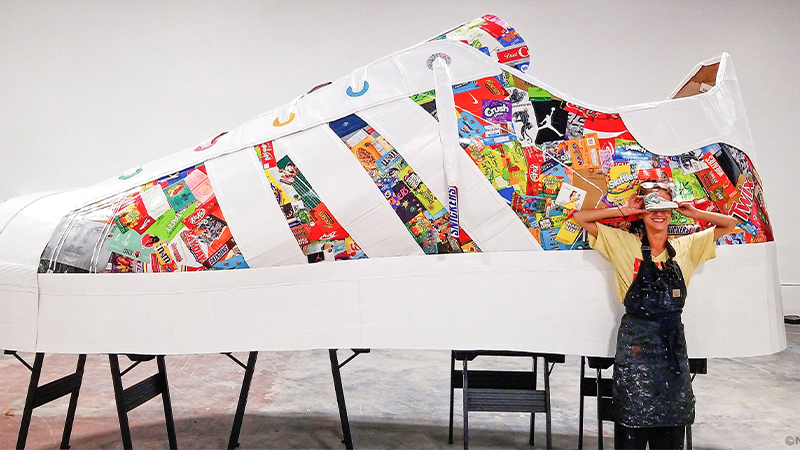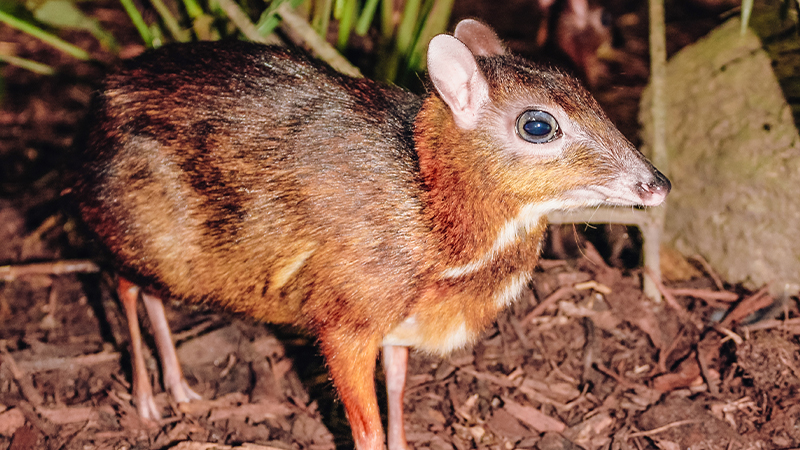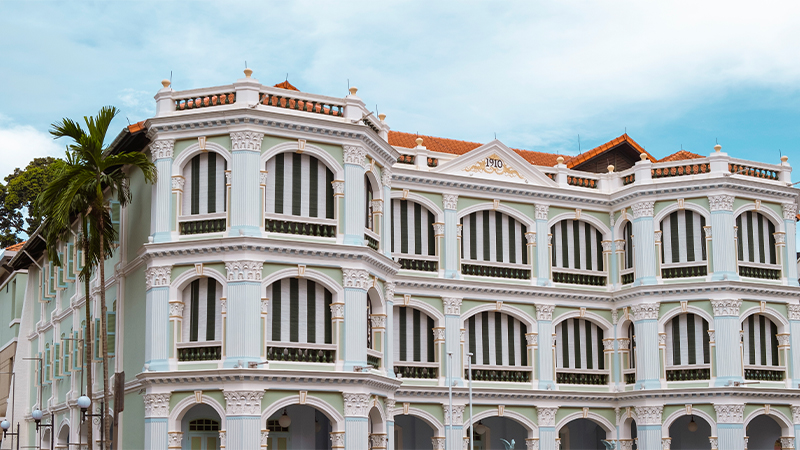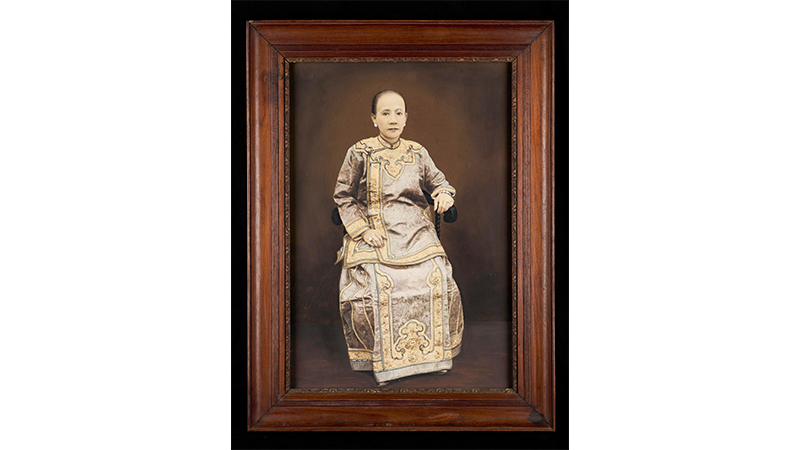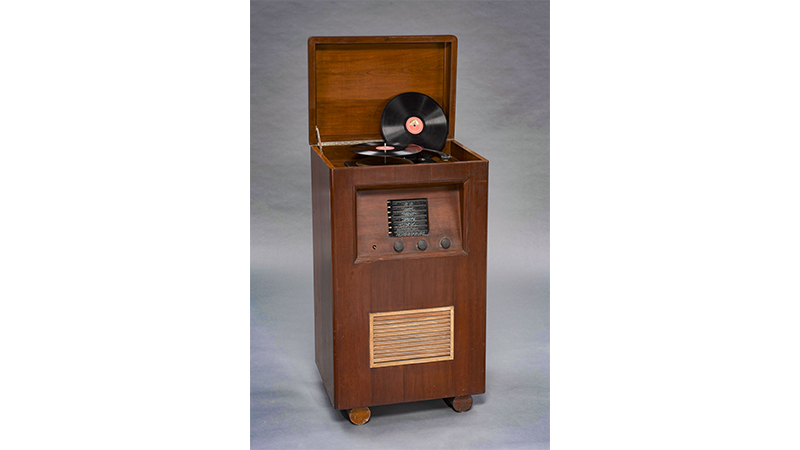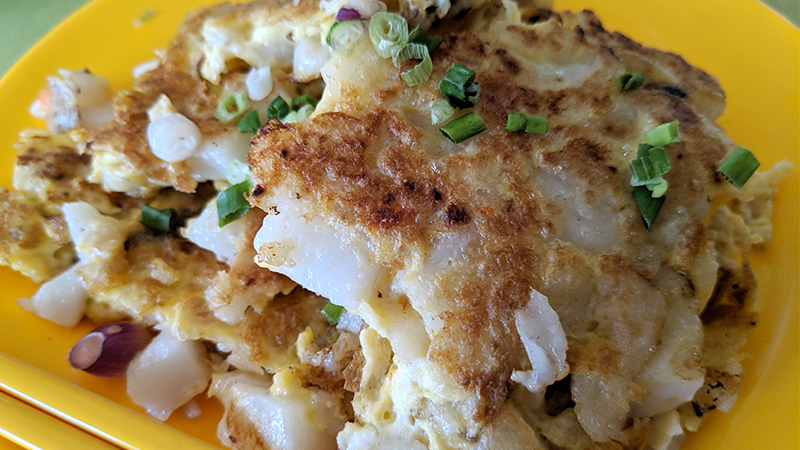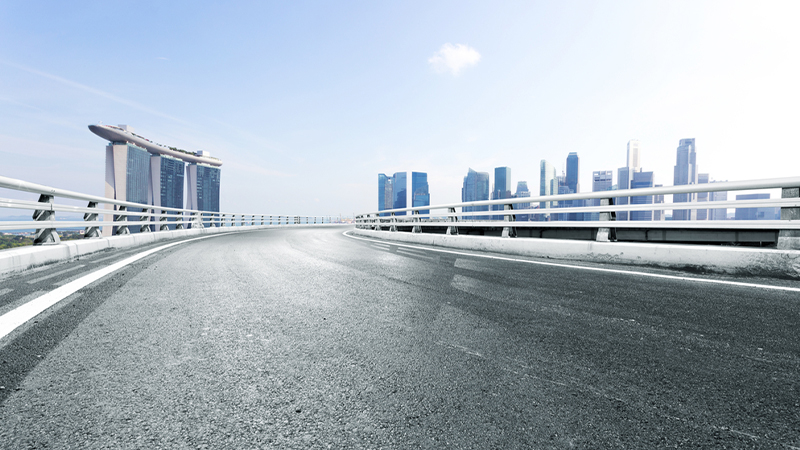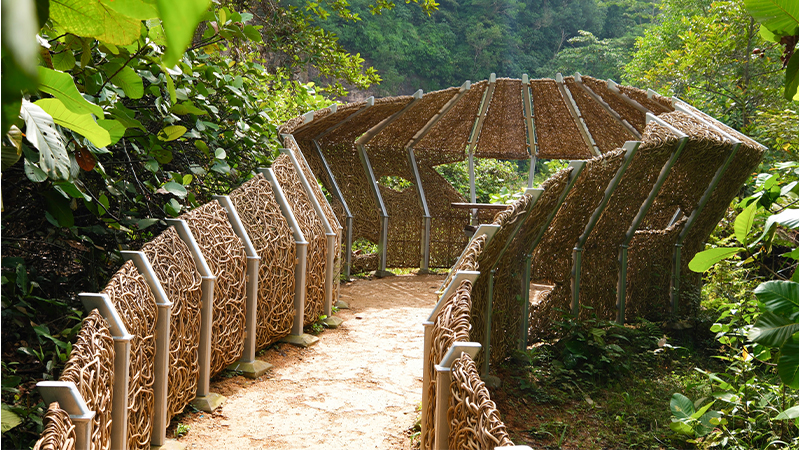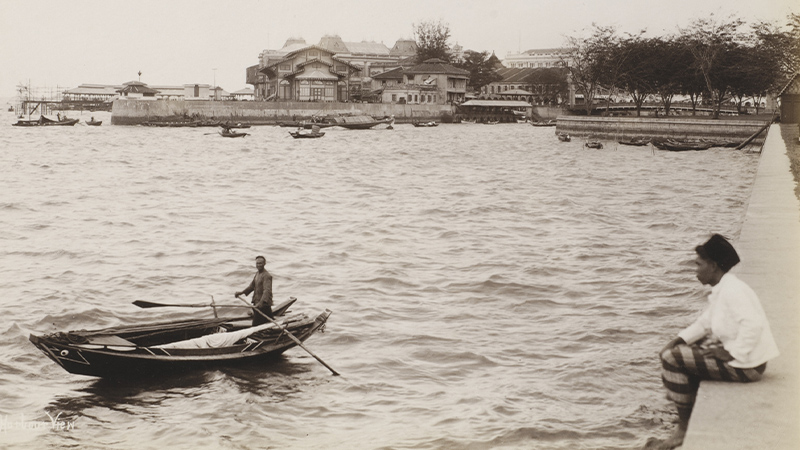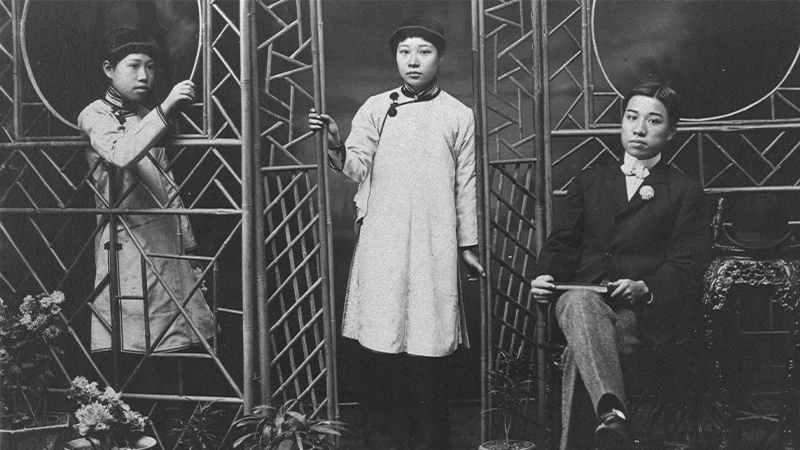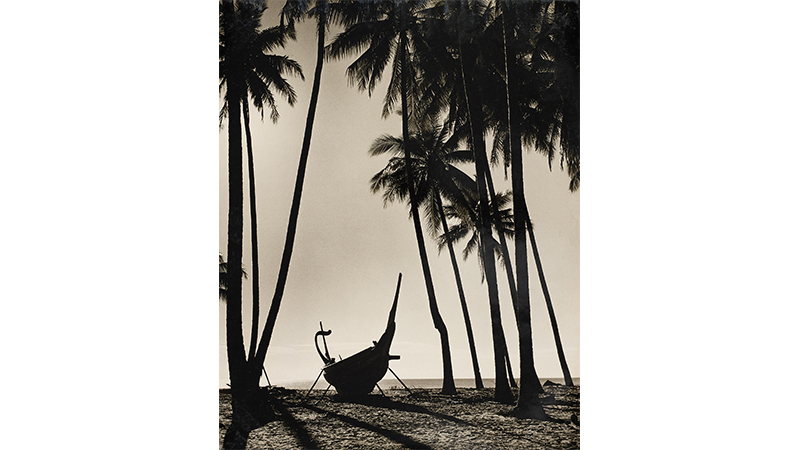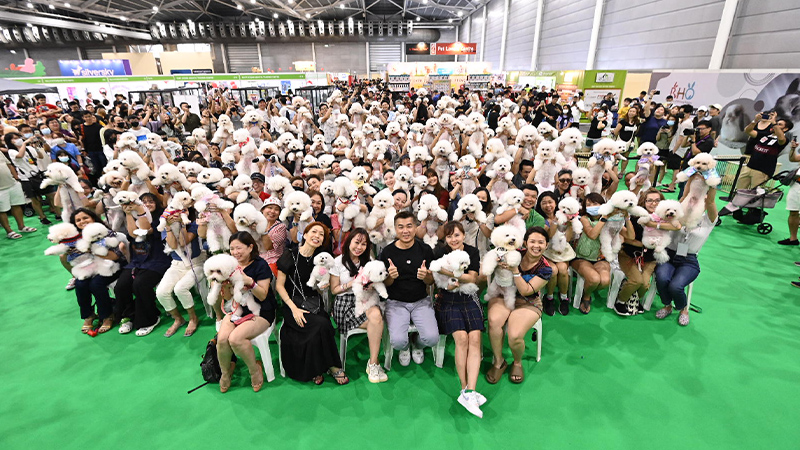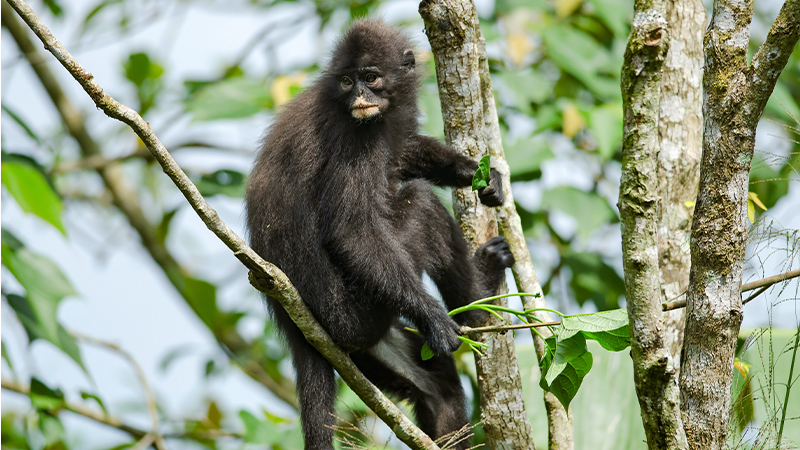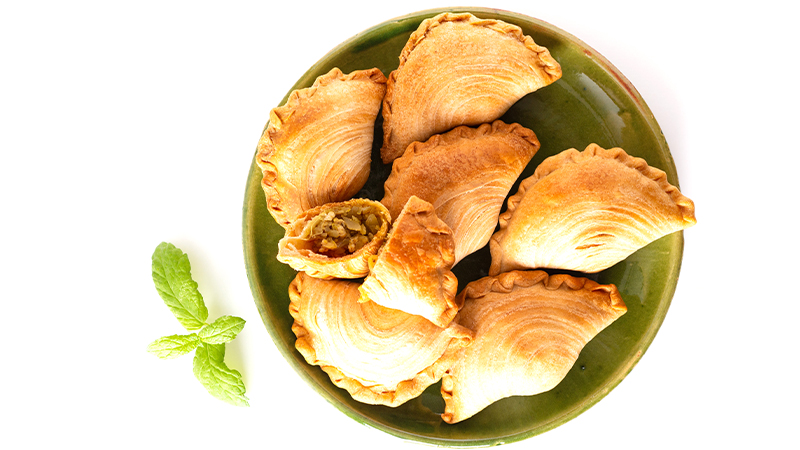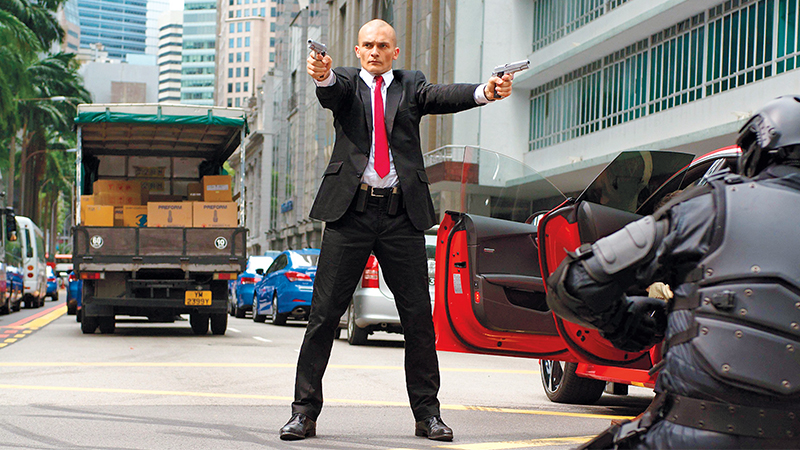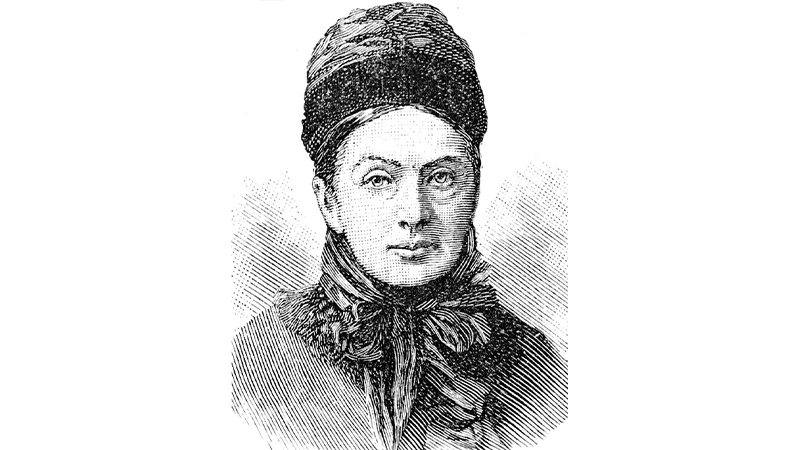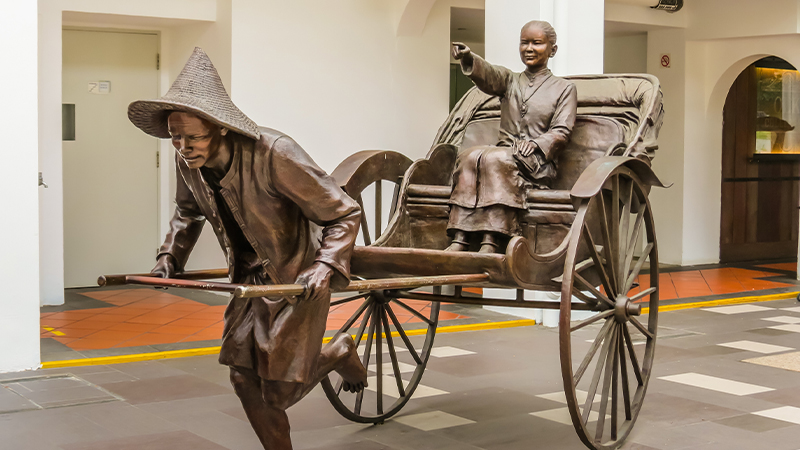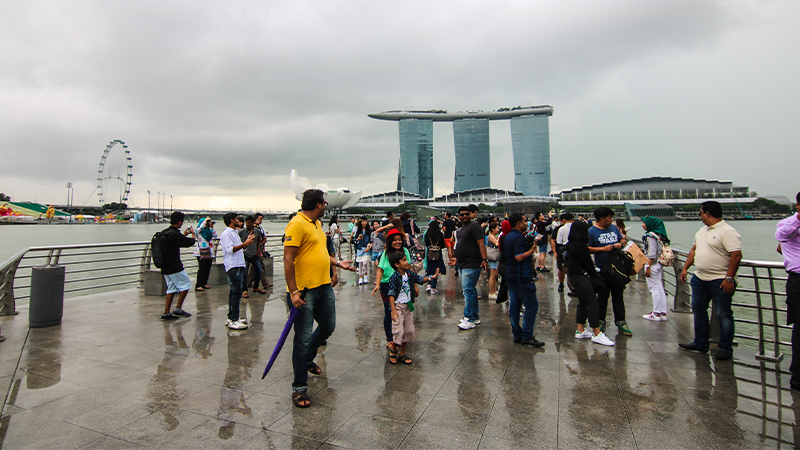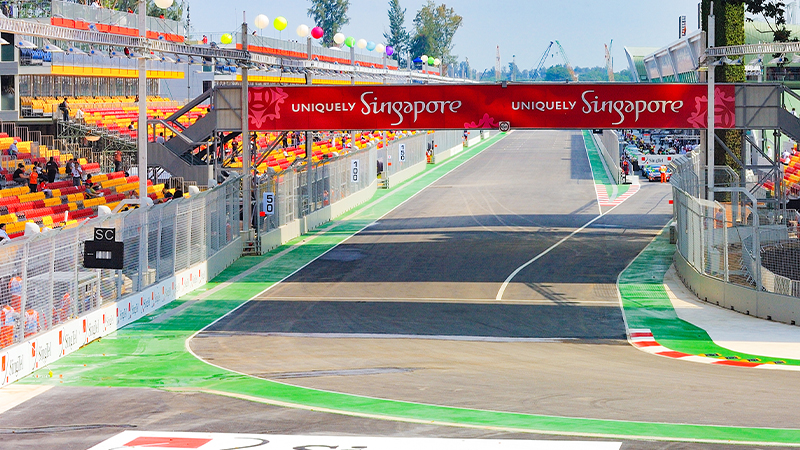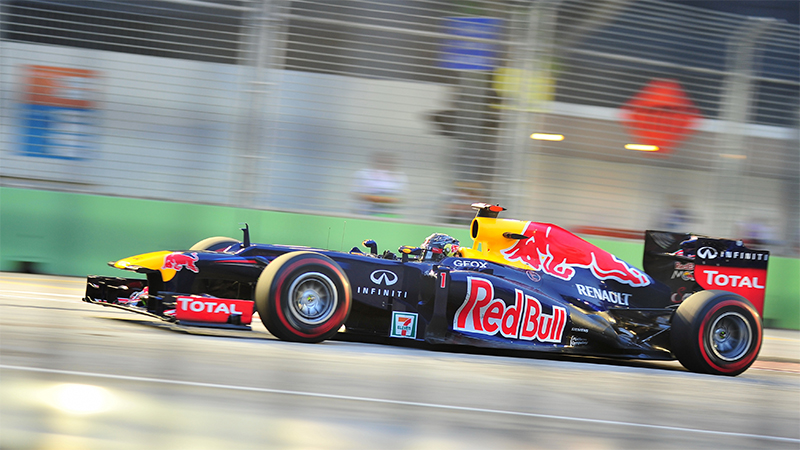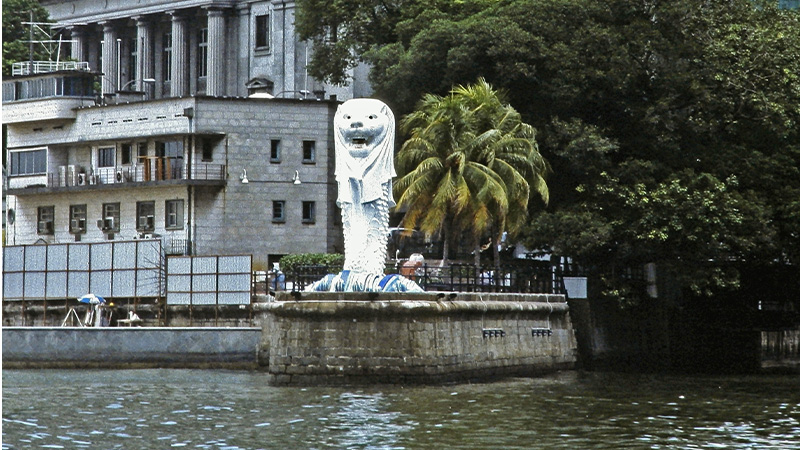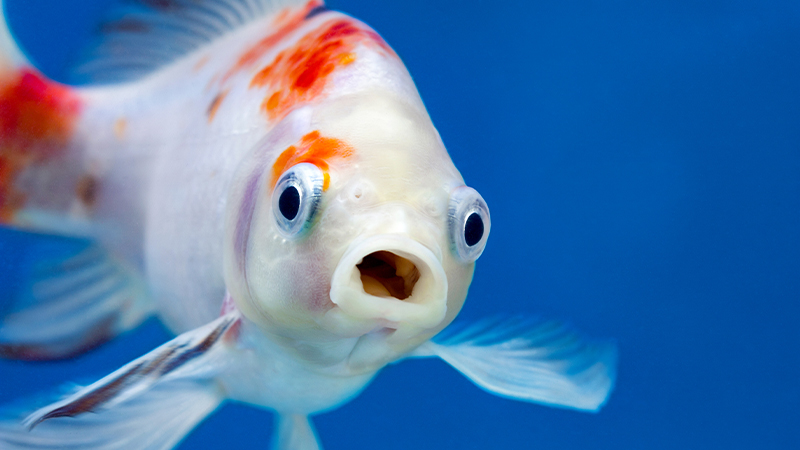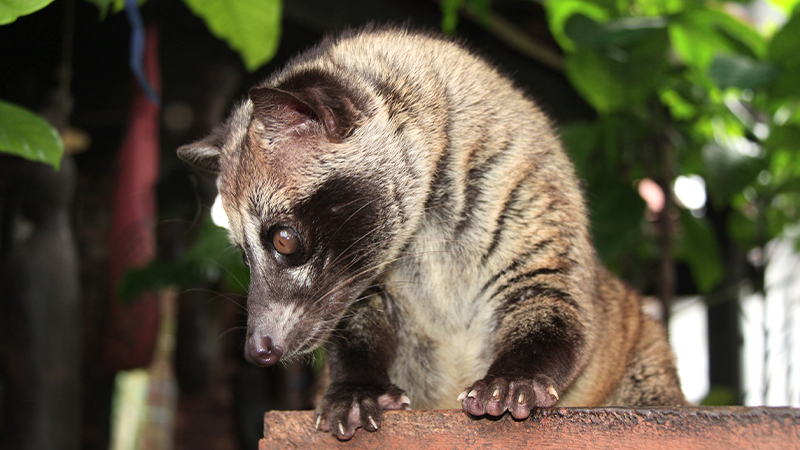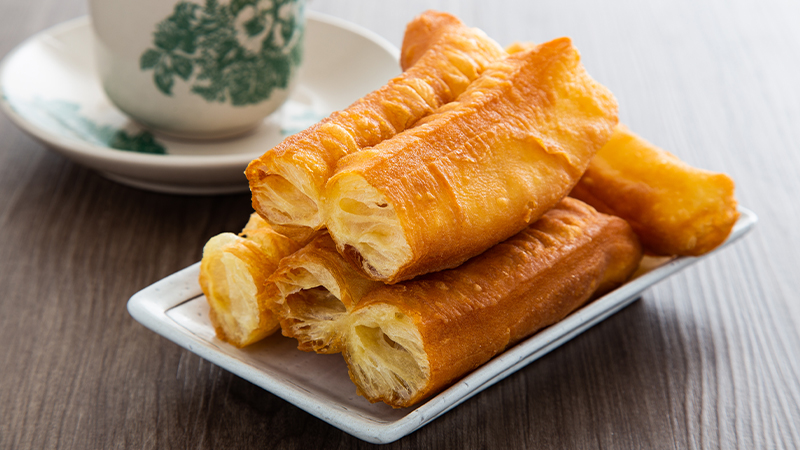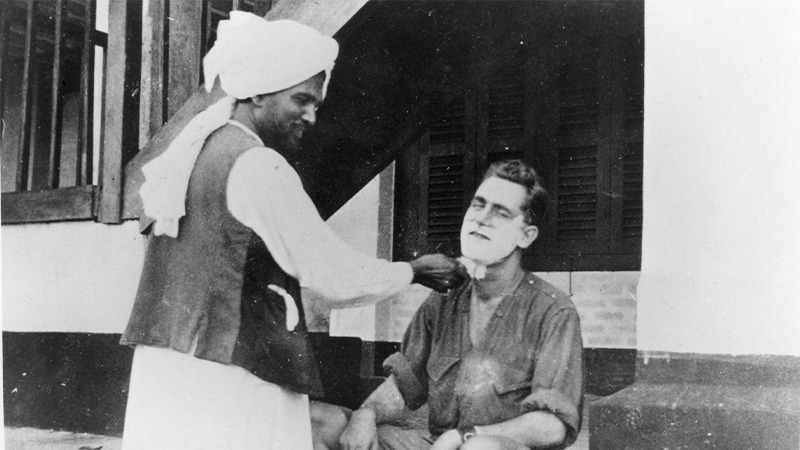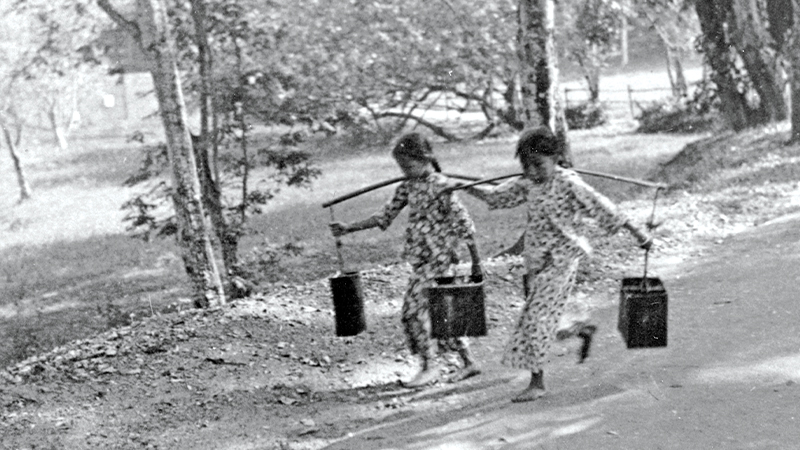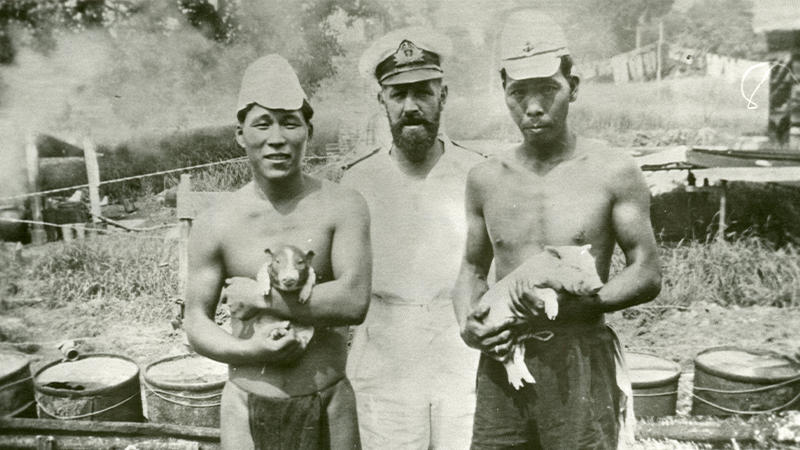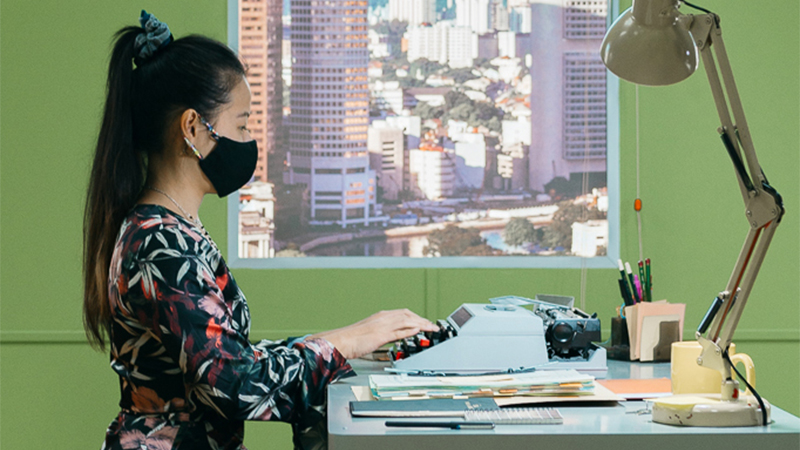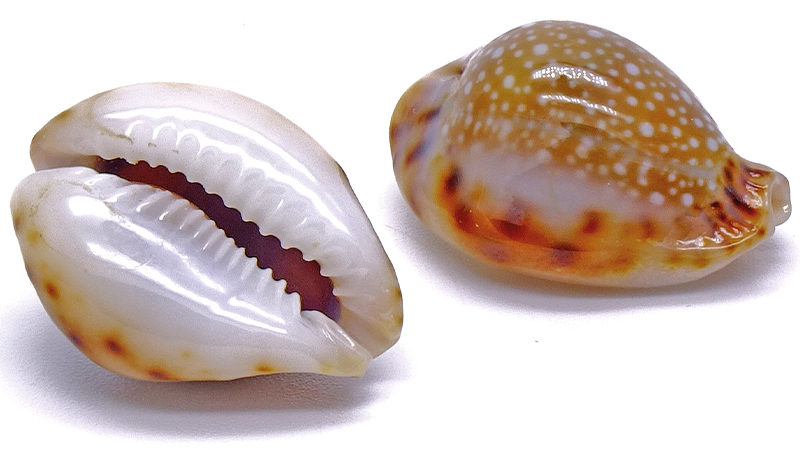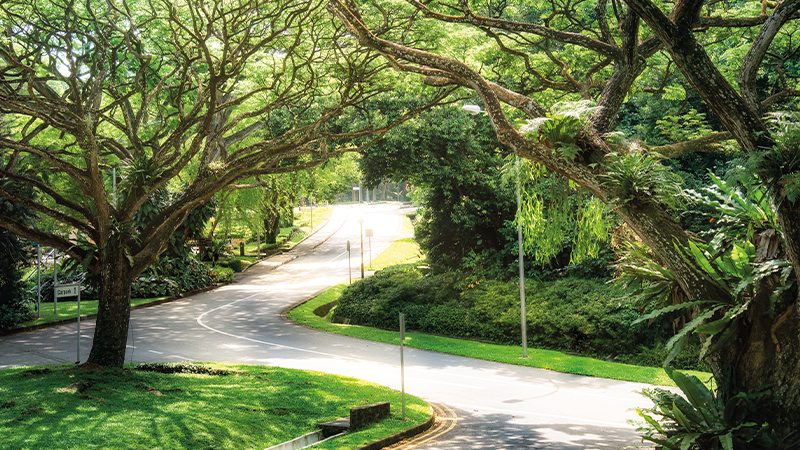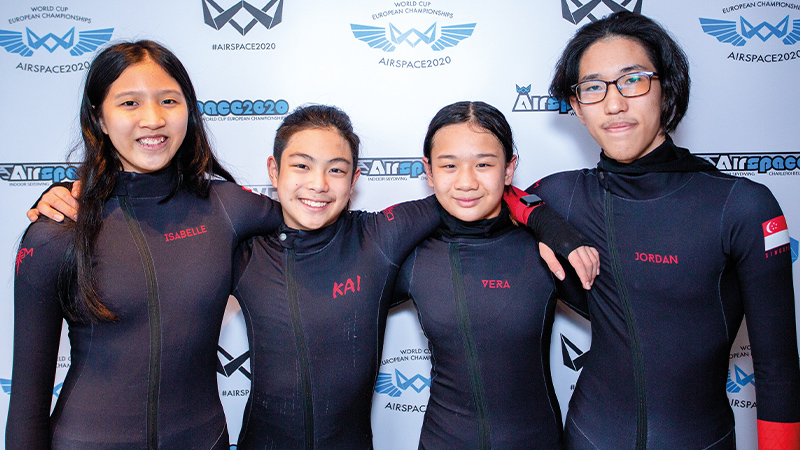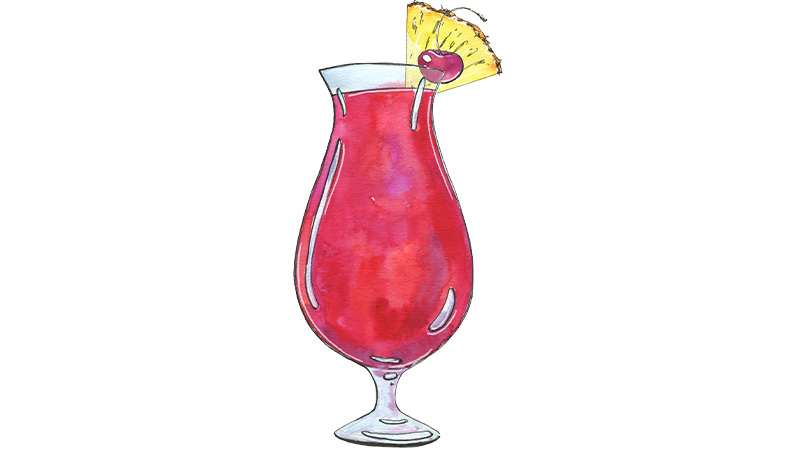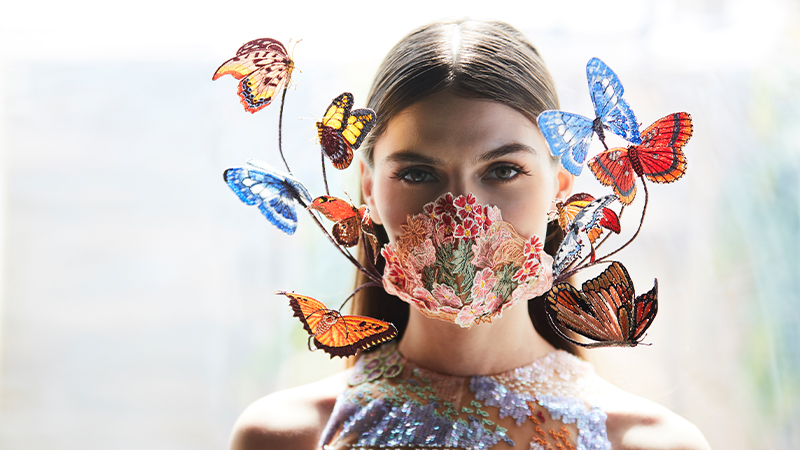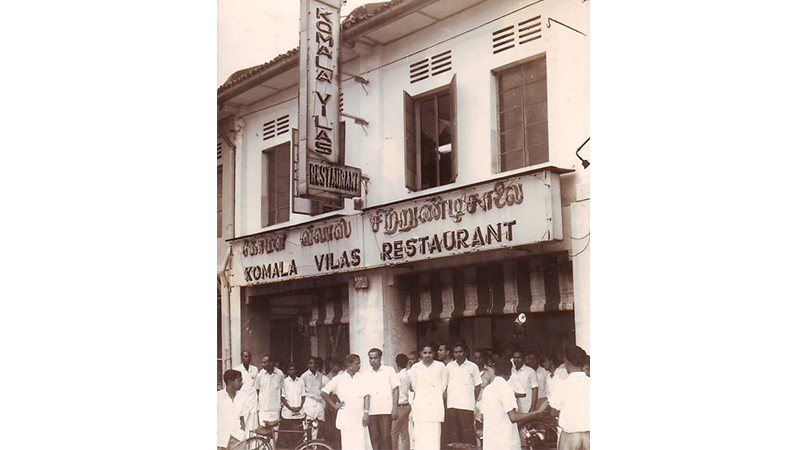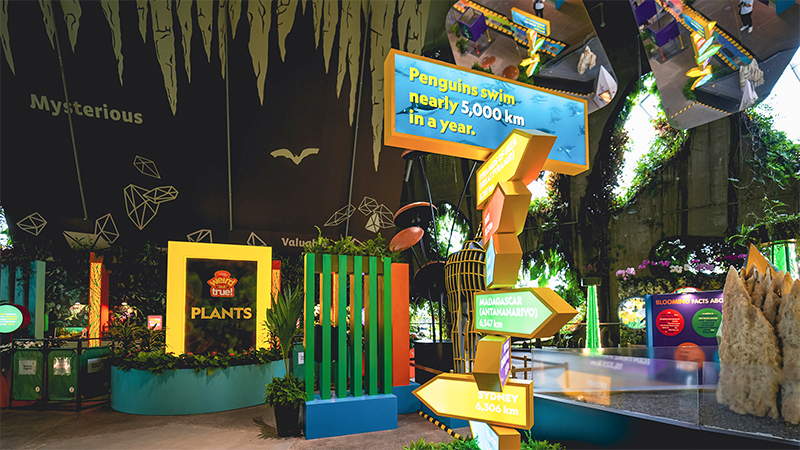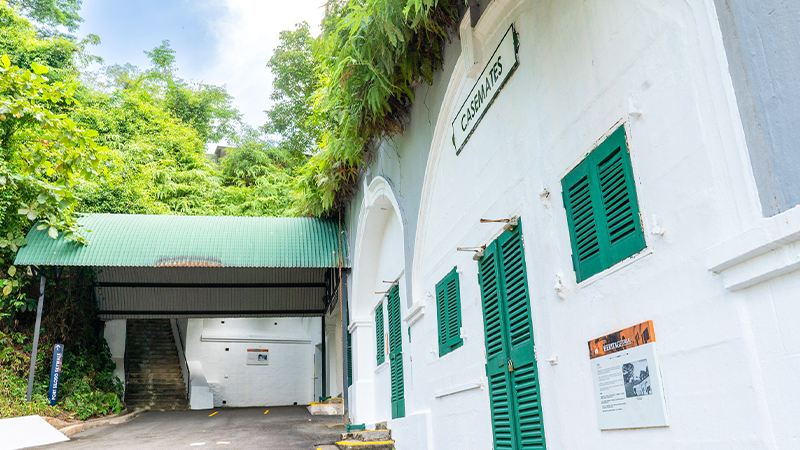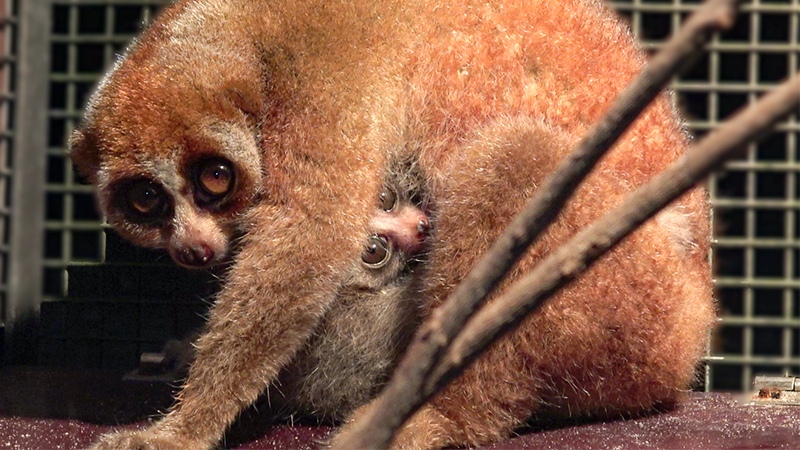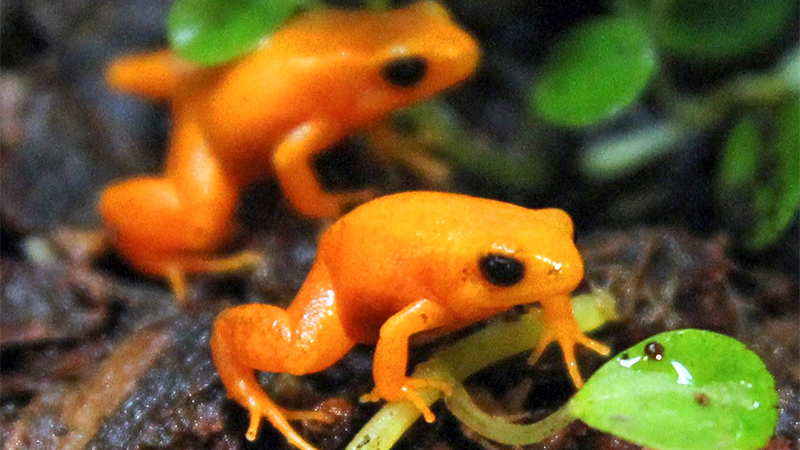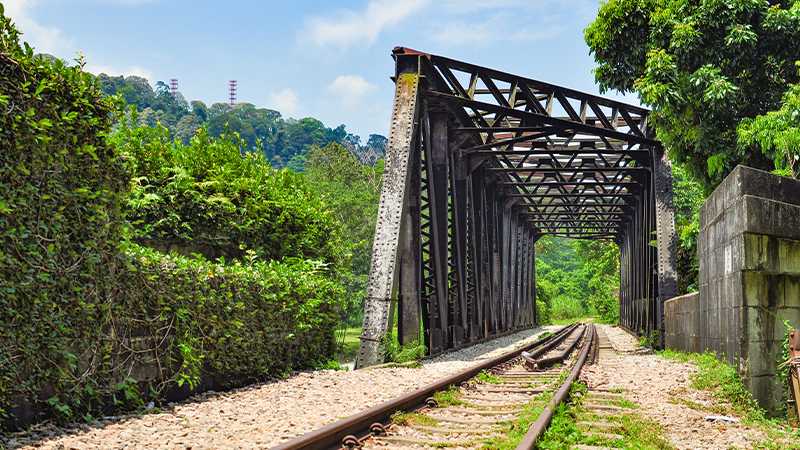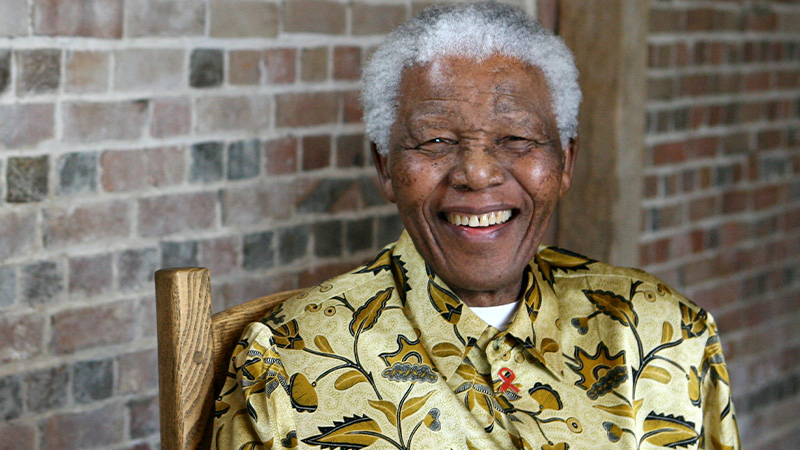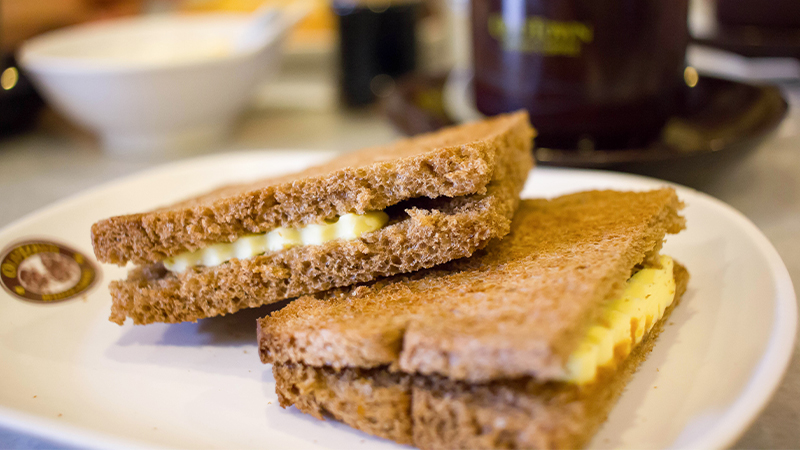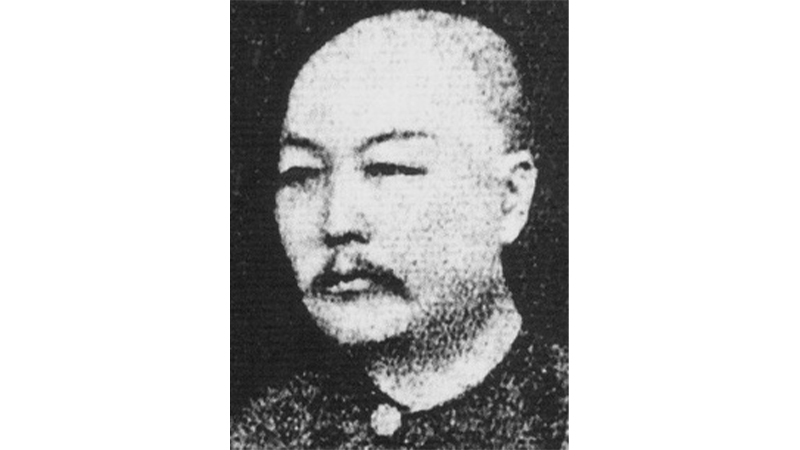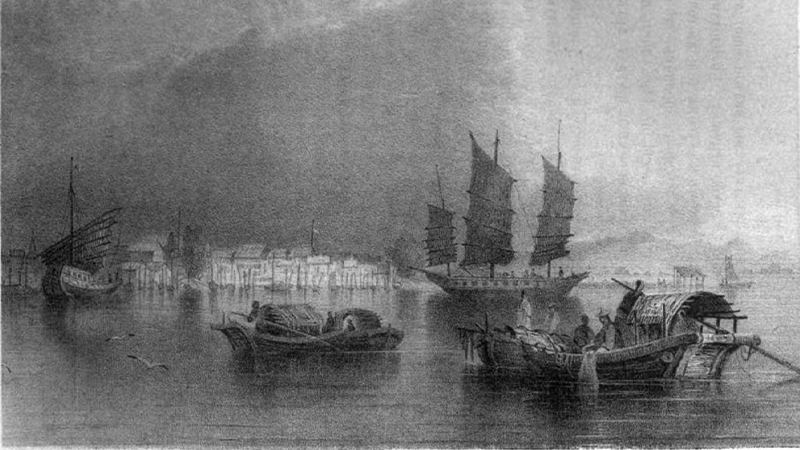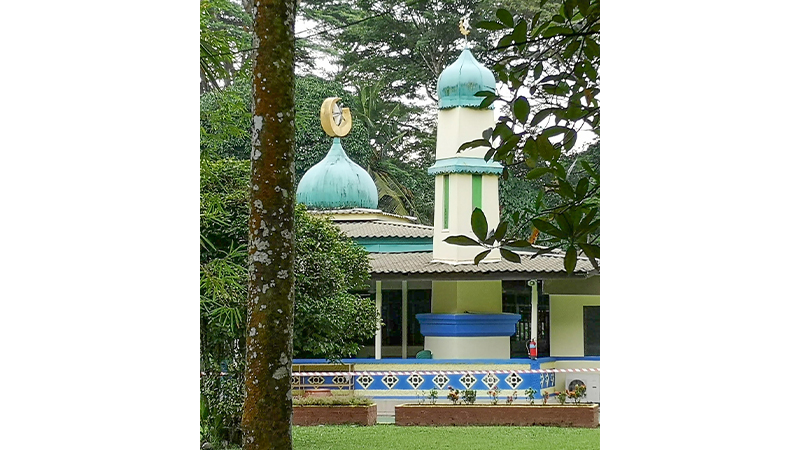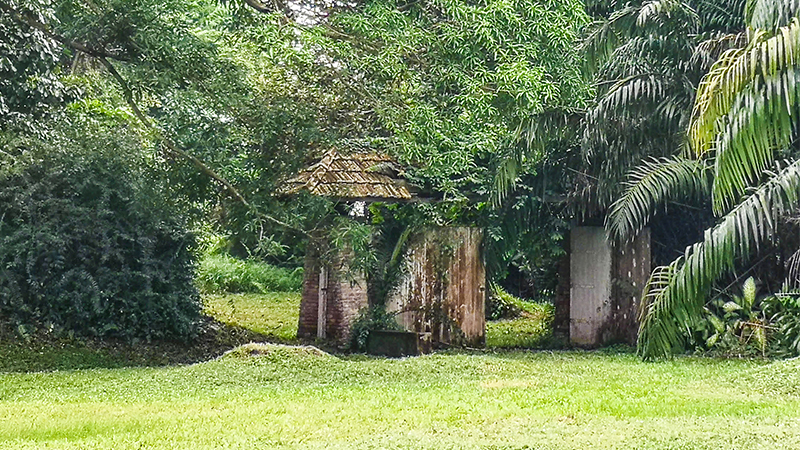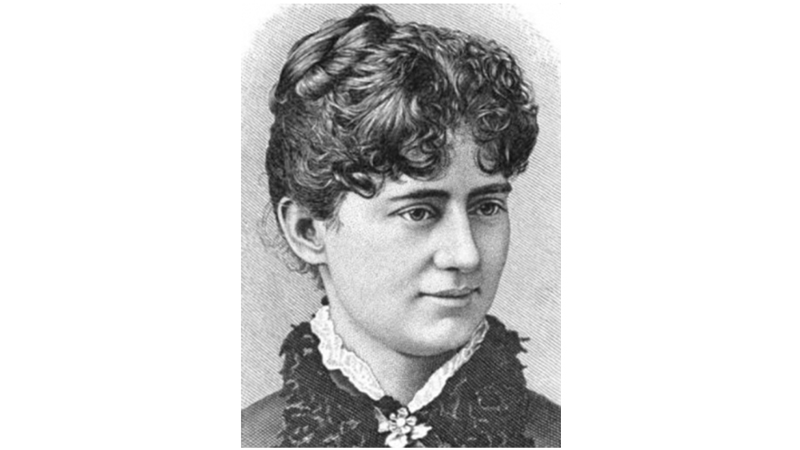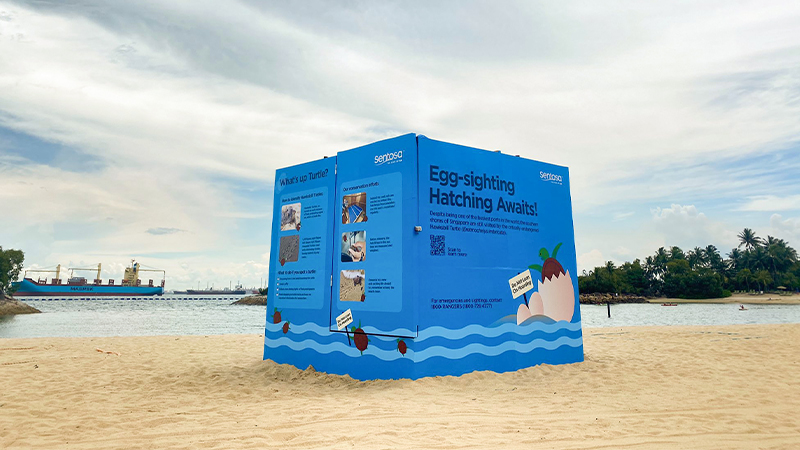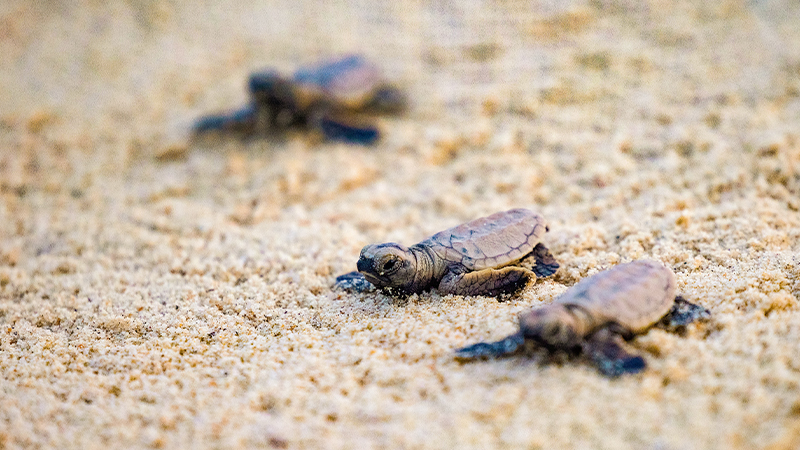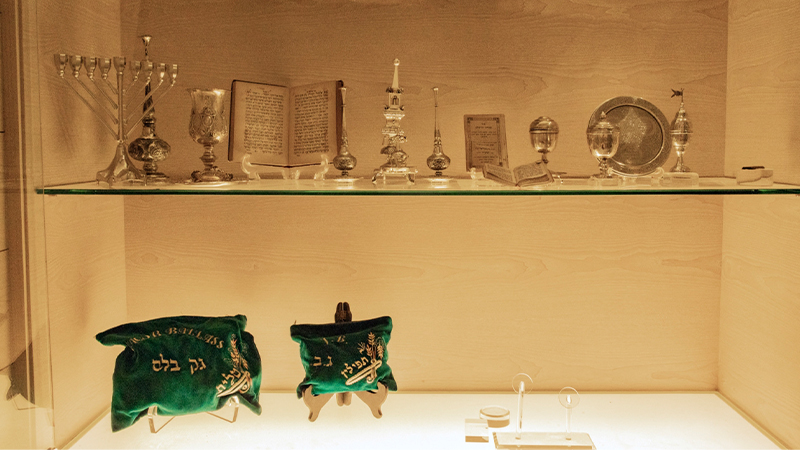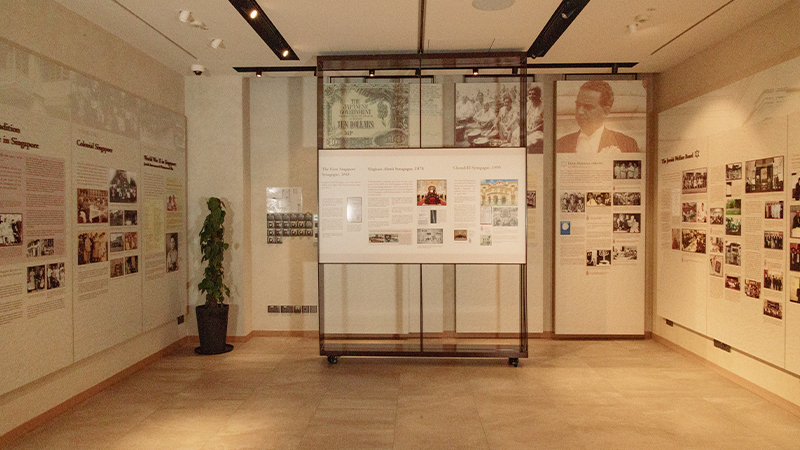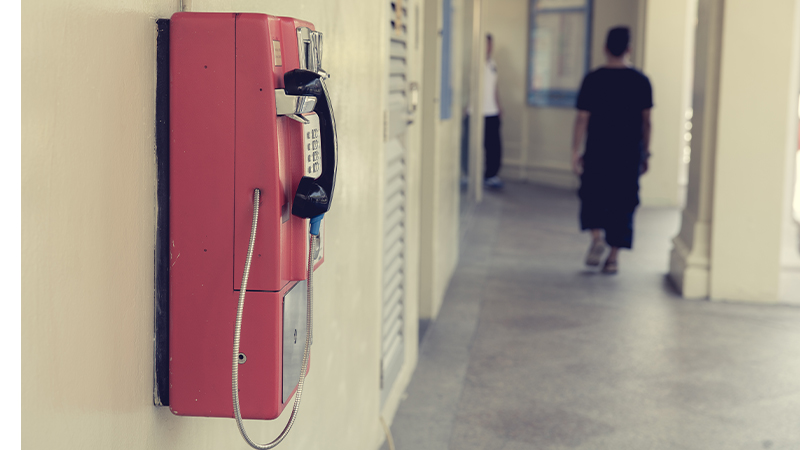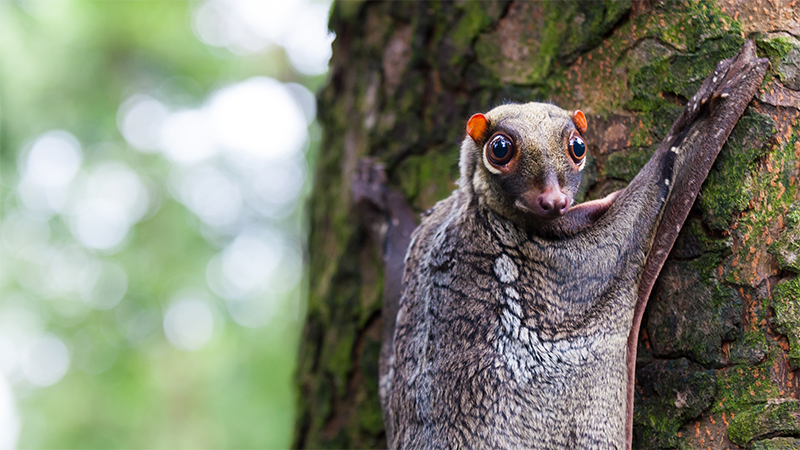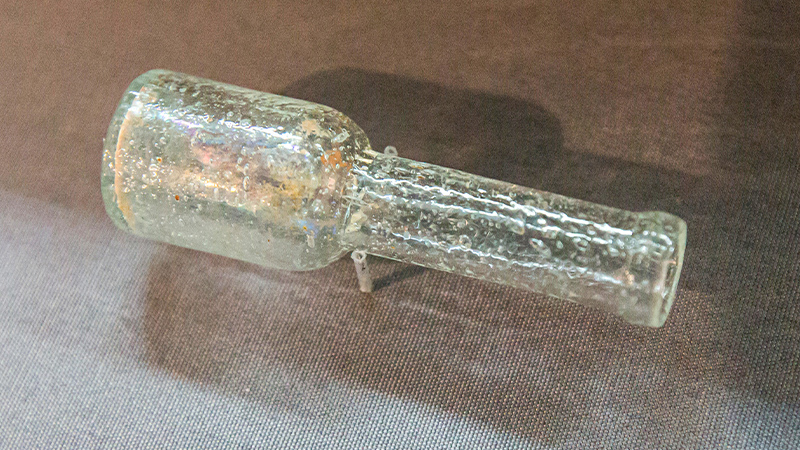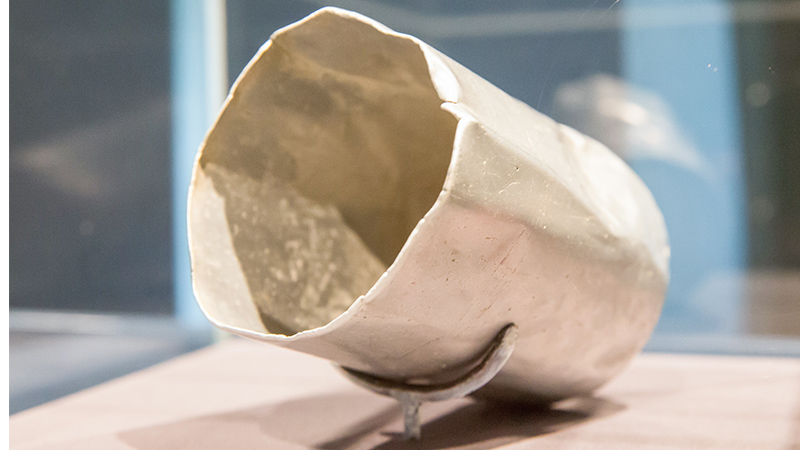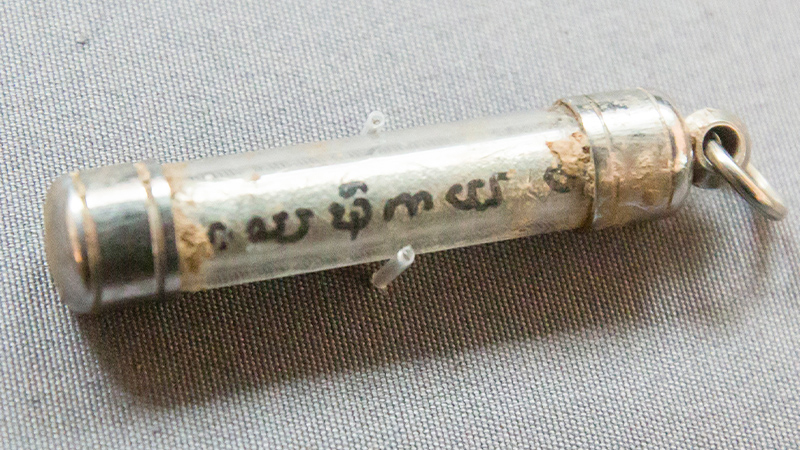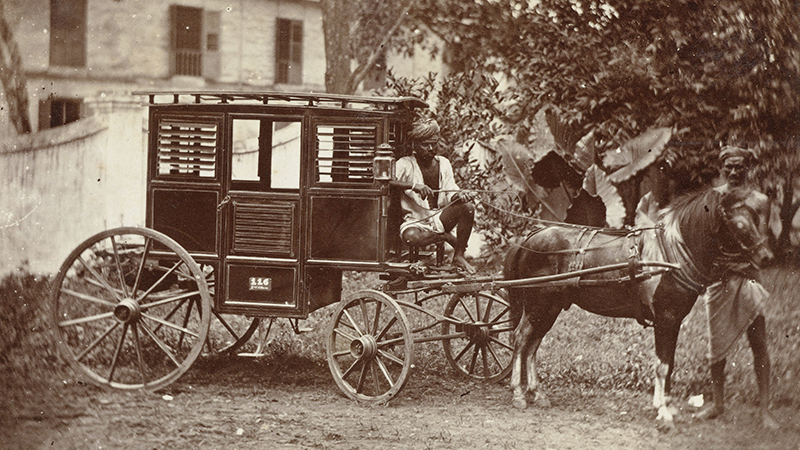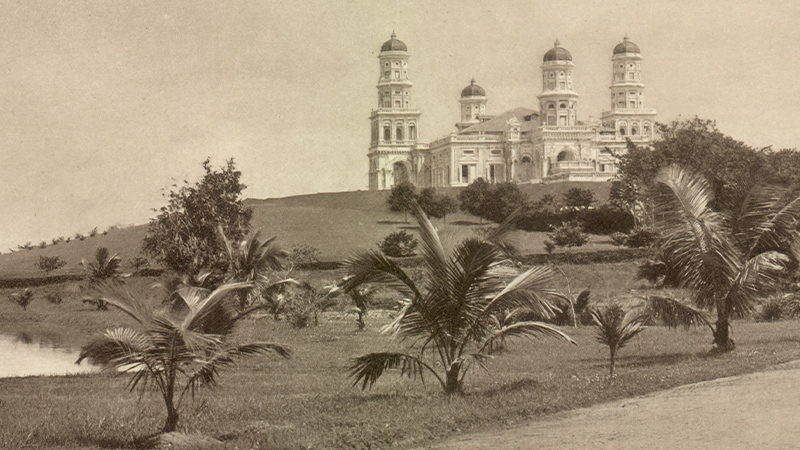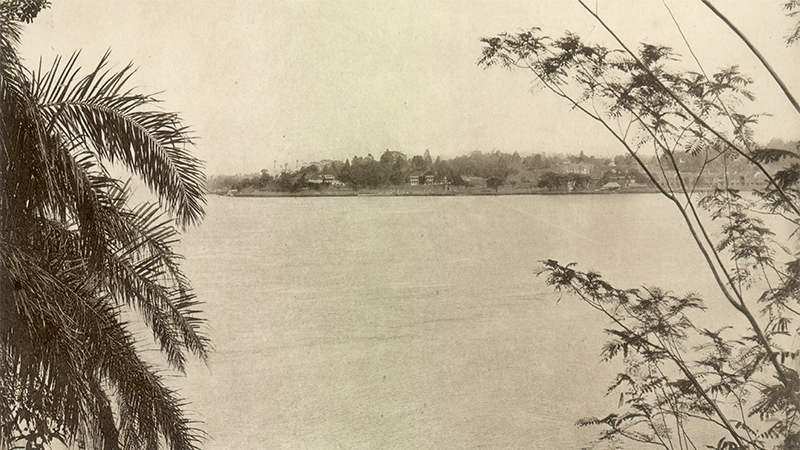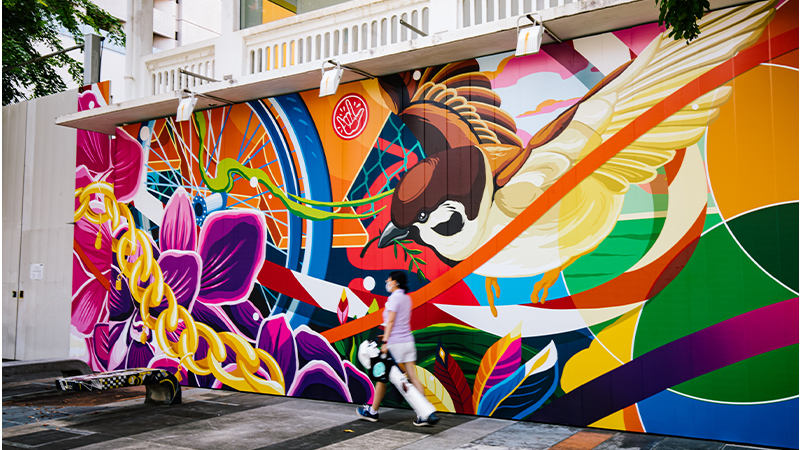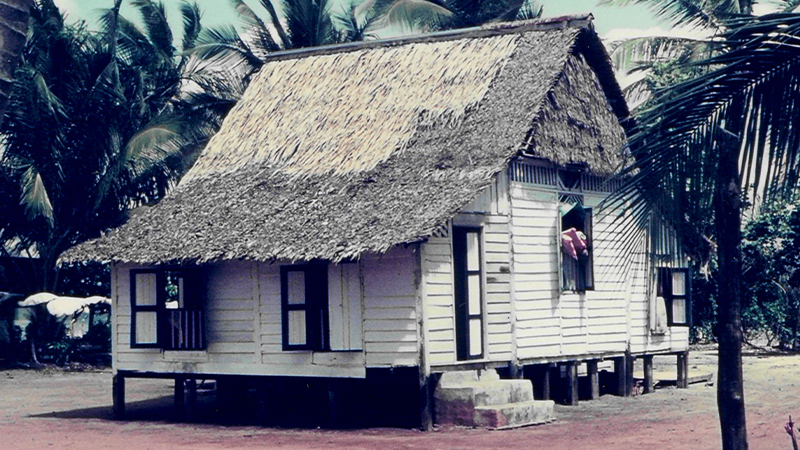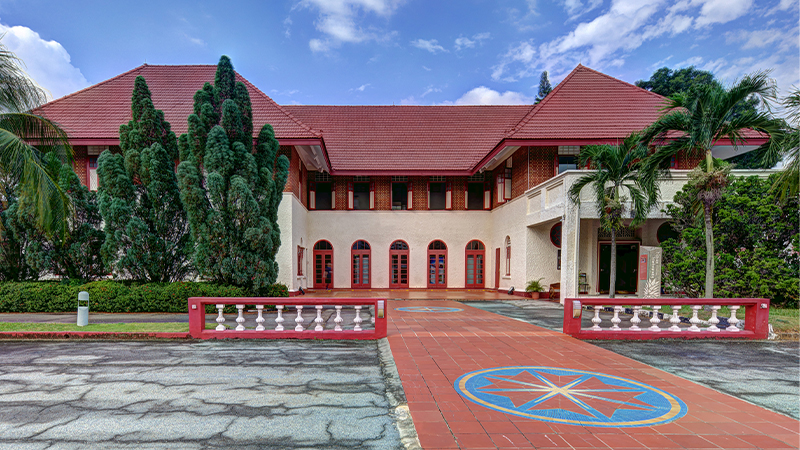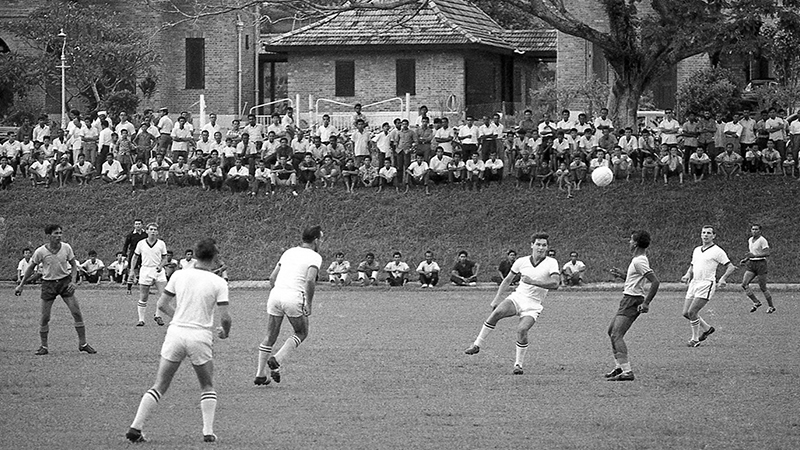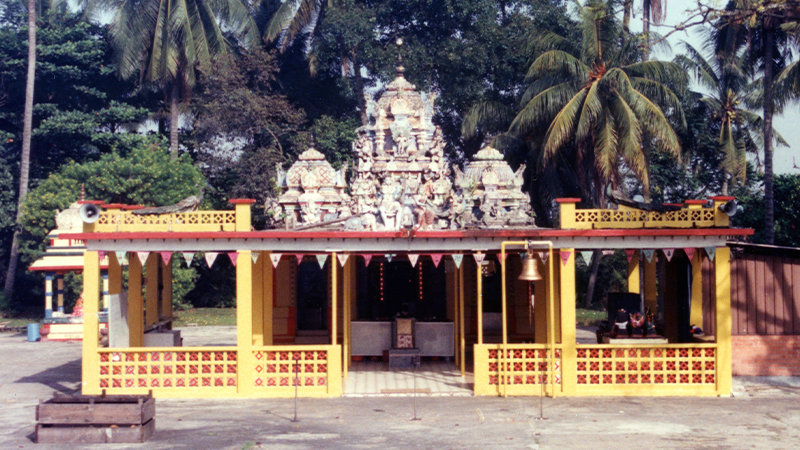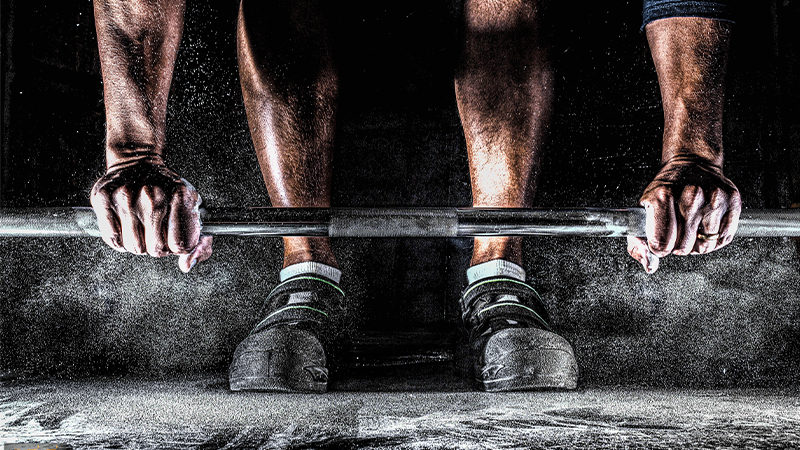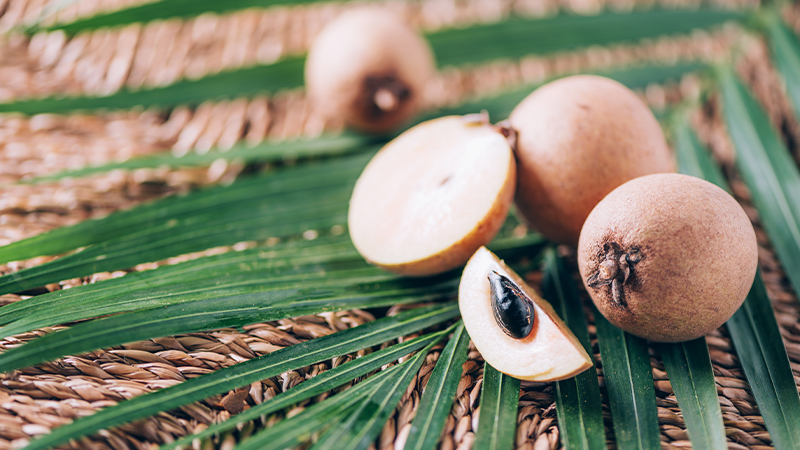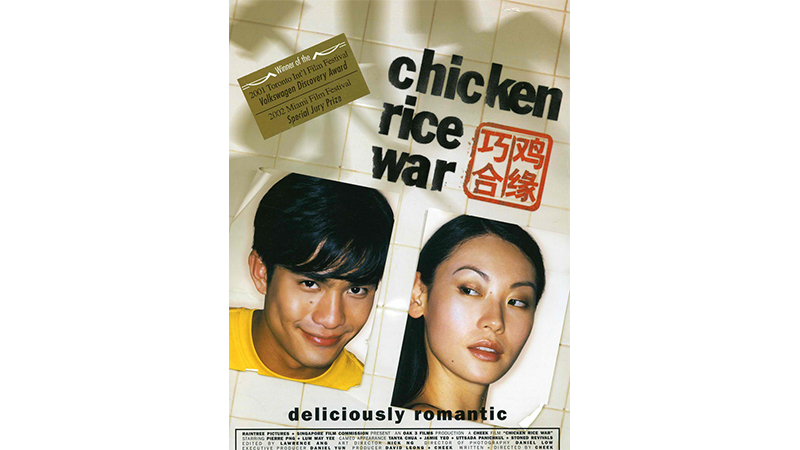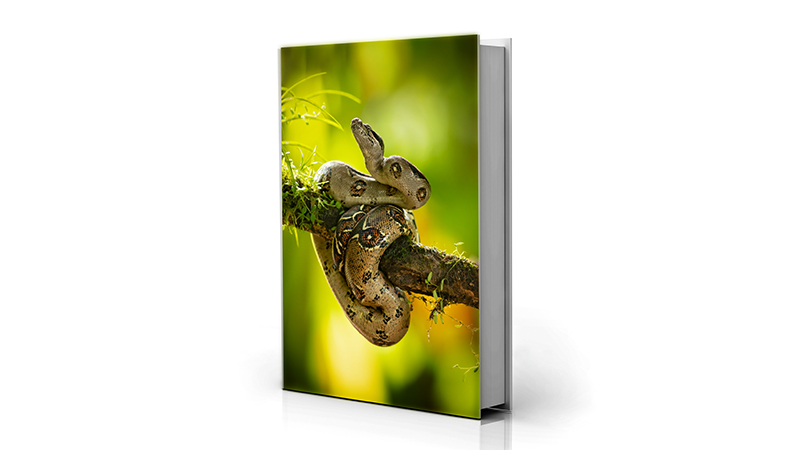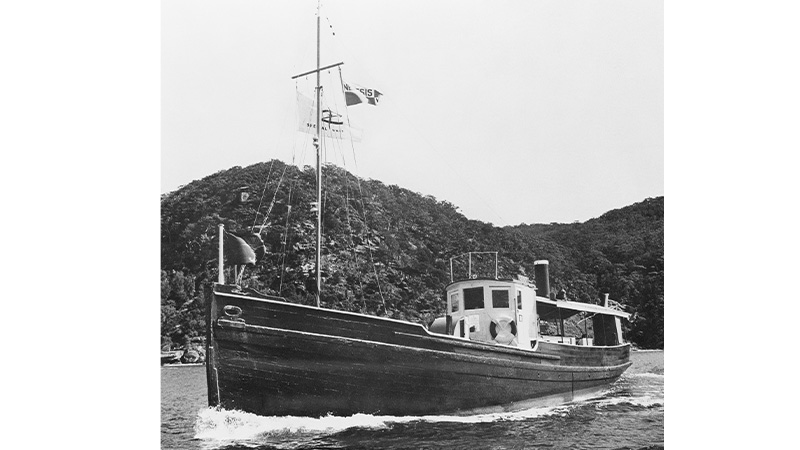Our regular feature “The Singapore Pages” in our monthly Expat Living print magazine covers the history of Singapore up to current events, plus fun and interesting facts about Singapore, the island’s food and culture, and much more.
5 Things to Know About the Sisters’ Islands
#1 The two islands are located around 2.5km south of Sentosa, and 1km west of St John’s Island. Big Sister’s Island (Pulau Subar Laut in Malay) is approximately five or six football fields in area, while Small Sister’s Island (Pulau Subar Darat) is half that size.
#2 Together, they form part of the Sisters’ Islands Marine Park, which is Singapore’s first marine park. It was designated a decade ago in 2014 and covers an area of 40 hectares.
#3 Sisters’ Islands Marine Park has been closed for three years for rejuvenation works, but it reopened on 28 October. The bigger island is once again accessible to the public, while the smaller island remains closed for conservation and research. One new and notable feature on the bigger island is Singapore’s first floating boardwalk. Designed to rise and fall with the tide, it allows visitors to catch a glimpse of corals and marine life regardless of the tide levels. There’s also a new coastal forest trail on the island, a short 230m route with wildlife-spotting opportunities.
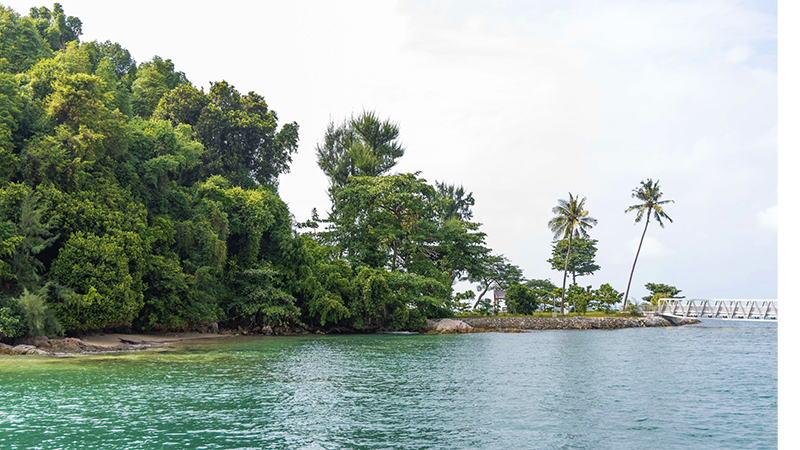
#4 The two islands are separated by a narrow but deep and dangerous channel that gave rise to the legend behind their names. The story goes that Minah and Linah, two pretty daughters of a poor widow, vowed to marry two brothers so they could always live together. When Linah was snatched away by a pirate chief, Minah swam after the boat but was swept away by a wave. Seeing this, Linah broke free and hurled herself overboard. A huge storm ensured, and when it cleared, two islands stood in the waters where the girls had drowned.
#5 Happily, there is safer swimming available on Big Sister’s Island, with two lagoons accessible for families and children for having a splash. Keep an eye out for the likes of sea cucumbers, crabs, starfish and even the occasional (harmless) reef shark.
Did you know? National Parks this year unveiled plans to designate a second marine park in the future, in the waters around Kusu and Lazarus, each home to around 100 coral species. Singapore’s reefs have almost half the number of coral species as Australia’s Great Barrier Reef, despite being 10,000 times smaller in area. Ferries depart daily for the Sisters’ Islands from Marina South Pier, with a return trip via Kusu/St John’s.
Return of the sponge!
Speaking of the islands off the south coast of Singapore, here’s a story about sponges… In 1822, the giant sea sponge Cliona patera was discovered. Thanks to its thick stalk growing out of the seabed, it resembled a wine glass – and it was nicknamed “Neptune’s cup sponge” in reference to the Roman god of the sea. People would harvest these sponges and, because of their size (a metre high and wide), use them as baby baths!
Then they just disappeared. For over a century, they were thought to be extinct, until in 2011, when marine biologists discovered two healthy-sized specimens within 50 metres of each other off the coast of Singapore’s St John’s Island. Today, the battle is on to protect this rare and critically endangered species.
A Singapore Christmas, 1895
For expats accustomed to a White Christmas, celebrating the 25th of December in the tropics can take some getting used to. And it’s always been the way! Here’s an excerpt of an article from the 1895 edition of US literary magazine The Overland Monthly, written by then editor-in-chief, American journalist Rounsevelle Wildman, who was based in Singapore at the time.
“We went to church at half-past ten. The weather was intensely hot, and yet we drove to the great English cathedral [St Andrew’s] on the Esplanade, and braved the blinding glare of the sun, just to keep up a simulation of the Christmas we observe in distant homes. Our ordinary garb of pure white linen and cool cork helmets we had discarded for woollen suits – so hard did we try to delude ourselves into a familiar Christmas feeling.
The night before, on Christmas Eve, I saw a hundred or so men – rich ship-owners, high officials – try to do the same thing. Their wives were at home in England or Germany, recuperating after a long term in the Orient. Those that had no wives were younger sons and brothers. All had met at the club to spend Christmas Eve.
In the center of the room was a casuarina decorated with candles, toys, candies and penny balloons; just such a tree as they would have gone into raptures over in their childhood. At its foot were the presents.
An orchestra played outside under the wide-spreading arms of a great banyan tree, and spotlessly dressed Chinese boys circled about with refreshments. Songs were sung, everyone cheered and slapped each other on the shoulder, and yet everyone knew that it was a pitiful failure.
Between laughs, faces grew grave, and faraway looks filled tired eyes. They were wondering what wives, mothers and friends were doing on that night in the blessed land of the snows…
Later, at a dinner gathering, Wildman finally seems to find some peace in the fact that spending Christmas in Singapore is very different to “back home”. That night, thirty of us met to eat a Christmas dinner. There were no great fires of blazing Yule logs; no mistletoe, no snow beating against window panes, no passing sleigh-bells; none of the vigorous and bracing winter sounds with which we of the Northern Zone were familiar.
But there was an ethereally beautiful sky, studded with innumerable stars and jewelled with the Southern Cross.
There were mild breezes, heavily laden with the intoxicating perfumes of the profuse tropical life outside, and the soft cooing of the ring-dove in a hibiscus bush nearby. There was a realisation that on such a brilliant night, the first Christmas was celebrated on this same continent, and not amid the longed-for snows and ice of our native land.”
In the same article, Wildman lists the Christmas presents he received from a visitor to his Singapore home:
- A leg of Shanghai mutton
- Pisangs (bananas), mandarins, pomelos and “a peck of mangoes fresh from Bangkok”
- A box of Manila cigars
- Two bottles of water (imported from Florida in the US)
- A big English almond cake
- A tin box of sweets
Who was Wallace?
If you’ve had a wander in Dairy Farm Nature Park, then you’ll have been to the Wallace Education Centre, and likely strolled along the Wallace Trail. These two places are named for British naturalist Alfred Russel Wallace, one of the biggest minds of the 19th century! Here are five interesting things about him.
#1 Born in 1823 in Wales to English and Scottish parents, Wallace worked first as a surveyor, teacher and engineer, before beginning his many travels to chronicle the natural world. His first trip (1848-1852) took him to South America, but he lost nearly all of his specimens and notes in a fire on his ship when heading home.
#2 The Far East beckoned, and Wallace arrived in Singapore in 1854, using it as a base for eight years while studying wildlife across Southeast Asia. In that time, he collected an incredible 125,000 different insects and birds – and up to 5,000 were completely new to science! His studies included the jungles of Bukit Timah and today’s Dairy Farm Nature Park, where he found 700 species of beetle alone.
#3 If he’d timed things a bit better, Wallace may today be associated with the theory of evolution rather than Charles Darwin. The two men were acquaintances and amazingly developed similar theories around natural selection at the same time. In fact, a letter from Wallace to Darwin may have sparked the latter into more quickly publishing his famous work On the Origin of Species.
#4 Wallace was perhaps the first person to refer to the durian as “The King of Fruits” in writing, praising it in his journals for its appearance, texture, flavour – even smell!
#5 Wallace was an incredibly prolific writer, penning 22 books and 747 shorter works in his lifetime. One book, Man’s Place in the Universe (1904), is considered the first detailed attempt by a scientist to consider the likelihood of life on other planets.
Did you know? The Wallace Education Centre is located in a converted cow shed. Around 800 cows were once reared in this part of Singapore (hence “Dairy Farm”)
A church in Bukit Timah
Just north of Dairy Farm Road is St Joseph’s Church, a striking Gothic Revival-style church built by Portuguese missionaries in the 1850s (and one of two churches with the same name in Singapore – the other St Joseph’s is in Victoria Street in the city). Outside is a shrine to Our Lady of Fatima; inside, Portuguese tiles known as azulejos can be found, and the interior arches are painted blue, in contrast to the white walls and red carpet.
When it was built, Bukit Timah was smack dab in the middle of the jungle. While this location made life difficult for the Catholic priests who had to deal with marauding tigers and also gangs and robbers, it was ideal for an enthusiastic scientist wanting to explore the flora and fauna of the area. And that’s exactly why Alfred Russel Wallace (above) used it as his Singapore base. He stayed at the church with a French Roman Catholic missionary, taking daily forays into the hilltops to find new insects and birds.
An unwanted wake-up call…
Being woken by an alarm clock in the morning is never a pleasant thing, but at least you can just roll over and switch it off. For the past three or so weeks, however, one member of the EL team has been woken every morning between 4.45 and 5.30am by the “extremely loud and annoying” call of a bird outside her window – and with no “off” switch in sight!
The culprit? An Asian koel (Eudynamys scolopaceus). This large cuckoo bird takes the name “koel” from a Hindi onomatopoeia for its call, which is variously described as a “koo-ooo” or “oo-woo” sound.
The males are blue-black with a crimson eye, while the females have a streaked or spotted body of white and brown. Like other cuckoos, the Asian Koel is what’s known as a “brood parasite” – it lays its eggs in other birds’ nests, then relies on those birds to care for the babies until they’re old enough to fly away. In Singapore, koels usually choose crows’ nests for their purposes. (As terrible as the behaviour sounds, it does help to keep the crow population in check here!)
If your mornings are also being disrupted by an Asian koel, sadly the problem is unlikely to just disappear. For one thing, they are listed as a species of “least concern” from a conservation standpoint (i.e., there are loads of them!); and they’re also protected in Singapore under the Wild Animals and Birds Act, with a $1,000 fine for killing, taking or keeping one.
If you’re desperate, there is a “hack” that can apparently help stop the sound. Several online commentators suggest finding a recording of a koel’s call (try YouTube) and then playing it through a speaker out your window at the same time the bird starts its morning ritual. Because of its territorial nature, your feathered friend will more than likely fly away. Repeat the process a few mornings in a row, and there’s a chance it will be gone for good.
Did you know? According to the National Parks Board (NParks), in the period from 2016 to 2020, around 4 percent of all feedback received by the board from members of the public concerned the noisy Asian koel!
Ubin’s elephant
In the September 2024 issue of Expat Living magazine, we brought you the story of Singapore’s last wild tiger that was shot and killed in 1930. Yet residents of Pulau Ubin thought the animal had made a comeback six decades later when they heard suspicious roaring sounds coming from the island’s forests in late February 1991.
It wasn’t a tiger, though – it was Elephas maximus; an Asian elephant! On 1 March, a villager from Ubin was whacked in the head by the animal’s trunk while praying at a shrine. (He was later admitted to hospital with minor injuries.) Two days later, some French birdwatchers sighted the elephant, which again showed signs of aggression. On 6 March, teams from the Singapore Zoo and the Malaysian Wildlife Department tracked the elephant and tranquilised it. They then used two trained elephants from Malaysia to help coax the escapee onto a barge. It was later released into a national park in northern Johor.
So, how did the elephant get to Ubin? It swam across the Strait of Johor! While it sounds unlikely, elephants are capable swimmers as they’re very buoyant and can employ their trunks like snorkels. Using a dog-paddle-style stroke, they can swim for several hours and even cover distances of up to 20 or 30km.
The Ubin incident followed one from the previous year when three Asian elephants swam to Pulau Tukong, Singapore’s second-largest outlying island. Tukong is used for military training – it was national servicemen who spotted the trio. In all likelihood, the elephants had been displaced by deforestation in eastern Johor and were looking for a fresh habitat.
While members of the public expressed a desire for the animals to be left alone, authorities feared that live firing during training on the island would cause stress; in an agitated state, the elephants could be dangerous to humans.
In June 1990, the three elephants were tracked and tranquilised, and then returned to Malaysia.
Other surprise visitors
There have been more unusual animal guests in Singapore recently, including a Malayan tapir, which last year was filmed running along the Punggol Park Connector at night. Officials from ACRES (Animal Concerns Research and Education Society) believe that, like the elephants, it swam across from Johor.
Also last year, a great slaty woodpecker was spotted on a fleeting visit to the Singapore Botanic Gardens. The grey bird is the world’s largest woodpecker – it can stand over half a metre tall. It had only been seen in Singapore three times before.
Spooky Sentosa
If you’re making your way to Sentosa for Halloween festivities – perhaps for the annual Universal Studios “Halloween Horror Nights” party – it’s worth remembering the island has a scary past. It used to be called Pulau Blakang Mati, which translates roughly as “island of death from behind”.
While some researchers connect this to a period when piracy (and murder!) was rife, others pinpoint a huge malaria outbreak in the 1840s, which nearly decimated the population of original settlers. At the time, the deaths were blamed on “Blakang Mati Fever”, believed to stem from the island’s swampy water and decaying leaves. Only later were mosquitos found to be responsible.
The dark times continued on Sentosa during World War II, when it witnessed executions and was the site of a prisoner-of-war camp for 1,000 allied troops.
Things changed in the post-war period, as the civilian population grew, and fishing and camping enthusiasts from the mainland were drawn to Blakang Mati’s quiet coast. The seeds were being sewn for its complete reinvention as a tourist destination and leisure park in the 1970s and beyond.
Sentosa was given its current moniker in 1972, after the Singapore Tourist Promotion Board held a contest to replace the existing name. The winner was something far removed from its scary past: sentosa is a Malay word that means “peace and tranquillity”.
End of an Era
October 2024 marked the closure of the Singapore Turf Club, with the final race meeting taking place at Kranji on 5 October. Here’s a quick look back at the 182-year history of horse racing on the island.
#1 The earliest iteration of the Singapore Turf Club was opened by a Scottish merchant, William Henry Macleod Read, on 4 October 1842. It was known as the Singapore Sporting Club (SSC).
#2 The first race course was built over four months on swampy land in what is today’s Farrer Park. Of course, Race Course Road in Little India takes its name from its proximity to the original course.
#3 The first race was held on 23 February 1843 to mark the 24th anniversary of Stamford Raffles’ founding of Singapore. Called the Singapore Cup, it was won by none other than club founder William Henry Macleod Read! (He also organised Singapore’s first ever rowing regatta in the same year…)
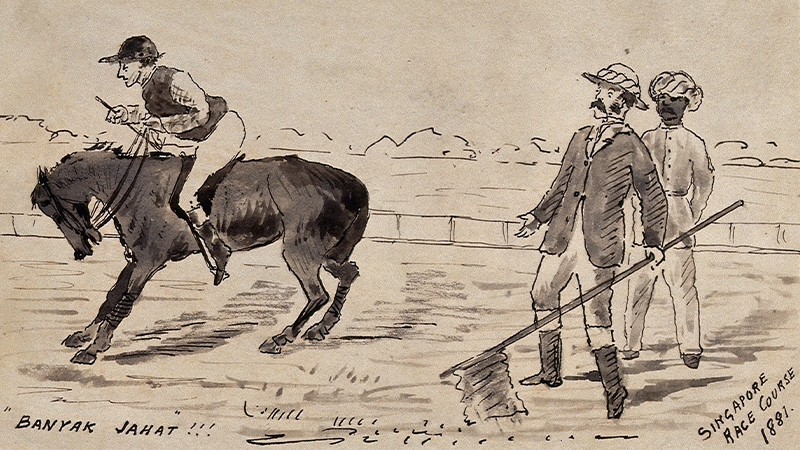
#4 After the SSC was renamed the Singapore Turf Club (STC) in 1924, it moved from its Farrer Park location to Bukit Timah in 1933, to a former rubber plantation. Opened by Sir Cecil Clementi, the three-storey grandstand was designed by the architects of Raffles Hotel, and included 2,000 armchairs made of teak.
#5 Aside from a period in World War II when the grandstand became a hospital, the STC operated at the Bukit Timah location until 1999. Queen Elizabeth II visited in 1972 (and watched a race held in her name), and English singer Rod Stewart played in front of 8,000 people there in 1995.
#6 In 1999, Kranji became the new home for the Singapore Turf Club. Opening day on 4 March 2000 featured a $3-million opening race won by the only Singaporean jockey in a field of 14! It was the first Singapore horse race broadcast live worldwide.
#7 The Kranji closure was announced in June 2023; the land will be handed back to the government in 2027 for redevelopment. Meanwhile, the former Turf Club at Bukit Timah is also set for redevelopment, after operating from 2002 to 2023 as retail hub and leisure centre Turf City.
Did you know? Apart from hosting horse racing, the original race course at Farrer Park also played a role in Singapore’s aviation history. On 16 March 1911, the island’s first manned flight took off from there – a Bristol Boxkite biplane piloted by Belgian aviator Joseph Christiaens.
Tigers in Singapore
The Malay prince Sang Nila Utama is said to have founded Singapore in the 13th century and given it the name Singapura – “Lion City” – after seeing an impressive wild animal on the island. The sighting came during a hunt on a patch of open ground near the river – today’s Padang. The animal was described as having a red body, black head and white breast. When the prince was told by his chief minister that it was a lion, he was pleased, believing it to be a good omen. That’s when he decided to build a new city.
The animal was in all likelihood a Malayan tiger. While lions aren’t believed to have spread further east than India, the tiger population in Singapore was considerable in the past. (They got here by swimming across the Strait of Johor.) In fact, they were something of a menace in the 19th century, with regular reports of attacks on people. The first newspaper story of a civilian death by a tiger was in 1831. A few years later, the Irish architect GD Coleman – he built the Armenian Church that still stands today – was attacked with a group of workers while constructing a new road in the jungle. By the 1850s, it was estimated that 200 people were killed by tigers in Singapore each year. A village in the vicinity of Bukit Timah had to be entirely abandoned because it was too dangerous to live there.
Eventually, the government stepped in and offered a reward for killing tigers. This began at $20 but soon went up to $150 per animal. Hunting tigers became seen not only as a sport but also as a chance to make money. The result, of course, was a rapid decline in tiger numbers – and attacks.
An iconic story says that 1902 saw the last tiger killed in Singapore – in the Bar & Billiard Room of Raffles Hotel, no less. It had escaped from a nearby travelling circus on Beach Road. In fact, wild tigers continued to be found – and hunted – on the island for almost three more decades. The last official report of a big cat shot and killed was in October 1930, in Choa Chu Kang.
Did you know? The Singapore coat of arms honours both the legendary founding of the Lion City, and the prevalence of the Malayan tiger in times gone by, as it shows a shield being held up by a lion on the left and a tiger on the right.
Historic Hut
In today’s app-driven world, the first step to getting a taxi in Singapore is to pull your smartphone out of your pocket.
Things used to be different, of course – and some visible evidence of this can still be seen in a small estate off Upper Thomson Road. Sembawang Hill Estate on Jalan Leban is home to a hawker centre, a petrol station and a modest collection of shops and restaurants. It also has this small hut that we photographed while in the area recently, which is signposted “Sembawang Hill Estate Taxi Services”.
The hut, consisting of red bricks, timber panels and glass louvres, was built over half a century ago. Two original benches that sit outside the structure today date back to 1968 and include a telephone number of just five digits: “59924”. (Singapore phone numbers didn’t have eight digits until the mid-1990s.)
Taxi drivers would have congregated at the hut in the past, either to wait to get a booking from people phoning in, to pick up customers who walked by the hut looking for a lift, or to socialise between jobs.
Apparently, the petite building is still maintained by a group of drivers today (it has its own letterbox at the front door, and has been strewn with some colourful lanterns and decorations).
There are more taxi services huts in Singapore, including the Boon Lay Garden Radio Taxi Service, which was popular with people looking to travel further afield than normal – to Tuas, for example, or into Johor – and another at the corner of Clementi Road and Ulu Pandan Road.
NDP Firsts!
The National Day Parade, held on 9 August each year, has changed a lot over its long history. Here’s a look back at some innovations.
- 1966: The first ever National Day Parade – it was held on the Padang
- 1970: The Singapore Air Force performed its first NDP flypast
- 1973: The show moved from a regular morning time slot to afternoon/evening
- 1984: The first fireworks display was held
- 1989: The Red Lions parachute team debuted
- 2003: An electronic ticketing ballot was introduced because of overcrowding
- 2007: The NDP was held for the first time on the Marina Bay Floating Platform
- 2014: The Red Lions team featured its first female jumper
- 2015: The first NDP without Lee Kwan Yew in attendance
- 2017: The first 360-degree YouTube live stream of the NDP
- 2020: The NDP was held as a series of broadcast-only events because of COVID
- 2021: More COVID disruptions, with the parade postponed until 21 August
- 2022: The last edition to be held at The Float in Marina Bay
- 2024: The 40-year anniversary of Singapore’s national defence concept, Total Defence
New landmark
In June, a groundbreaking ceremony at Bay East Garden marked the start of work on the Founders’ Memorial, which will commemorate Singapore’s founding leaders and the key figures who played a role in the path to independence and nation-building.
Expected to open in 2028, the complex will offer an integrated gallery and gardens experience, including plant species that were planted decades ago as part of the greening of Singapore. As this rendering shows, the viewing gallery will provide some impressive views back over Marina Reservoir and to the city skyline.
A painter not a fighter
This 19th-century painting of Singapore, below, is taken from an album of watercolours and pencil drawings by Walter Spinks, who was a soldier on the survey ship HMS Myrmidon that travelled from England to Australia via Singapore and other parts of Southeast Asia in the 1880s. Spinks made other trips, too, documenting his voyages with artworks, which, like this one, were typically landscape paintings of major ports, with a focus on ships. His earlier subjects included Gibraltar, Malta, Alexandria, Port Said, Aden and Colombo. The Singapore painting has a few quirky features, including a spelling error in the caption (“Signapore”); the structure on the hill in the middle is most likely Fort Canning.
The New South Wales Police Gazette from 1886 describes Spinks as 30 years old, with a height of 5 foot 5½, a fair complexion, light brown hair and blue eyes. It also lists him as a “deserter” – maybe the pull of painting was just too strong for Spinks that he decided to go AWOL…
Bucking the trend
We recently brought you news of the explosion (metaphorical not literal!) of wild chickens in Singapore, with numbers of the free-ranging birds apparently on the rise. Another animal that is said to be growing in numbers here, albeit at a much slower rate, is the sambar deer.
This large beast – one of the biggest deer species in the world after moose and elk – is native to Singapore and other parts of Southeast Asia but was considered to be extinct here by the 1950s. (The sambar has long been a favoured target of hunters.) However, the species defied the odds and made a comeback – in all likelihood, thanks to a few of them escaping from local public and private zoos and into the Central Catchment Nature Reserve.
While sightings are rare, in February this year a woman filmed a huge sambar stag trotting along a road. Sadly, last month a sambar deer was killed in a collision with a taxi on Mandai Road. The fact that the current population of the species in Singapore is thought to be only around 20 makes a loss like this even more devastating. Sambar deer are active mostly at dusk and during the night, staying hidden in small herds in jungle vegetation by day. The animals mark foliage with their scent and stamp their feet to communicate. They live on grass and the fruit and leaves from shrubs and water plants.
Have you seen a deer in Singapore? Share your tale with us at contribute@expatliving.sg!
Did You Know? In 2026, an eco-pedestrian bridge will be built across Upper Bukit Timah Road to allow animals to cross between Bukit Batok Nature Park and Bukit Timah Nature Reserve via the Rail Corridor. It will be the second bridge of this kind in Singapore, following the success of the Eco-Link@BKE, which crosses the BKE close to Rifle Range Road.
Singapore and the Paris Olympics
Singapore at the Olympics: A fact file
Number of Olympic appearances: 18 (starting with the 1948 Games)
Total medal haul over 76 years: 5 (1 gold, 2 silver, 2 bronze)
Number of Olympics with no medals: 14
First medal of any colour: Silver, 1960 Rome
First gold: Joseph Schooling, 2016, Rio de Janeiro
Singapore wasn’t able to secure a medal at the last Olympics in Tokyo, though it’s worth keeping in mind that the team was only 23 strong; America sent 657 athletes! For Paris, the team is slightly smaller again. Nineteen athletes will represent the country – 13 women and six men – in nine different sports: Athletics, Badminton, Canoeing, Equestrian, Fencing, Rowing, Sailing, Swimming and Table Tennis.
As for the best medal chance for Singapore, it’s hard to go past kitefoiler Maximilian Maeder. (Kitefoiling is making its Olympic debut at the 2024 Games, joining windsurfing and other disciplines in the Sailing category.) In May this year, Maximilian – born in Singapore to a Swiss father and Singaporean mother – claimed his second consecutive world title at the Formula Kite World Championships.
With a repeat of that performance, Singapore will celebrate only its second ever Olympic gold medal. Go Max!
The island formerly known as… Sabana?
The name “Singapore” likely dates back to the late 1300s, when the Malay prince Sang Nita Utama landed on the island, known as Temasek, while on a hunting trip. His sighting of what he thought was a lion led to the name “Singapura” (“Lion City” in Sanskrit) being bestowed on the new settlement established at the time.
While the modern name of today’s little red dot has therefore been around in some form for six and a half centuries, the island itself may have been referred to in literature a long, long time before that.
In the second century, a Greek scholar and mathematician named Ptolemy, who was living in Egypt during the Roman Empire, compiled an atlas known as the Geography. In it, he discussed the “Golden Chersonese” – a reference that most scholars agree is to the Malay Peninsula. The name comes from stories that reached Europe in ancient times about this part of the world being full of gold deposits. Ptolemy refers to a place called “Sabana”, located at the very tip of this metal rich peninsula – possibly the first surviving mention of the island we’re all now standing on.
The image shown here is a 15th-century map based on Ptolemy’s text; Europe is at the top left and the Malay Peninsula at the far right (with an oversized Sri Lanka sitting in the ocean in the middle)
Feeling clucky?
We’re a long way away from the next Year of the Rooster (2029), but if news reports and personal observation are anything to go by, chickens are having a pretty good time of it in Singapore right now.
There has apparently been a steepish rise in the number of free ranging wild chickens roaming the streets. One of our team even saw a brood of birds walking around in the CBD a few weeks ago! While it’s hard to quantify the numbers, the NParks board has received more and more feedback about free-range chickens in recent years; in 2017, there were 300 enquiries from the public; in 2021, there were 950; and figures from halfway through 2023 looked set to show another sharp rise.
Many of these are complaints, of course: from being woken by cock-a-doodle-dooing in the early hours, to the hygiene issues around widespread chicken droppings, and those pesky birds who hold up traffic as they try to cross the road (to get to the other side). A news report in May this year described fed-up residents in Tampines being woken by constant crowing from around 4.45am. Some adults told reporters they’d lived in the area their whole lives and never encountered this before.
While the chicken hotspots in Singapore have usually been areas further out, such as Pasir Ris, these days you’re just as likely to find chickens strutting their stuff more centrally in places like Jalan Bukit Merah.
Apparently, the individual town councils of Singapore are responsible for overseeing the issue. Methods of managing the problem include encouraging people not to feed the birds or allow them to settle into roosting sites. Relocation to farms and other hosts elsewhere on the island is another strategy that’s sometimes used. A few resourceful people have been taking the chickens in as pets – in Singapore, you’re legally allowed up to 10 of the birds on your premises, though only if the property manager allows it. HDB residents aren’t allowed to keep chickens, for example.
Filmmaker Jun Chong made an enjoyable short film about this very issue in 2020; it’s called New Resident, and you can watch it on YouTube.
Have you had a recent chicken encounter in your Singapore neighbourhood? Share your tale with us at contribute@expatliving.sg!
5 things about Singapore’s dugongs
#1 Related to the manatee, and also known as a sea cow, the dugong – thought to be a possible source of the mermaid legend – is a marine mammal that can be found in the tropical waters off approximately 40 countries of the Indian and Pacific Oceans, including Singapore.
#2 Dugongs are a threatened species globally and classified as “critically endangered” in Singapore, mostly because of land reclamation and water pollution destroying their main source of food – beds of seagrass. (They can eat up to 30kg of grass a day.) Dugongs were also once hunted for their meat and blubber in Southeast Asia, but this is no longer common.
#3 Making it more vulnerable to extinction is the dugong’s very slow reproduction rate; a female gives birth only every three to seven years, and to a single offspring after a gestation period of over a year.
#4 Around Singapore, they are most commonly found in the east Johor Strait – including off Changi Beach, Pulau Tekong and Pulau Ubin. You’ll be doing well to spot one, though – over the past quarter of a century, there has been an average of two sightings a year. Sometimes at low tide you can see where they’ve been active as they leave “feeding trails” in the grass beds.
Did you know? Although they have to come to the surface to breathe, dugongs are thought to be particularly hard to spot because of their lack of a dorsal fin.
#5 An orphaned baby dugong that was found near Pulau Ubin in 1998 was reared at Underwater World on Sentosa. Named Gracie, the animal became one of the aquarium’s star attractions until it died a couple of years before the facility closed in 2016.
Catching a breeze
EL’s Judit was walking in East Coast Park recently and took these photos of colourful kites floating in the sky. Kite-flying has ancient origins – it probably dates back 2,500 years to China; but is it still popular in modern Singapore?
While the short answer is yes – in the mid-2010’s, for example, the NTUC Income Kite Festival Singapore attracted 20,000 spectators – many kite enthusiasts will tell you that the hobby’s peak period was in the 1960s.
One reason for the decline is increased regulations. Since 1969, Singapore’s Air Navigation Order has banned kites within 5km of an aerodrome (10km for Paya Lebar) because of the risk they pose to planes taking off and landing. Height restrictions vary from 200 to 500 feet (60 to 150 metres) above sea level, and fines for a first offence can amount to $20,000. To fly a kite within a restricted area, you must apply for a permit from the CAAS (Civil Aviation Authority of Singapore).
Kite-flying is also banned in many of Singapore’s green spaces. The NParks website lists 30 parks and nature areas that are “No-Fly Zones” – from the Botanic Gardens to the Rail Corridor, and all of Pulau Ubin. At East Coast Park, you can fly kites between Area B2 and Area F1/F2.
Another problem that kite lovers face in Singapore is development. Punggol used to be a popular spot in past decades, for instance, but now condominiums fill the open spaces that were once fields of Lalang grass. This change led to an annual celebration called Singapore Kite Day being moved in 2011 from Punggol to Marina Barrage. It was held there until the COVID period, but is yet to return to the calendar.
Because of the current lack of events in Singapore, many kite enthusiasts head to the likes of Malaysia, India and Bali to fly kites. (The Bali Kite Festival 2024 begins in July.) Some of them will spend thousands of dollars, too – evens tens of thousands – on a well-made and creatively designed kite.
If you’re keen to fly a kite, popular locations in 2024 include East Coast Park, Marina Barrage, Bishan-Ang Mo Kio Park, Sembawang Park, Punggol Waterway Park, West Coast Park and, a ferry ride away, St John’s and Lazarus Islands.
Did you know? “Fighting kites” were popular in South Asia and Southeast Asia in times gone by, including Singapore; these are kites whose strings are made of nylon combined with powdered glass to help them cut through the kite strings of “opponents”. They are restricted or outlawed in most places now. The group of kite-fliers we saw at East Coast Park are known as Show Kites Singapore.
Find them on Instagram @johnny_yap_show_kite_sg.
Anyone lost a hamster?
Something like 3,000 lost or abandoned items are found at Changi Airport every month. The most commonly reported are mobile phones, wallets, umbrellas, neck pillows and wireless earpieces. But more unusual things turn up, too – here are some that have been reported at the various terminals in recent times:
- A full-size bed frame
- A pet hamster; happily, the little fellow was later reunited with its owner
- A 1kg gold bar valued at approximately $50,000; this was found lying on the ground in Terminal 2 – it was also reunited with its owner
- A bag of adult toys and lubricants (this remained unclaimed)
- Worn dentures; a set of these is apparently found in Changi every couple of months on average
The Longest Skybridge In World
Our regular contributor and urban explorer CERI POWELL takes in some more stunning Singapore views, this time from Pinnacle@Duxton.
The iconic shape of the seven towers of Pinnacle@ Duxton dominates the Singapore skyline from Tanjong Pagar to Keong Saik Road. And on the 50th storey of the building is the longest skybridge in the world, accessible to the public! To enter, go to Level 1 at Block G, next to the Yellow Café food stall. You need to register and pay $6 (cash only) at the tiny management booth. Then, take the lift to the 50th storey and tap an MRT/EZ-link/NETS flash-pay card to enter the turnstile onto the skybridge.
Emerging onto the roof, a spectacular vista of Sentosa, the docks of Pulau Brani, the Singapore Islands and beyond to Bintan and Batam is the first of many expansive views as you walk the 500 metres of the skybridge. Definitely pack binoculars for your visit.
Looking down on the red-roofed shophouse districts of Telok Ayer, Duxton Hill and Blair Road, you realise how precious these enclaves of history are as they nestle between the modern skyscrapers and highways. Pearl Hill remains a leafy oasis and Bukit Timah is instantly recognisable as the highest point in Singapore.
There are shady areas to rest, but the notices do request no food and drink to be consumed. Your MRT/EZ card accesses the exit turnstile on the 50th floor, with the chance to explore Duxton Plain Park once back on the ground. Nearby is Essen @ The Pinnacle in the Park, a modern food court with Asian, Western and fusion cuisine.
Getting There: MRT to Outram Park Station – take Exit 5 then it’s a 500m walk; or taxi/Grab to Block 1G Pinnacle@Duxton, Cantonment Road.
Opening times: Daily, 9am to 9pm, with a maximum visitor limit of 150 people per day. According to the staff, this limit does get reached, but usually only later on Sundays and public holidays.
High-end HDBs
A Pinnacle@Duxton HDB flat sold for S$1.41 million last year, just shy of the current Singapore HDB record of $1.5 million, which was paid for a flat at 50 Moh Guan Terrace in Tiong Bahru, also last year.
Know Your Herbs
Sawtooth coriander is commonly grown and used in cooking in Singapore, though you might wonder why, when its Latin name – Eryngium foetidum – translates to “foulsmelling thistle”! In fact, the herb has a very similar flavour profile to regular coriander (cilantro), albeit with a considerably stronger taste. The leaves look very different too – long with serrated saw-like edges.
It’s popular in Singapore because it’s far more tolerant of a hot, steamy climate than “true” coriander, which tends to flower very quickly. In fact, it’s a great option for growing in a pot on a windowsill or balcony, as it thrives on four to six hours of direct sunlight a day. It can also withstand high-temperature cooking, which is why you’ll find it being used here in everything from Thunder Tea Rice to curries and stir-fries.
Did you know? Sawtooth coriander is part of the same plant family as carrot, parsley, celery and parsnip
The Other Cleopatra
The ArtScience Museum’s “Year of Extraordinary Women” continues with an exhibition that celebrates 120 years of screen legends and their cinematic achievements from Hollywood to Bollywood and here in Singapore. Titled “Goddess. Brave. Bold. Beautiful”, the exhibition highlights over 150 costumes, artefacts and objects that help paint a visual narrative of women in film. Among those featured is Singaporean actress Doris Young – screen name Marrie Lee – who starred as a female Interpol agent from Singapore in They Call Her… Cleopatra Wong. Never heard of this 1978 cult classic action film? Here’s some trivia about it!
#1 The film’s tagline was: “She purrs like a kitten, makes love like a siren. This side of the Pacific, she’s the meanest, deadliest and sexiest secret agent.”
#2 Marrie Lee did her own stunts in the film (and suffered several injuries in the process), from jumping through a glass window to hanging from a chopper by a rope, and taking on countless bad guys with her martial arts moves. One of her many fight scenes takes place on Sentosa, which had only recently opened as a leisure destination.
#3 The film was released in the UK as Female Big Boss.
#4 The character of Cleopatra Wong is said to have inspired Quentin Tarantino’s Kill Bill films.
#5 Renowned long-time Singapore radio presenter Brian Richmond appeared in the film as Cleo’s Singapore boss. Another local action star in the exhibition is Fann Wong, who became the first Singaporean actress to break into Hollywood, starring alongside Jackie Chan in Shanghai Knights (2003).
The exhibition runs until 11 August at the ArtScience Museum.
marinabaysands.com/museum
Chinatown’s Heritage Businesses
Last month, Chinatown held the third edition of its Five Foot Way Festival, which celebrates early Chinese immigrants and their trades, clans, arts and culture. The name comes from the “fivefoot way” – the continuous covered walkway (five feet in length) that links shophouses across Singapore.
The festival also acknowledges the many multigenerational businesses in Chinatown who still thrive today, despite rapid change and development. Here’s a quick look at three of them!
#1 Say Tian Hng Buddha Shop
Founded in 1896 by two brothers from Kinmen, Say Tian Hng Buddha shop has made, sold and repaired Taoist idols for well over a century. (Its business origins can be traced back to the 14th-century Ming dynasty!) Currently located at 35 Neil Road, Say Tian Hng is helmed by fourth generation co-owner Ng Tze Yong, and still produces the only handcrafted Taoist statues in Singapore. It also now offers educational programmes to locals and tourists.
#2 Tong Heng
Mr Fong Chee Heng began as a humble drinks vendor at Pasir Panjang in the late 1920s, before opening a shop in the heart of Chinatown in 1935 and expanding into Cantonese-style pastries. This was when his passion for pastries flourished, and the signature Tong Heng egg tart was born. Today, third-, fourth- and fifth-generation family members work in the business – one of Singapore’s oldest traditional Chinese pastry shops – producing the renowned handmade diamond-shaped egg tarts.
#3 On Cheong Jewellery
On Cheong was founded by Mr Ho Yew Ping in 1936, who left Guangdong to work as a goldsmith apprentice in Penang and Ipoh. At 25, he came to Singapore and set up On Cheong Goldsmith – named for a Chinese idiom symbolising “peace and prosperity”. The shop relocated from North Bridge Road to a site in Chinatown in 1941 (still one of its two locations now), where most Chinese immigrants resided. Today, this long-standing family-run business is known as On Cheong Jewellery.
Find out more at chinatown.sg
Quirky New Records
Singapore is a small island, so we’re all accustomed to very short driving times. But last month, 39-year-old Tony Sebastian turned that notion on its head. In a collaboration with Food from the Heart and Wearnes Automotive, he set a new Singapore Book of Records benchmark for the “Longest Stay in Car” by spending five consecutive days in a Land Rover Defender 110 with only short toilet breaks every 24 hours. During the stay, he drove 574km through all 28 districts of Singapore.
In other news about local record breakers, PropNex Realty broke the Guinness World Record in February for the Most Number Of People Doing Lohei Together. Eighty chefs prepared 888 plates of yusheng salad for the 3,268 participants, who gathered in the ballroom of Marina Bay Sands to toss to an auspicious Year of the Dragon. Sounds like it would have required a world-record cleanup too!
5 Things About Teh Tarik
#1 The name teh tarik comes from the Malay words for “pulled tea”. The pulling reference relates to the preparation of the drink, which is poured back and forth several times between two containers – often from an extended height. This helps give the liquid a frothy head and cool it down to a drinkable temperature.
#2 Teh tarik consists of strongly brewed black tea blended with condensed milk, and sometimes evaporated milk too. (You can say “siew dai” if you want a less sweet version.) There are other variations of the drink, including teh halia (ginger tea).
#3 It’s thought to have originated among Indian Muslim immigrants in Southeast Asia after World War II, in particular at drink stands set up for workers on the rubber plantations in the Malay Peninsula.
#4 The pulling process is often quite theatrical, and competitions are held in different parts of
Southeast Asia to find the champion teh tarik server. Contestants use tricks such as pulling the tea while spinning vigorously in a circle, pouring two drinks at the same time, pouring behind their backs and more.
#5 You’ll find teh tarik in just about every hawker centre in Singapore, but one stall that repeatedly features in “best of” lists is Bhai Sarbat, which has been in the same spot in Kampong Glam since 1977.
A (Moon)Walk Back in Time
As countless teens, twenty-somethings and parents in Singapore know, Taylor Swift recently brought her record-shattering Eras Tour to the little red dot, performing a run of six shows at the National Stadium.
As far as big music events go, this one was arguably Singapore’s biggest since the two tours of Michael Jackson in the early to mid 1990s. The King of Pop first performed here in 1993 during the Dangerous World Tour. His two shows completely sold out, with around 80,000 concertgoers in attendance – a new attendance record for a concert here. The record stood for more than 30 years, before being broken by Coldplay with ticket sales for their performances in January 2024, and then again by Taylor Swift.
Jackson stayed at Raffles in 1993. He apparently requested the Singapore Zoo to close for a day so he could pay a personal visit; this was declined, but some zookeepers did drive the famous orangutan Ah Meng across to Raffles for a personal meet-and-greet with MJ by the hotel pool.
While the first of the two 1993 concerts went off without a hitch, the second was postponed at late notice (the crowd was already in the stadium). Jackson was said to be suffering from “acute vascular headache”; the performance was pushed back a couple of days.
Jackson returned for the HIStory tour in 1996 – with five private jets and an entourage of 180 people, including private chefs. The concert was a more modest affair, with 26,000 concertgoers in attendance. During the tour, paparazzi snapped the star buying electronics at Sim Lim Square. We’re not sure if he caught up with Ah Meng again.
Setlist from Michael Jackson live in Singapore, 1 September 1993:
Jam | Wanna Be Startin’ Somethin’ | Human Nature | Smooth Criminal I Just Can’t Stop Loving You | She’s Out of My Life | I Want You Back | Thriller | Billie Jean | Someone Put Your Hand Out | Will You Be There | Dangerous | Black or White | We Are the World | Heal the World | Man in the Mirror
Snapshot from the War
This year marks the 82nd anniversary of the Fall of Singapore in 1942. The photo below shows a street scene in happier times at the end of the war. Its caption reads: “8 and 9 September 1945: Signalman C Latham of Manchester and Tel B Watson of Dumfries seeing the sights of Singapore by ‘taxicle’.”
The setting is likely to be High Street, judging from the poster in the background for K.A.J. Chottirmall & Co, a fabric and garment store. Today, this is a short, nondescript street off Parliament Place, but until the 1950s it was among Singapore’s premier shopping streets. It was also one of the very first colonial roads on the island, built in the 1820s.
Bunch of Bananas
Singapore’s roads in certain neighbourhoods have names that follow a particular theme; along Farrer Road you’ll find royal street names – King’s Road, Empress Road and others – while roads close to the Moulmein Flyover have Burmese roots (Rangoon, Irrawaddy and so on).
But did you know there’s a whole set of roads with banana in the title? Around Beauty World in Upper Bukit Timah, six roads feature the Malay word pisang (banana). They are Lorong Pisang Asam (“sour”), Lorong Pisang Udang (“prawn”), Lorong Pisang Emas (“gold”), Lorong Pisang Batu (“stone”), Lorong Pisang Hijau (“green”) and Lorong Pisang Raja (“king”). Each one is a different banana variety – pisang batu, for example, is a cooking banana that’s sold unripened and used in dishes like rojak.
Funnily enough, there’s also a plain old “Banana Street” in Singapore – Jalan Pisang – but it’s located in Kampong Glam.
Not far from Beauty World, in Bukit Panjang, is a neighbourhood of nut-related roads – Almond, Cashew, Chestnut and Hazel.
Singapore At The Oscars
Another Academy Awards presentation has just gone by, with “Barbenheimer” battling the likes of Poor Things and The Holdovers for the main gongs. It made us think: how has Singapore fared in “Hollywood’s night of nights”? Roll out the red carpet and we’ll reveal all…
Best International Film
The five nominees for the Best International Film Oscar for 2024 came from Italy, Japan, Spain, Germany and Britain. Singapore has never been nominated in this category – nor have Malaysia, Indonesia and Thailand, for the record. (Vietnam has had one nomination – The Scent of Green Papaya in 1993.)
However, Singapore does regularly submit films for consideration – it has done so 15 times. (Indonesia has submitted 23 films and Malaysia eight.) This year, the submission was the Anthony Chendirected drama The Breaking Ice.
Singapore’s 2005 submission – Be With Me, inspired by the true story of a woman known as “the Hellen Keller of Southeast Asia” – was disqualified from the category for having more than 50 percent of the dialogue in English rather than a foreign language.
Best Actor/Actress
Malaysia’s Michelle Yeoh famously became the first Asian to win the Best Actress award at last year’s Oscars (for Everything Everywhere All At Once). But Singapore hasn’t been so lucky – we’re yet to be nominated for an Actor/Actress award.
No Best Film nods either; Crazy Rich Asians (2018) was set largely in Singapore, but was an American film through and through – in any case, despite a Critics’ Choice win and some Golden Globe nominations, it was snubbed by Academy Award voters.
Individual Awards
Which brings us to Nickson Fong, a computer graphics artist who is currently the only Singaporean with an Oscar to his name. He received the Academy Award for Best Technical Achievement in 2012 for the technique of “Pose Space Deformation”, which makes animated characters appear more lifelike. It’s been used in films such as Spider-Man and Avatar.
Pretty good for a self-confessed “school dropout” whose principal apparently suggested to Nickson’s mother that he find a job at McDonald’s!
10 Things About the Singapore Cable Car
A fact file on the famous aerial tramway that links Singapore with Sentosa.
#1 The Singapore Cable Car recently turned 50! It was opened on 15 February 1974 by then Deputy Prime Minister, Dr Goh Keng Swee, after a $5.8 million, two-year construction period. Together with his wife, Dr Goh took the very first ride, seated on the yellow plastic bench of Cabin Number 1.
#2 At the time of opening, it was only the second cable car system of its kind in the world to span a harbour – after one in Barcelona, Spain. (Some sources claim Singapore was first.)
#3 In 1974, there were 43 cabins, with doors that were manually operated by attendants. This number increased over the years to a peak of 81 cabins, but the number was reduced during a major renovation in 2009-2010 to allow for more spacious cabins. There are 67 cabins in today’s system.
#4 In 1979, an episode of the popular American TV show Hawaii Five-O called “The Year of the Horse” filmed some scenes on the cable car.
#5 In 1988, the attraction welcomed its 10 millionth passenger. This number doubled by 1995. Approximately 60 million passengers have now ridden the Singapore Cable Car since its launch.
#6 In 1998, in-cabin dining was introduced – a first for a cable car system in Asia.
#7 World-first glass-bottom cabins were introduced in 1999
#8 A new section of cable, called the Sentosa Line, was added in 2015 – it runs from Siloso Point to Imbiah Lookout, both on Sentosa.
#9 In the lead-up to the 50th anniversary, the interiors of the fleet of 67 cabins were decked out in Pokémon characters with a festive Christmas theme in late 2023, along with Poké Ball decals on the cabin exteriors.
#10 Birthday celebrations are continuing this month with the introduction of seven new spherical “NextGen” cabins (“the world’s first chrome spherical cable car cabins”).
Round trips on the Singapore Cable Car start from $28 for adults and $20 for children (online purchase). Find out more at mountfaberleisure.com.
50 Years of Colour
The same year that the Singapore Cable Car opened, Singapore enjoyed its first ever broadcast of colour television. While black-and-white TV had arrived back in 1963, on 7 July 1974, at 10.20pm, Channel 5 showed the FIFA World Cup final between West Germany and the Netherlands in full colour. Apparently, around 2,000 colour TV sets were sold in Singapore in the lead-up to the game.
Despite wearing a vibrant orange strip that seemed perfect for the occasion, the Netherlands lost 2-1 to the blackand-white-clad West German team.
Burrowing Beastie
It’s easy to get distracted by playful macaques in Singapore’s jungles, but Expat Living’s Judit spotted and photographed a much smaller critter on a recent walk in Bukit Timah Nature Reserve: a mole cricket. Named for its ability to burrow like a mole, thanks to its powerful shovel-like limbs, this insect spends the majority of the time scurrying underground in the long networks of tunnels that it constructs – so this was a rare sighting!
Like other crickets and cicadas, male mole crickets make a very loud noise by stridulating – or rubbing their body parts together. The loudest males are said to attract up to 20 females in a single evening, while quiet ones can miss out altogether. However, there are parts of Southeast Asia – especially Thailand – where making such a racket doesn’t do mole crickets any favours, because they are caught and deep fried as a snack. (YouTube has plenty of videos of this unique delicacy being prepared.)
The Gallop Extension
Our “Click!” competition in the January print issue of Expat Living featured a beautiful black-and-white colonial building standing on a grassy ridge. That building is “Atbara”, one of two bungalows of historical and architectural significance that can be found in the Gallop Extension of the Botanic Gardens.
Atbara – today home to the Forest Discovery Centre – was built in 1898 by the renowned English architect Regent Alfred John (RAJ) Bidwell. He also designed the neighbouring bungalow, “Inverturret” (1906), which is now the Botanical Art Gallery. The two houses are located at 5 and 7 Gallop Road respectively.
Bidwell came to Singapore in 1895 and worked for 17 years for the architectural firm Swan and Maclaren. In that time, he contributed greatly to the Singaporean landscape, with a string of notable architectural landmarks – among them, the Goodwood Park Hotel, the Victoria Theatre and Concert Hall, Stamford House and, most famously, Raffles Hotel.
Atbara is considered Singapore’s oldest blackand-white house, even if it does feature some striking architectural departures from “regular” black-and-whites (Moorish arches, for example). Before they became part of the extended Botanic Gardens, the two houses were for Architecture many years home to the French Embassy (Atbara) and the French Ambassador’s residence (Inverturret). Atbara is where Singaporeans looking to take a trip to France would go to organise a visa.
About the buildings today:
• Forest Discovery Centre – A showcase of Singapore’s forest ecosystems through interpretive and interactive displays, including a photographic installation of forest trees.
• Botanical Art Gallery – Home to Singapore’s first permanent display of botanical art, including a selection of more than 2,000 paintings, sketches, line drawings and photographs.
Secrets of Keppel Hill
If you enjoy an off-the-beaten-track adventure with a bit of history thrown in, you’ll love having a nose around this Singapore location.
Next time you set off in a cable car from the station on Mount Faber Road, heading for Sentosa, take a look down once you’re airborne. You’ll see a slope of thick, green jungle directly below. This is Keppel Hill – and, as we discovered on a recent walk, there’s more than just vegetation down there! In fact, its muddy trails hide three interesting historic sites.
#1 Seah Im Bunker
Ang Seah Im was a tin mining businessman at the beginning of the 20th century; the popular hawker centre across from HarbourFront is named after him. Beside the centre is the Seah Im Carpark, and if you walk to the giant kapok tree at the back of that carpark and slip through a gap, you’ll find yourself facing a foreboding hole set in brickwork in the distance. This is the Seah Im Bunker.
You can walk a short way into the bunker (bring mosquito repellent and a torch – oh, and a bit of courage!); it’s only a metre high, so you’ll need to crouch, but after a few metres you’ll reach a doorway on the right, which opens to a small room with a 2.5-metre ceiling.
That’s the extent of the bunker – there’s not much there, but it’s an interesting place to ponder its likely age and what it might have been used for. Most argue it was a storage bunker for ammunition in WWII, or perhaps even a place for POWs.
#2 Keppel Hill Reservoir
To the left of the bunker, you’ll find a rope to help you get up a short, steep section of the trail. From there, it’s around a five-minute walk uphill to the Keppel Hill Reservoir. (The track isn’t obvious, but as long as you’re heading northwards and upwards, you should be able to follow it. There are plenty of websites with very detailed instructions.)
While today it’s swallowed up by jungle and filled with stagnant water, the reservoir was a hive of activity in the past. Likely built between 1899 and 1905, it served two purposes, first as a water source (known as the Keppel Harbour Power Station Reservoir), and then as a swimming pool. Around the 1950s, it fell into disuse. Stories of fatal drownings may have precipitated its demise. Not long after, it dropped off contemporary maps of Singapore, only to be officially “rediscovered” in 2014.
Some remnants of history remain here, including a staircase leading to nowhere (presumably a diving board was attached at one time), but it’s mostly just a nice spot to stop on a jungle walk.
#3 The tombstone of Komoto Ekasa
Head higher up the hill, and in an easterly direction, and the trail pops out at Mount Faber Road. Before that, you’ll arrive at a leafy grove that’s home to an old tombstone. Commemorated here is Komoto Ekasa, a naval engineer who lived in Singapore during the Japanese occupation in World War II.
Inscriptions on the stone tell his life story: born 1895, graduated from Tokyo University in 1920, worked for two decades for the Mitsubishi Kobe Ship Construction Company. He died in July 1942 from an unspecified illness only a few months after arriving in Singapore. While here, he supervised repair work on Keppel Harbour, which had been damaged in the war.
It’s interesting that a tombstone this prominent sits alone on this slope – and not in the Japanese cemetery in Kovan in the east of the island, for example.
Leading down from the tombstone are remnants of a red brick staircase, where you’ll see the word “Alexandra” stamped into the bricks. This shows that the staircase was constructed with materials supplied by the Alexandra Brickworks, the first brickyard in Singapore to use modern machines for large-scale production. At the start of WWII, it was helmed by a Brit named Tyrrel Goskar. He and his wife Irene lived in the Manager’s House on Alexandra Road. The Japanese took over the brickworks in 1942, renaming it Syonan Renga Kogyo.
It closed in 1972, after seven decades of operation, and today the area near the junction of Pasir Panjang Road and Alexandra Road is still known as Brickworks Estate. The ABC Brickworks Food Centre is here too.
Getting there
For those seeking an adventure and not put off by the prospect of muddy shoes, the bunker, reservoir and tombstone hidden away on Keppel Hill are all worth a look. There are no official paths through the jungle; from the top, a trail begins just below the cable car station (but can be hard to find). From the bottom, head to Seah Im Car Park and look for the aforementioned starting point beside the kapok tree.
Go Directly to Changi Prison! Do Not Pass Go!
Monopoly was first released in 1935, but it wasn’t until 1987 that the first Singapore-specific version of the board game appeared. Newer editions have been released since then, with various changes to the districts and streets portrayed on the board. (And, in a 2005 edition, three special silver playing tokens were introduced: a Merlion, a trishaw and the Singapura breed of cat.)
For a glimpse at these changes, here’s a look at the different colour groupings from the 1987 and 2016 editions, from the “cheapest” to the most expensive:
Brown:
1987: Geylang Road – Serangoon Road
2016: Joo Koon – Bukit Gombak
Light Blue:
1987: Farrer Road – Braddell Road – Thomson Road
2016: Sengkang – Bidadari – Serangoon
Magenta:
1987: Battery Road – Empress Place – Connaught Drive
2016: Woodlands – Ang Mo Kio – Toa Payoh
Orange:
1987: Colombo Court – Havelock Road – St. Andrews Road
2016: Tanjong Katong – East Coast Road – Bayshore Road
Red:
1987: Robinson Road – Shenton Way – Collyer Quay
2016: Queenstown – Tiong Bahru – Tanjong Pagar
Yellow:
1987: Marina Square – Emerald Hill – Raffles City
2016: Novena – Holland Road – Bukit Timah
Green:
1987: Tanglin Road – Orchard Road – Scotts Road
2016: River Valley Road – Orchard Road – Oxley
Dark Blue:
1987: Nassim Road – Queen Astrid Park
2016: Marina Bay – Sentosa Cove
While it would be drawing a long bow to make any conclusions about Singapore real estate prices over the past decades based on a Monopoly board, it’s at least interesting to see the new names that have emerged.
In 2004, a “Uniquely Singapore” edition was released, replacing districts and streets with tourist spots in SG – from Newton Circus and Lau Pa Sat, to the Jurong Bird Park and Asian Civilisations Museum.
Monopoly has been translated into 47 languages and been launched in 114 countries, with nearly 300 million sets of the board game sold to date.
100 Years on College Road
This photo from 1924 shows a gathering of members of the League of Nations, which was established in 1919 after World War I and served as a predecessor of the United Nations. The group of suited gents were apparently in Singapore to take a medical course on malaria; and it’s likely that the man seated in the middle of the front row is renowned British doctor Sir Ronald Ross (1857-1932), who won the Nobel Prize for his work on the mosquito-borne disease.
Behind them is the newly constructed King Edward VII Medical College, the first school of medicine in Malaya. Known today as the College of Medicine Building, it’s located on 16 College Road, in the grounds of the Singapore General Hospital at Outram Park.
Meet the Milo Dinosaur
In August 2023, McDonald’s outlets in Singapore offered a special-edition Dinosaur McFlurry for a limited time – if you let out a loud roar at the counter when ordering, you got 20 percent off! This wasn’t the dessert’s debut appearance either – it first appeared back in 2016.
The reference in the name is to the more humble Milo Dinosaur. This drink, found in many kopitiams and restaurants in Singapore (and Malaysia), consists of a glass of Milo (the chocolate-malt powder made by Nestlé) mixed with milk and ice, with a big extra spoonful of Milo dumped on top. It began appearing on menus in the mid-1990s, with the dinosaur connection possibly relating to the popularity of Jurassic Park at around that time.
Also known as “ta-chiu”, the Milo Dinosaur can also be ordered with a scoop of ice cream or whipped cream on top: this variation is known as the Milo Godzilla.
And while it might just be a sweet chocolatey treat that kids in particular love, it’s also something of a cultural icon. In fact, in 2019, a Fellow from the ISEAS-Yusof Ishak Institute delivered a lecture at the National Museum on the place of the Milo Dinosaur in Singapore’s heritage landscape!
Gemmil Fountain
Gemmill Lane, an alleyway of stylish eats and drinks off Club Street, is named after John Gemmill, a Brit who came to Singapore shortly after its establishment. He worked initially as a shopkeeper – and when the Singapore Temperance Society formed in 1837, he promptly advertised that you could buy booze at his shop! He later became Singapore’s first auctioneer and also a private banker before an official bank opened on the island. Business was obviously good, as he purchased a piece of land called Scott’s Hill and renamed it Gemmill’s Hill; today, it’s Ann Siang Hill.
One other Singapore feature has retained his name: the Gemmill Fountain. In 1864, Gemmill donated Singapore’s first public drinking fountain to the island. It’s a simple marble structure with a lion’s head carved into it, and a waterspout in the lion’s mouth. An inscription on the marble reads: “For the use of all nations, at Singapore, this drinking fountain of pure water is the gift of John Gemmill formerly of this island and now of London 1864”.
The fountain was originally in Raffles Place (it’s visible on the right side of the photo above, circa 1890), then moved to near Town Hall. The lion’s mouth was damaged in World War II but later restored, and in 2010 the fountain was installed in the grounds of the National Museum. It still works, too, so if you need a drink after a long museum session, you know where to go!
For the Philatelists!
A new set of commemorative stamps has been released by the National Library Board and SIngPost, with a focus on the history of the Singapore River.
Pictured below is one of four stamps in the set, this one showing Presentment Bridge, a wooden footbridge built in 1823. Also known as Jackson’s Bridge (after the lieutenant who supervised its construction), this was the earliest known bridge to span the Singapore River. It joined North Bridge Road with South Bridge Road and could be raised in the middle to let boats pass underneath. Today, Elgin Bridge stands on the same location.
The stamp is based on a drawing by William Robinson (1804–1827), a midshipman on the HMS Rainbow, which sailed into Singapore in 1826.
The three other stamps in the collection feature sketches made by other international visitors to the young settlement in the early- and mid-19th-century, one depicting boats on the Singapore River, another showing the view to Pearl’s Hill in Chinatown, and a third of Government Hill (today’s Fort Canning).
You can buy the stamp set for $4.35 (or $7.05 in a presentation pack) at all SingPost branches or stamp stores, or online at shop.singpost.com.
Did you know? Speaking of stamps, the beginning of a regularly scheduled international airmail service began in 1927, with flights between the USA, Canada and Cuba. In Singapore, 5 October 1928 marked the day that the first letter was sent abroad stamped with “By Air Mail”/”Par Avion”. Having said that, it initially travelled by boat all the way to Marseille, before being flown to London!
Blessings in the Business District
Wedged between Raffles Place and Boat Quay (across the road from CapitaSpring, mentioned further down in this feature) is the small Yueh Hai Ching Temple. Set up by Teochew immigrants in the early 19th century, the temple is worth visiting if you’re in the area – or if you work in a nearby office and need a few minutes of peace and quiet! The ceramic decorations on the roof and inside are especially noteworthy.
In 1899, the Chinese Emperor Guangxu bestowed on the temple a calligraphy scroll he’d written by hand, with the message: “Moving seas with peaceful clouds above”. It was a personal blessing for a contribution of 6,000 taels of silver the Teochew community had made to help with flood relief in Shandong, China.
Yueh Hai Ching Temple was restored between 2011 and 2014, winning a UNESCO conservation award in the process.
Cinema Snapshot
This photo, below, from 1984 shows the New Town/New Crown Cinema in Ang Mo Kio. The cinema opened in 1982 and operated for 20 years until the development of nearby multiplexes led to its demise. It ran briefly as a Tamil cinema from 2003, before being converted to an arcade centre and furniture shop. Today, it’s the Djistun Mall.
You might be able to make out the Denny’s 24-hour restaurant in the left of the photo. The American diner chain had a presence in Singapore in the 1980s and 1990s, with a handful of outlets serving breakfast classics like pancakes, eggs and hash browns around the clock. One outlet, in Orchard Towers, was open for 16 years.
The photo (courtesy of National Archives of Singapore) is one of many historic images that feature in the National Heritage Board’s newly refreshed Ang Mo Kio Heritage Trail. Find out more at roots.gov.sg/nhb/trails.
View from the Top
Regular EL contributor Ceri Powell finds a sky-high panorama in the CBD.
Did you know that in the heart of Singapore’s financial district you can visit an amazing roof space 280m high above the city? Atop the CapitaSpring building, completed in 2022, is a large sky garden accessible to the public.
Take the dedicated lift in the CapitaSpring ground floor lobby to the Sky Garden on Level 51. There’s an information counter if you need assistance. Emerging onto the roof, a winding path leads through what must be Singapore’s highest urban farm, with dedicated garden areas for tropical fruit and Australian and Japanese plants.
On my last visit, the head gardener shared a unique challenge of the garden. Because it’s at such a high elevation (Singapore’s joint-secondtallest building, in fact), there are no resident birds, so there’s an overabundance of bugs and insects!
The architecture of the CapitaSpring building is Insta-worthy in its own right, but what takes your breath away are the views of the CBD, Chinatown, Tanjong Pagar and – on a clear day – over the Straits of Johor to Malaysia. The most unusual perspective is looking down on Marina Bay Sands!
Note that there is no food and drink outlet at the Sky Garden during opening hours, and shade is limited, but there are chairs and tables for a picnic, or you can just sit and take in the incredible vistas.
Upon returning to the ground, explore the cute Yueh Hai Ching Temple nearby (see opposite), or stop for a bite along Telok Ayer Street. I recommend French Fold at number 204 for scrumptious galettes!
Location: 88 Market Street. Take Exit A from Raffles Place MRT Station and walk down Malacca Street to Market Street.
Hours: Monday-Friday, 8.30-10.30am and 2.30- 6pm (last admission 5.30pm). No access on weekends or public holidays.
Ghosts on the North East Line
If you want to go looking for scares around Halloween, a cemetery is a good place to start! Woodleigh MRT station is located on land that used to be home to Singapore’s biggest ever graveyard. Bidadari Cemetery operated between 1907 and 1972, at one point having almost 150,000 Christian, Muslim, Hindu and Sinhalese burial sites.
The land was first acquired as a farming estate in the 1850s. The name comes from a Malay word for “angel”, and refers to a Danish woman Cecilia Catharina Lange, who married Abu Bakar, the future Sultan of Johor, and became Sultana Zubaidah. Abu Bakar gifted the Bidadari estate to his wife.
In 1902, the property was acquired by Municipal Commissioners, opening as a cemetery a few years later. It eventually covered a large area that’s today bounded by Upper Aljunied Road, Upper Serangoon Road and Bartley Road.
One parcel of land on the edge of the cemetery operated as Alkaff Gardens (or “Happy Garden”) from 1930 to 1964, and was said to be popular as a romantic location for couples.
The last burial at Bidadari Cemetery took place in 1972 on none other than 31 October – yes, Halloween! It was converted to a park and became popular as a jogging route, but was earmarked for development in the late 1990s. Though the Woodleigh MRT station was completed in 2003, it didn’t open for another eight years as there simply wasn’t enough commuter traffic to warrant a stop. It’s in those years that people claim to have seen ghostly figures hanging around the station, especially spirits known as pocong, which appear wrapped in burial cloths. Notable burials at Bidadari
- Regent Alfred John Bidwell – British architect who designed Raffles Hotel
- Lim Boon Keng – Peranakan physician with an MRT named in his honour
- Augustine Podmore Williams – English sailor who inspired Joseph Conrad’s Lord Jim
- Gertrude Hodge – Founder of the Malaysian Girl Guide movement
- Sunny Ang – Singaporean law student and convicted murderer
For the record, Woodleigh isn’t the only MRT station considered by some to be haunted! Tampines, Novena, Bishan, Toa Payoh and a couple of others are connected with sightings, too – everything from headless apparitions to a Pontianak, a common ghost in Southeast Asian folklore (and a dead ringer – pardon the pun – for the evil character from The Ring…).
Looking for more Halloween chills? See our feature on Singapore’s spookiest and most haunted places here!
Singapore’s New Red List
A Red List is a report of the status of species within a country or region – it’s based on the “Red List of Threatened Species”, founded in 1964 by the International Union for Conservation of Nature. The document measures the status of the globe’s biological species, including threats and extinction risks.
Singapore produced its first Red List in 1994, and a second edition in 2008. In June this year, the third edition was released, following assessments of 7,300 different species by 120 experts between 2019 and 2023, including field samples and lab work.
And there’s some good news for the island’s critters! More than 560 species have had their conservation status downlisted from the earlier edition. They include the oriental pied hornbill, the common onyx (a rare butterfly) and the lesser Asian false-vampire bat! This particular bat is found on Pulau Ubin; it had been classified as Critically Endangered in 2008, but thanks to the construction of bat houses as roosting sites on Ubin by a team from NParks, it’s now Endangered.
Not everything is faring so well. About 300 species have been uplisted in the latest edition, including the Malayan horned frog (Endangered to Critically Endangered).
Film Flashback
The 1967 British comedy film Pretty Polly (also known as A Matter of Innocence) was largely set in Singapore, and partly filmed here too. Here’s a quick fact file!
#1 Directed by Guy Green, and based on a novel by Noël Coward, the story concerns Polly Barlow, who leaves England to travel with her wealthy aunt. When the aunt passes away in Singapore, Polly has the opportunity to explore the city – and explore a romance with local tour guide Amaz.
Hayley Mills and Shashi Kapoor play the leads – Kapoor becoming one of the first Indian actors to star as a lead in an international film.
#2 The film begins with a wide shot of Singapore city, with the recognisable dome of City Hall (now the National Gallery), and then a montage that includes the old Cathay theatre, street rickshaws, river traffic near Boat Quay, and a hawker selling fruit.
#3 Filming took place here for six weeks, and the actors were put up in Raffles Hotel.
#4 Noël Coward wasn’t too chuffed with the adaptation. He wrote this in a diary at the time: “I watched, with mounting irritation, the film of Pretty Polly – common, unsubtle and vulgar. Nobody was good in it and Trevor Howard was horrid. Hayley, poor child, did her best, but there was no hope with that script and that director.” Oof!
#5 One of the filming locations was none other than … Bidadari Cemetery (see above!).
The full film is available to watch on YouTube.
50 Years of the Singapore Zoo
In 2023, Singapore’s world-class zoo celebrates its golden jubilee – or “Golden ZOObilee” as they’re calling it! The popular park opened on 27 June 1973, and featured 272 animals across 72 species. Today, that number has grown to more than 4,200 animals from over 300 species. Here, we take a look at a couple of the zoo’s more famous residents from its half-century of operations.
Ah Meng
#1 Born in Sumatra around 1960, Ah Meng the orangutan arrived prior to the zoo’s opening after being kept as an illegal pet.
#2 On the day of Deepavali in 1974, Mr Peter Lim became the millionth visitor to the Singapore Zoo; he was greeted by Ah Meng and presented with a brand new Hitachi colour TV set.
#3 By 1986, the iconic orangutan had featured in dozens of travel films and hundreds of articles, meeting the likes of Michael Jackson, Elizabeth Taylor and David Copperfield. In 1992, she was given a Special Tourism Ambassador award for her outstanding contributions in promoting the zoo.
#4 The world’s first free-ranging orangutan exhibit opened in 2006, giving Ah Meng and friends a treetop habitat to live in.
#5 Ah Meng passed away in 2008 due to old age – she was approximately 50. Her funeral was attended by 4,000 people. After her death, a 1.5-tonne bronze sculpture was erected in her memory (pictured). Ah Meng’s granddaughter Ishta is a zoo favourite today.
Inuka
#1 In 1990, Inuka was born in Singapore Zoo, becoming the first polar bear born in the tropics. He weighed 250 grams at birth. Inuka’s parents Sheba and Nanook had arrived at the zoo in 1978.
#2 Inuka means “silent stalker” in the Inuit language. It was selected from over 10,000 entries in a naming contest held in 1991.
#3 2013 saw the opening of Inuka’s new home, Frozen Tundra, a 2,700-square-metre exhibit featuring climate-controlled resting areas and an expanded pool for swimming.
#4 Inuka died in 2018 at the age 27; the average life expectancy of bears in the wild is around 15 to 18, and 25 in captivity.
#5 Previously, in 2006, the zoo had made the decision not to bring any more Arctic animals to Singapore, so Inuka’s passing saw the closure of the polar bear attraction at the zoo. Today, there’s a renewed focus instead on tropical wildlife and threatened Southeast Asian species.
Also…
Here are some other famous creatures from Singapore Zoo who made a name for themselves either for their longevity, their character … or their notoriety as escapees!
- Komali the Asian elephant
- Mario the Komodo dragon
- Congo the hippopotamus
- Omar the white tiger
- Matilda the wallaby
- Ramba the chimpanzee
- Astove the tortoise
Find out more at mandai.com/singapore-zoo.
Dragon Fruit Facts
We’re in the middle of dragon fruit season right now, so here are a few things you mightn’t know about this market staple in Singapore.
#1 Dragon fruit flesh is most commonly white or red, but it can also be yellow; the red variety is considered sweeter and is also said to have more antioxidants.
#2 The fruit comes from a cactus plant indigenous to Central America (where it’s referred to as pitaya or pitahaya). Today, it’s cultivated in many countries, including Vietnam, which is the world’s biggest exporter of dragon fruit.
#3 Why “dragon”? Probably because of its leathery skin and scaly spikes.
#4 Keen to see a dragon fruit flower in the wild? You’ll need a torch. Dragon fruit flowers only bloom once, and only at night, opening late in the evening and closing as the sun comes up. For this reason, it’s been nicknamed “Moonflower” and “The Cinderella plant”.
#5 The edible black seeds are high in polyunsaturated fats like omega-3 and omega-6 fatty acids, which can help with heart health.
Take a Seat!
We feature plenty of cool furniture in the pages of this magazine, but it’s usually the stuff you can buy or rent.
Now, a new public art trail called “Benchmarks” is displaying six quirky benches designed by Singapore based artists. The structures are dotted around the Civic District, from outside the Asian Civilisations Museum to next to the Esplanade, and will be in place until 2026. The designs use punctuation marks as a visual reference, and encourage passersby to use them as a rest stop while also reflecting on Singapore’s arts and culture precinct.
The six benches are titled “This is Not a Bench”, “A Micropolyphonic Stage” (pictured), “Re-store / Neural Artefact Black”, “…all the King’s men”, “Sayang! Satay Sayang!” and “iykyk (if you know you know)”.
FB & IG: @civicdistrictsg | artshouselimited.sg/civic-district
Singapore Rugby in Numbers
The Rugby World Cup kicks off on 8 September, featuring the planet’s 20 leading rugby nations. Singapore is home to plenty of rugby fans and players, but how far off World Cup pace is the national team? We take a look here.
55: Singapore’s world rugby ranking, as of 31 July 2023. For context, this is much higher than Indonesia (ranked 105th) and Thailand (79th), but just below Malaysia (52nd).
51: The number of years since Singapore made its international rugby debut. It was against Malaysia on 6 November 1972, and they lost 26-13.
151: Singapore’s biggest losing margin in an international fixture, a 164-13 defeat to Hong Kong in a match in 1994.
85: Singapore’s biggest winning margin; in 1998, they thumped India 85-0.
44: The number of years Singapore participated in the Malaya Cup before finally winning it in 1978. In the same year, the team finished third in the Asian Rugby Tournament, behind Japan and South Korea – its best international performance to date.
Did you know?
The earliest Singapore rugby team, dating from around 1900, was nicknamed the “All Blues”.
The Unintentional Durians
It’s a nice story: architects pick a local icon, in this case the famous durian fruit, and use it as the design inspiration for Singapore’s leading performing arts centre, Esplanade – Theatres on the Bay.
Only, that’s not what happened! In fact, the original design, by DP Architects and Michael Wilford & Partners, looked more like a flower; this then morphed into “concrete blobs” that were initially described as appearing like loaves of bread or marshmallows.
The spikes only came along later – and even then they weren’t added with the idea of making the two buildings look durian-esque. The 7,000 triangular aluminium sun shades were deemed necessary to help block out the tropical heat.
This is why the team at The Esplanade doesn’t refer to them as “spikes”, but rather as “cladding”. And they clean each and every one by hand, with technicians working with safety lines and harnesses – it takes about two months to do both domes.
The Esplanade opened in 2002, and by the end of its opening festival in October and November of that year, had already welcomed a million visitors! It has hosted approximately 50,000 events since then.
For the record, it’s not just durians that people see in the design: others have referred to the two domes as the eyes of a fly, or – perhaps more appropriately – microphones.
Did you know?
The Satay Club, an early incarnation of Satay by the Bay, had been located on the Esplanade site since 1970, but was demolished in 1995 to make way for the construction process. The popular open-air hawker spot served grilled skewers of meat with ketupat rice cakes and spicy peanut sauce – like you can find at Lau Pa Sat’s “Satay Street” today.
A Clever Drongo
In Australian slang, a “drongo” is an idiot – but that’s not a description that could be levelled at the greater racket-tailed drongo.
This bird, which is found across Asia, including in Singapore, has an amazing array of calls – from a monotonous repeated whistle to complex squawks and metallic noises. It’s also incredibly adept at mimicking the sounds of other birds. In particular, it mimics the alarm calls that other birds make – when those creatures hear that danger is around, they fly off in a panic and the drongo steals their food. Cunning!
There are plenty of greater racket-tailed drongos in Singapore. (Their conservation status is “least concern”.) You can find them in forested areas particularly in the middle of the island: the Central Catchment Forest, Bukit Timah Nature Reserve, Dairy Farm Nature Park and Kent Ridge Park. If you see a bird with dark, glossy features and two distinctive extensions to its tail, a bit like streamers, that’s the one. (Oh, and if you see it hopping along a branch and throwing objects in the air and catching them again, it’s putting on a courtship display – possibly for you, but more likely for another drongo…)
By the way, the use of “drongo” in bird species comes from the indigenous language of Madagascar. As for Aussies using it to describe a fool, this is thought to have stemmed from a racehorse called Drongo who, in the 1920s, raced 37 times but never won. Over time, it developed into a nickname for someone who is generally hopeless.
New Art Trails
In April, the Singapore Art Museum (SAM) launched a pair of public art trails, one in Tanjong Pagar and the other in the Rail Corridor. The former includes nine different locations around the historical Tanjong Pagar neighbourhood where artworks can be seen in public spaces, as part of SAM’s long-term public art initiative, The Everyday Museum. We take a look at a couple of them here.
• “Everfowl Estate” is a series of miniature buildings – flats, shophouses and condos – that places bird families in a more “civilised” human-style accommodation: “A vision of modern living for the junglefowl citizens of Tanjong Pagar”! It’s by Singaporean artist Divaagar (b.1992), who has been exhibiting art locally and overseas since 2010. You can find it at the front of Block 1 of Everton Park.
• “Little Islands” is located at Tanjong Pagar Plaza, Blocks 4 and 7. It acknowledges Singapore’s status as an island-state, and brings the more coastal elements of island life like beaches and seaside promenades to a less likely urban setting. Artist Isabella Teng (b.1990) works across painting, drawing and public installations, focusing on optical illusions and transforming everyday spaces into imaginative realms.
The Tanjong Pagar art trail is on view until March 2025 and is free. Find out more at theeverydaymuseum.sg.
Three Hills: Sophia, Emily and Caroline
A hill rises behind Singapore’s famous Cathay Building on Orchard Road – this is Mount Sophia; behind it, to the north, is Mount Emily. And just nearby is Mount Caroline. As “mountains” go, these three are modest in scope (no more than 40m above sea level), but they loom large in Singapore’s history.
Mount Sophia
Mount Sophia probably acquired its modern name in the 1830s. There is debate around the identity of Sophia, but it may have been Sophia Hull, Sir Stamford Raffles’ second wife. Raffles’ brother-in-law William Flint lived in a house on Mount Sophia.
The land was later owned by Charles Robert Prinsep (as in Prinsep Street), who developed an estate on the slopes, growing mostly nutmeg but also coffee, oranges and cloves. Over time, parts of the estate were sold off, and the area attracted a range of different communities, including Sikh and Jewish families. (The nearby David Elias Building, from 1928, features Stars of David prominently on its façade.) It also became known for its educational and religious institutions.
Mount Sophia was originally called Seligi Hill, which lent its name to Selegie Road in the same area.
Mount Emily
Just to the north of Mount Sophia is Mount Emily, whose land was originally owned by William Farquhar, the first Resident of Singapore (an early term used for the governor). It became part of the later estate of Prinsep, mentioned earlier, who is thought to have named the area after his daughter Amelia (Emily).
A reservoir was built here in 1878 to provide water for the town of Singapore; it did that until 1929, when Fort Canning Reservoir was completed, with a capacity that was 15 times larger. The reservoir on Mount Emily was converted into Singapore’s first public swimming pool.
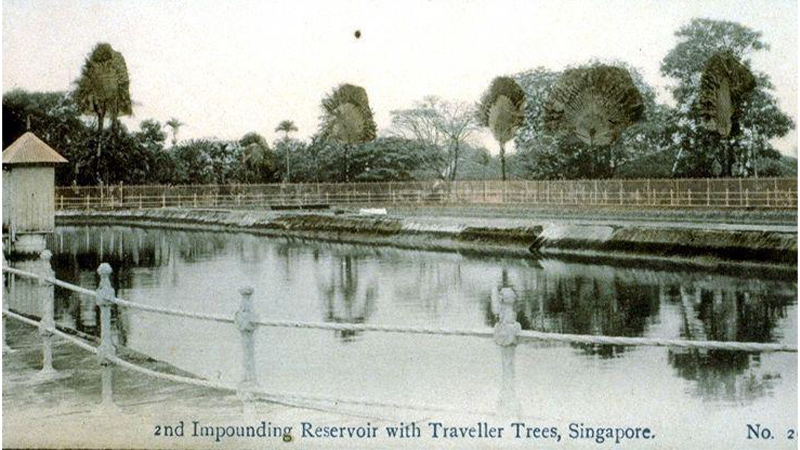
The pool was hugely popular for many years, with designated shallow and deep ends, diving boards, and enough space for 300 swimmers. It became less used over time, however, and eventually closed in 1981. Today, you can see the Singapore coat of arms on a brick wall in Mount Emily Park, which dates to 1948 and once marked the entrance of the pool complex.
Mount Caroline
Less well known and documented is Mount Caroline, perhaps named after another daughter of Prinsep. It lies just to the west of Mount Emily and Mount Sophia, and is the hill that Government House was built on in 1869 and where the Istana still stands today.
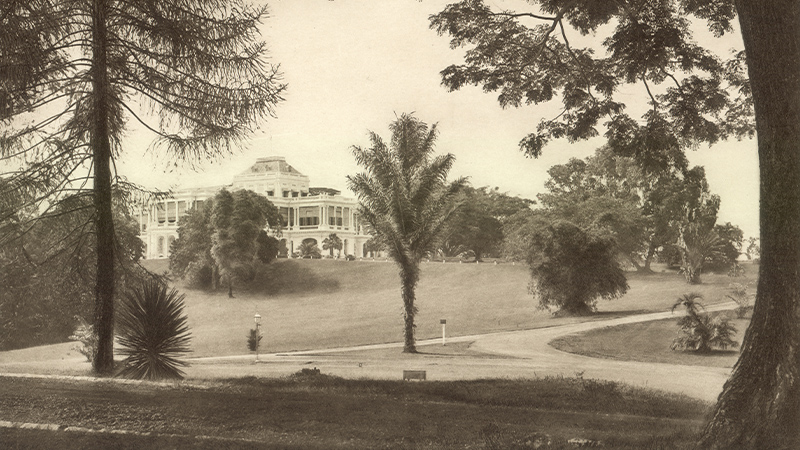
Singapore’s Sasquatch
You all know Bukit Timah … but do you know the Bukit Timah Monkey Man?
Stories abound about big, hairy, human-like creatures that still roam the planet. In the US, there are semi-regular reports of sightings of Bigfoot or Sasquatch, while the Himalayas has the Yeti or Abominable Snowman; Australia has its Yowie, and Indonesia has the Orang Pendek.
The same goes for Singapore, where an urban legend exists around the BTMM, or Bukit Timah Monkey Man. Details are (unsurprisingly) sketchy, but some accounts attribute the first sighting to the early 1800s; others say Japanese troops spotted the creature during the WWII occupation. The occasional photographic “evidence” emerges too; most recently in December 2020, when some night hikers claimed to have seen the BTMM lurking behind a tree. (A 2012 YouTube video of a sighting is less convincing.)
Unfortunately, unlike the Bigfoot and Yeti, who both tower above the average human, the BTMM is thought to be around the same height as a typical male. So, to replicate an appearance, it would really only take dropping a bit of cash at a costume rental place and then visiting Bukit Timah Nature Reserve for a quick photo session. (It would want to be quick, too – Singapore doesn’t lend itself to getting around in a fur suit for long …)
Still, the legend of the BTMM persists. There’s a short film on the subject – In Search of The Bukit Timah Monkey Man; and the creature has been discussed in books (Extraordinary Animals Revisited by Karl Shuker, for example) and even received a mention on an American TV show, Bones.
It’s something to ponder when you’re next on a solo hike on the Dairy Farm Loop and you hear the snap of a twig from the undergrowth….
Durians by Numbers
July sees the peak of the durian season in Singapore, so if you’re a fan of the spiky, stinky delicacy, here’s a fact file!
100: Approximate number of durian varieties, including popular ones like D24, Mao Shan Wang and XO
1.5: Average weight of a durian, in kilograms
5: Number of “compartments” inside a durian where the flesh can be found
700,000: Tonnes of durian produced by Thailand per year, more than any other country 500 Number of years the word “durian” has been around; it comes from a Malay word duri meaning thorn.
1,350: The huge number of calories in a one-kilogram durian (thankfully, the fruit is also extremely high in vitamins and minerals)
50: The number of distinct odorous compounds (i.e., smells!) detected by German scientists in durians, including four previously unknown ones
Did you know? A 19th-century British naturalist described durian flesh as “a rich custard highly flavoured with almonds”. We have definitely heard less charitable descriptions!
8 Things about Matilda House
For over a century, Punggol was an isolated rural corner of Singapore. Even its name has a rustic vibe: it probably comes from a term for lobbing sticks at fruit trees to knock the fruit onto the ground. Because of this remoteness, a number of Europeans in Singapore built country retreats there. Among those retreats was Matilda House, which has an interesting past.
#1 The Cashin family moved from Ireland to Singapore in the mid-1800s, where they made money as lawyers and from then-legal opium farming. Joseph Cashin (1842-1907) is said to have owned 400 shophouses, too. His son Alexander built Matilda House in 1902, naming it after his mother.
#2 The house was considered the prettiest property in Punggol, set in a grove of coconut palms, with a fruit orchard, horse stables and tennis courts, and wonderful views over the Punggol River and the Straits of Johor.
#3 Successive members of the Cashin family occupied the house until 1985, when it was acquired by the government as part of a huge parcel of land slated for development in Punggol.
#4 Though the house was given conservation status in 2000, as the land around it was cleared, it fell into a state of disrepair. The image below dates to 2005, and shows the Punggol LRT in the background, with abandoned Matilda House alone in the foreground. (Photo: Calvin Teo).
#5 It was in this period that the house gained a reputation for being haunted, referred to as “Ghost House” or Istana Menanti (“The Waiting Palace”). Some visitors claim to have seen a white mist in its corridors.
#6 Matilda House has featured on TV, including in British drama series Tenko (1981) and Australian drama series Tanamera – Lion of Singapore (1989).
#7 Today, the house is still in Punggol – but it’s completely unrecognisable. In 2015, it was refurbished and relaunched as the clubhouse of a new condo development, A Treasure Trove. Zoom in on the condo on Google Earth and you can see the distinctive orange roof of the house.
#8 The same family also owned Cashin Pier, a striking sea pavilion that looks out over the Straits of Johor on the western edge of Sungei Buloh Nature Reserve. It’s also still standing today, but is closed for redevelopment as an education centre in Lim Chu Kang Nature Park.
Squirmy Laksa
If you’re reading this while hunched over a bowl of laksa, you may want to turn away… Last year, there was a hubbub in Singapore online forums after a diner found a tiny worm in her bowl of laksa and uploaded photos of the unwanted critter. While some were sympathetic, others shrugged it off, referring to the fact that worms and indeed maggots used to be added to laksa on purpose!
Apparently, in the 1950s, it was common practice for cooks to use earthworms during the preparation of the dish as a flavour enhancer; they’re said to have added a desired saltiness to the broth. And maggots were introduced in the process, too, because they were believed to “eat away bacteria” that might be present in the food.
So, the next time you see what you think is a bean sprout in your bowl, it might warrant a second look, just to be sure.
Boat Quay Views
Regular EL contributor Ceri Powell contacted us with a heads-up about a Singapore vantage point that we’ve not explored before, and we’re guessing many readers haven’t too. Thanks, Ceri!
“Members of the public are allowed into the Supreme Court building. You can take the lift to the Viewing Gallery on Level 8 and you’ll find the most amazing view of Boat Quay (pictured), the CBD and around to Marina Bay Sands and the Singapore Flyer. The panorama is framed by highly angled windows so it feels like a movie. It’s a hidden gem, with virtually no tourists or other visitors, ever!”
The Supreme Court building is at 1 Supreme Court Lane, near City Hall MRT. To book a free guided tour, visit judiciary.gov.sg/visit-us/tour-courts.
Just next door to the building is the Old Supreme Court, now part of the National Gallery. To see what it used to be like before the new version came along, you can download the “SG Old Supreme Court” mobile app for a virtual tour.
A Second World Heritage Site?
Speaking of the Old Supreme Court, it’s one of a cluster of buildings known as The Padang Civic Ensemble that was this year added to Singapore’s “Tentative List” for UNESCO World Heritage Sites. This is the first step in the potential nomination of the location as a World Heritage Site in the future. Currently, only the Botanic Gardens holds that status in Singapore (which it received in 2015).
The Padang Civic Ensemble is made up of the Padang itself, plus the Victoria Theatre and Concert Hall, the Old Supreme Court and City Hall, and the Former Parliament House and Annex (now Arts House).
A Royal Visit to Toa Payoh
The National Heritage Board has just refreshed its Toa Payoh Heritage Trail, which first opened in 2014. Among the interesting stories from the history of Singapore’s “model town” is a famous visit by royalty.
The newly tweaked Heritage Trail highlights Toa Payoh’s significant landmarks, and it includes 29 heritage sites and 10 trail markers. One of those is Block 53, also known as the “VIP Block”. This distinctive Y-shaped HDB block was visited by Queen Elizabeth II on her first state trip to Singapore in 1972.
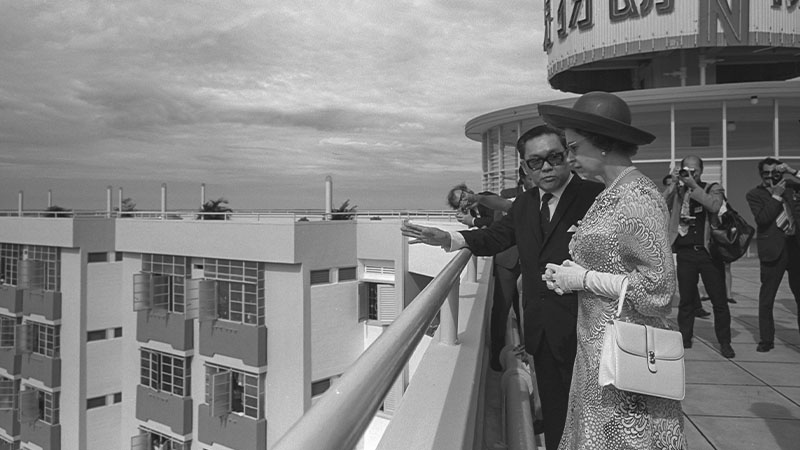
While she was at the HDB, she visited the Pung family, who invited her into their home and offered her a drink – a glass of 7-Up, no less!
Another resident who was there on the day and who still lives at Block 53 is Madam Tang Mei Fong; she recently shared her personal memories of the experience as a contribution to the refreshed Heritage Trail: “I vividly remember the day Queen Elizabeth II visited our block. We all gathered around our doorways to look out for her arrival. I am very proud that a queen visited, and that Toa Payoh is used as a model for Singapore’s public housing that we show to the world.
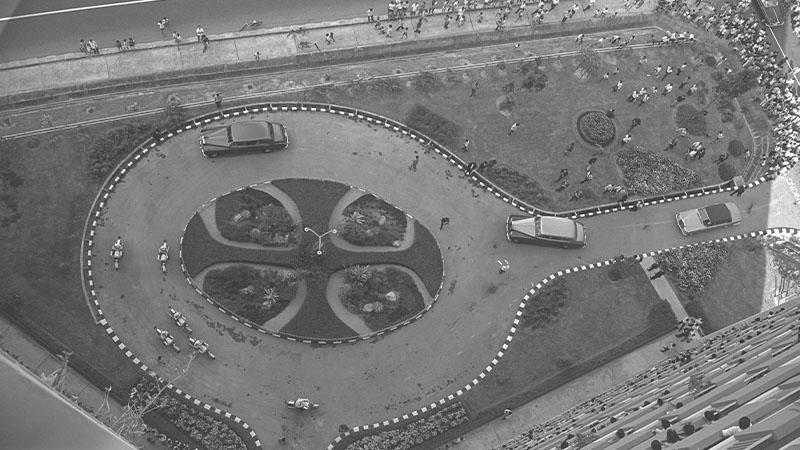
Did you know?
Queen Elizabeth would come on two more state visits to Singapore after her 1972 trip – in 1989 and 2006. In 1989, the Queen and Prince Philip visited Kranji War Memorial and also attended a state banquet hosted by Singapore President Wee Kim Wee and Prime Minister Lee Kuan Yew at the Istana.
In 2006, the Queen went to Kranji once more, but this time to the Singapore Turf Club, where she presented the Queen Elizabeth II Cup to the winner of a race named in her honour; President S R Nathan was in attendance. A meeting with Prime Minister Lee Hsien Loong followed (at the Fullerton Hotel), and another state banquet at the Istana.
The Queen also returned to Block 53 in 2006, where she once again met with the Pung family. They again offered a drink – water, this time – and it was served in the same glass she had drunk from in 1972!
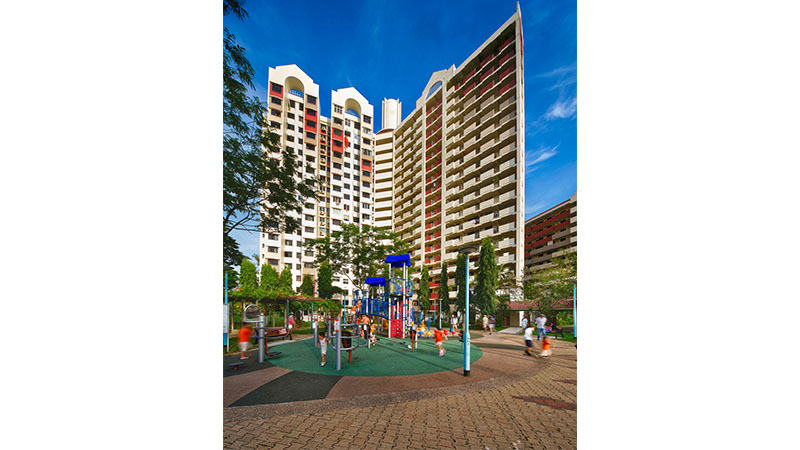
Goodbye, Golden Mile!
A well-known Singapore building is shutting its doors. The Golden Mile Complex, located on Beach Road just a short walk from Nicoll Highway MRT, has been sold en-bloc and is to be vacated and handed over to developers.
Built half a century ago in 1973, the 16-storey structure was an early example of a mixed-used development in Singapore, with shopping, parking, entertainment, offices and apartments all in one. The distinctive terraced or stepped profile of the building allowed for residents to enjoy fantastic ocean views from balconies.
Over time, Golden Mile Complex became known as a centre of the Thai community in Singapore – dubbed “Little Thailand” for its proliferation of Thai restaurants, supermarkets and more. It’s also been a popular meeting spot for retired elderly Singaporeans, who gather each day at its coffee shops to chat.
While the tenants are all sadly having to move on – some are said to be retiring from their businesses, others are relocating to different malls and food centres – the building itself will live to fight another day. It was gazetted as a conserved building in 2021, which means the structure and façade must be preserved during development.
A Forbidden Spring
Heard of Pancur Larangan? It’s a Javanese-style water feature found on the western slope of Fort Canning Park – and yet another pretty corner of a green space that has loads of them. But there’s a historic relevance to Pancur Larangan, too. The name means “Forbidden Spring”, and it’s believed to have been the location of a bath used by noble ladies from the royal court of the Kingdom of Singapura in the 14th century. (Fort Canning Hill was previously known as Bukit Larangan – Forbidden Hill.) An archaeological dig in 1984 uncovered plenty of ancient Malay and Chinese artefacts in the area.
Today, the recreated water feature – which feels a bit like a mini version of Bali’s Holy Spring – includes a large mural that’s been handcrafted in natural volcanic rock and shows different aspects of society in the settlements of the Fort Canning area from the 14th to 19th centuries. Check it out on your next walk or jog through the park!
10 things about Kusu
Did you know that the Chinese temple on Kusu Island is celebrating its 100th birthday in 2023? Here are some other things to know about this small dot that makes up part of Singapore’s Southern Islands.
- “Kusu” means “turtle” in Hokkien; the Malay name for the island is Pulau Tembakul. In the 18th and 19th centuries, it was referred to as “Governor’s Island” and “Goa Island” at different times.
- In 1822, a few years after Stamford Raffles arrived in Singapore, a signal station and mast were set up on Kusu as a reference point for ships entering the new port.
- While it’s now a single island, in the past it was just two bumpy bits of reef joined by sand at low tide. Modern land reclamation turned it into the 85,000-square-metre island we know today (roughly the size of 12 football pitches).
- There are lots of myths and legends associated with the island; one tells the story of a Malay and a Chinese fisherman whose boat capsized in the vicinity, only for them to be carried ashore by a turtle. Despite their different cultural backgrounds, they lived out their lives on the island peacefully.
- While the island was inhabited in the past (in particular, by Orang Laut people who mostly work in the ferry industry today), there have been no permanent residents on Kusu since the late 1970s.
- Apart from enjoying beach picnics and checking out the island’s small tortoise sanctuary, people visit Kusu for its two key religious sites: the Da Bo Gong Temple (or Tua Pek Kong Temple – “Grand Uncle” in Hokkien); and the collection of three Malay kramats or shrines (which require a climb of 152 steps to reach!).
- A year ago, on 17 April, the Malay shrines were almost totally destroyed in a fire, thought to have started from a candle or oil lamp. They were reconstructed over a six-month period.
- Kusu is the site of a large annual pilgrimage, when as many as 100,000 devotees visit during the ninth lunar month (around mid-October to mid-November this year) to worship the local deities. A temporary hawker centre is set up to accommodate the crowds.
- One popular spot in the pilgrimage is the giant pink lotuss shaped wishing well that you can toss coins into after making a wish. There used to be bells inside the lotus that you could try to hit as a bonus!
- To get to Kusu, take the ferry from Marina South Pier (around 45 minutes). It stops off at St John’s Island either on the way there or on the return.
Shoe-stoppers!
If you’re a fan of cool kicks, you won’t want to miss this current exhibition at the ArtScience Musuem, which pays homage to sneaker culture around the world.
Sneakertopia: Step Into Street Culture made previous stops in Los Angeles and New York, and is the brainchild of an Emmy Award winner and a Silicon Valley tech entrepreneur. It features over 100 limited-edition sneakers as well as 70 murals, installations, designs and original artworks, tracing the history and impact of the famous shoe on hiphop, sport, fashion and more; 17 Singaporean and locally-based creatives have also contributed to the show.
For a taste of what you’ll see, take a look at this giant piece by French sculptor Smoluk, “The Super Large Superstar” (photo: Nickie Robinson). It’s made from recycled cardboard collected from streets from around the world.
The exhibition runs until July; visit marinabaysands.com/museum for more information.
Meet the mouse-deer
Singapore is home to a small handful of different ungulates – or hoofed animals. Perhaps best known is the wild boar, whose population is said to be on the rise. Less prominent by far is the mousedeer.
There are two species of mousedeer in Singapore. The lesser mousedeer (Tragulus kanchil) is often referred to as the kancil, and is said by some to be the world’s smallest hoofed animal – it weighs as little as 2kg when fully grown. One 2017 estimate suggested there were as few as 20 in Singapore, where they live in the Central Catchment Area. Meanwhile, the greater mousedeer (Tragulus napu) was thought to have disappeared entirely, only to be spotted again on Pulau Ubin in recent times, and confirmed by scientists to have made an “unlikely comeback”.
One thing is certain: with a face that looks a little like a cross between a deer, a rodent and a squirrel, this is definitely a cute critter! (Less cute are the oversized tusk-like canine teeth in the males, which are used for “slashing” at rivals during mating periods…)
There is a famous mousedeer character who is a recurring character in Malaysian and Indonesia folk tales. Known as Sang Kanchil, he’s clever and quick-witted, and uses his cunning to get the better of big scary crocodiles and tigers. For this reason, politicians have been known to use the mousedeer as an analogy for Singapore – something with a small size but the nimbleness to overcome obstacles.
Culture
Open Again!
Good news for culture vultures: Singapore’s Peranakan Museum reopened in February 2023 after closing back in April 2019 for a major revamp. The completely refurbished building features nine galleries across three floors, with each floor dedicated to a particular theme around an aspect of Peranakan identity. Along with well-loved artefacts that featured in the museum before its makeover, there’s a bunch of new objects acquired or donated over the last 10 years.
Physical displays aside, interviews and stories will showcase living cultures within the broader Peranakan group, including those of Arab Peranakans, Chinese Peranakans, Chitty Melakans (or Peranakan Indians) and Jawi Peranakans, while anchoring these cultures within the context of the Malay-Indonesian world.
Here’s a glimpse at the three floors of the new-look museum and what to expect.
First Floor
Gallery name: ORIGINS
Theme: Exploring the origins of Peranakan identity, tracing how this hybrid identity emerged, and encouraging visitors to ask, “What is Peranakan?”
Sample display: Hand-painted photograph of a Batavian born Peranakan woman named Lie Pa-toe Nio.
Second Floor
Gallery name: HOME
Theme: Objects from various family homes in Singapore and the region, touching on customs, lifestyles, furnishings, food, faith, language and art.
Sample display: Radiogram (combination radio/record player) with Plessey autochanger and two 78rpm records. Records were colloquially referred to as piring hitam or “black dishes”!
Third Floor
Gallery name: STYLE
Theme: A glimpse into fashion, glamour and personal adornment, through batik textiles, needlework, jewellery and a variety of dress styles – including the kebaya.
Sample display: A Chitty Melaka addigai necklace of the early 20th century, adapted from South Indian examples.
Did You Know?
- The impressive museum building was once home to Tao Nan School, which opened on North Bridge Road in 1906 before moving into the purposebuilt school on Armenian Street in 1912. There, it became the first Chinese school to change its teaching language from Hokkien to Mandarin. After 70 years, in 1982, the school moved to Marine Parade (where it still operates today).
- The building was gazetted as a National Monument on 27 February 1998.
- Two well-known sculptures remain at the front of the museum after the revamp: one shows a grandfather who is being tugged along by hand by his excited granddaughter; the other is the so-called “ACM cat”, a cat lying on the museum steps, apparently commemorating a real cat that used to frequent the area in the late 1990s.
The Peranakan Museum is a department of the Asian Civilisations Museum, operating under the National Heritage Board. FB @PeranakanMuseumSingapore | IG @peranakanmuseum.
5 Things about Carrot Cake
No, not the one with the cream cheese frosting … we’re talking about the popular hawker stall variety: chai tow kway.
#1 Chai tow kway is unrelated to the other carrot cake – it doesn’t even have carrot in it. (A Singapore street food guide published in 2010 is called There’s no Carrot in Carrot Cake.) “Chai tow” in Teochew dialect can translate as radish, which is the main ingredient of the dish, but also as carrot – hence the confusion.
#2 Chai tow kway is made by frying pieces of steamed radish cake (made with radish and rice flour) with garlic, eggs and preserved radish (chai poh).
#3 The dish comes in “white” and “black” varieties. White is the original fried version, while black has the addition of sweet dark soy sauce. Every hawker cooks carrot cake differently; we especially like the ones with lots of charry bits!
#4 There are no “rules” around when and how to eat carrot cake. It’s a particular favourite at breakfast, but also gets ordered for lunch and dinner, and to share or as a meal on its own.
#5 Favourite stalls include Ghim Moh Carrot Cake, Fu Ming Cooked Food and Bukit Merah View Carrot Cake. Expect to pay around $3.
History: Singapore’s Military Past
The National Heritage Board’s annual “Battle for Singapore” initiative this year marked the 81st anniversary of the Fall of Singapore in 1942.
Held annually in February and March (Singapore fell on 15 February 1942), the commemoration includes tours and talks touching on this momentous occasion in the island’s history.
One event that caught plenty of attention this year (and booked out in minutes as a result!) was a guided tour of Fort Connaught – the first ever public tour since the fort’s construction in 1878. The fort has remained hidden away in a jungle-covered piece of private property on Sentosa, until it was revealed to the lucky event-goers.
Those who missed it will have to make do with this photo (above) – until next year!
Visit nhb.gov.sg for more information.
A Wander in Woodlands
Singapore’s 23rd Heritage Trail has opened! The Woodlands Heritage Trail takes in 15 heritage sites, tracing the long and varied history of this part of Singapore’s north.
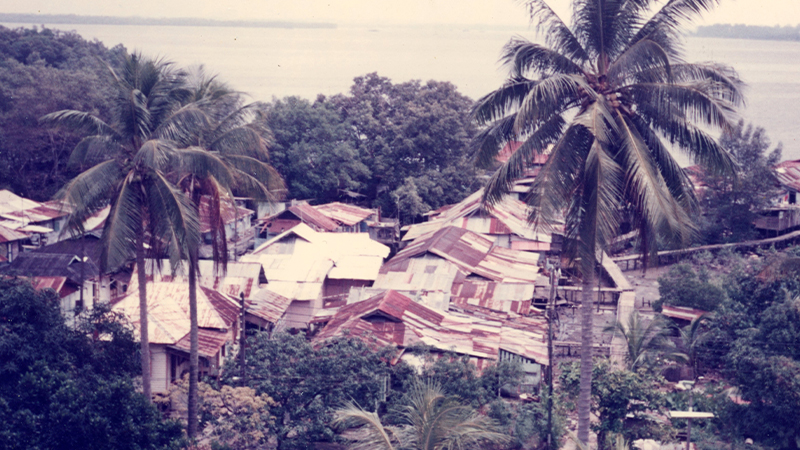
There are three different themed routes you can follow:
- Communities of Woodlands: Religious institutions and community landmarks (1.5 hours with public transport, 4km) #
- Woodlands at War: Former military sites, including Kranji War Cemetery (2 hours with public transport, 9km)
- A Journey through the Woods: Parks and other green spaces (1.5 hours on bicycle; 2.5 hours on foot with public transport, 15km)
While Woodlands is known as Singapore’s “gateway to Malaysia”, the heritage trail also explores the history of early 19th-century settlers, including Orang Seletar and Teochew migrants, plus the area’s pivotal role in World War II, and the stories of the communities who’ve called Woodlands home ever since.
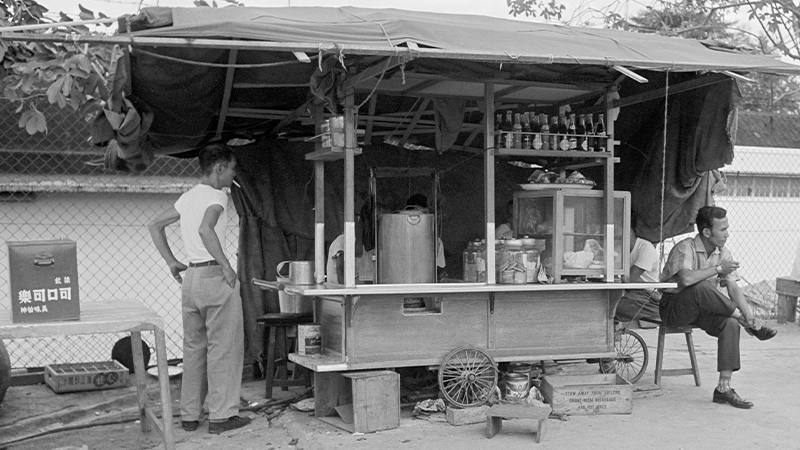
Did You Know?
- Woodlands was originally referred to as “Kranji” or “Mandai”.
- Its newer name comes from a 19th-century bungalow that Edward John Leveson, Italy’s Consul in Singapore, built there as a holiday retreat.
- A railway service to Malaya existed even before the Causeway was built. Once the train reached water, it was carried across the Straits of Johor on a special wagonferry, before continuing north from Johor Bahru.
- Kampong Lorong Fatimah (pictured above) was a Woodlands village built on the water near the Causeway. Residents were relocated to HDBs in the late 1980s.
- Kranji War Cemetery was once the cemetery of a prisoner-of-war camp established by the Japanese in 1942.
- More than 4,400 fallen soldiers are buried at Kranji and more than 24,000 soldiers who died without a grave are named on the Singapore Memorial. Viewed from the air (and visible on Google Earth), the Memorial resembles the silhouette of a World War II warplane.
- Many old places of worship in Woodlands still operate today, including the Church of St Anthony of Padua, Hong Tho Bilw Temple, Masjid An-Nur and Sri Arasakesari Sivan Temple.
Download a map at roots.gov.sg, and view a video of the trail at go.gov.sg/video-woodlandsheritagetrail.
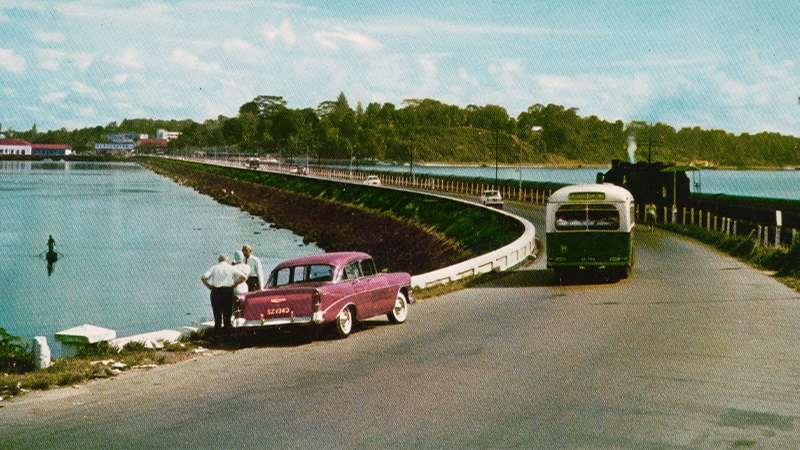
Transport: Tiny Thoroughfares
There is a Short Street in Singapore – it’s not far from the Tekka Centre, across Rochor Canal Road. It’s possibly called that because it’s short (around 300m) but it might also be named for a banker called Septimus Short.
Either way, it’s not Singapore’s shortest street. That honour perhaps goes to the 80-metre Finlayson Green, at the south end of Raffles Place. It takes its name from a 19th-century chairman of the Singapore Chamber of Commerce.
We say “perhaps” because if you include the many small offshoots from bigger roads, you could argue the shortest in Singapore is Tua Kong Green, a 25m branch of Jalan Tua Kong in Siglap.
Then there’s Jalan Ulu Seletar, next to Masjid Ahmad Ibrahim, a mosque in Seletar. It’s currently only five metres long! It’s actually a very old road that was once much longer, but most of it is currently cut off from use, leaving pretty much just enough room to park a car.
Bukit Timah Road and Yio Chu Kang Road are among the longest roads in Singapore, but they’re both trumped by the expressways (the longest of which is the PIE, at 42.8km).
Singapore’s network of paved roads, if placed end to end, would reach China.
Nature: Singapore’s Newest Green Space
Eight things to know about Rifle Range Nature Park, which opened in November 2022.
- It’s located on the site of the disused Sin Seng Quarry, a granite quarry that was once 55 metres deep.
- The name comes from Rifle Range Road, once the access road to the Bukit Timah Rifle Range, later the Singapore Gun Club. The Club relocated in 2001 to Choa Chu Kang.
- There used to be a kampong here too, evident from the cultivated fruit crops that still exist.
- Why “Nature Park” and not “Nature Reserve”? Nature parks in Singapore act as green buffers for public activities, protecting the nature reserves, which are areas of rich biodiversity and native flora and fauna.
- The Colugo Deck, reached by a half-kilometre hike, is a clifftop deck overlooking the Quarry Wetland, with a design inspired by the Sunda Collugo (or flying lemur) in flight.
- This is the first net-positive-energy nature park in Singapore, with energy harvested from solar panels at the site.
- Five species of kingfisher inhabit the park, along with wetland birds such as the Yellow Bittern. You can spot them from bird hides like the one pictured below.
- While the various trails in Rifle Range Nature Park are relatively short, the Gaharu Trail leads to MacRitchie Reservoir for a much longer outing.
To get there, take exit A from Beauty World MRT and follow the Rambai Boardwalk. There’s a carpark on Rifle Range Road.
History – Old Photos
Currently showing at the National Gallery is Living Pictures: Photography in Southeast Asia, a display of over 300 images from the mid-19th century until now, captured by photographers across the region. It includes works from Vietnam, the Philippines and Thailand, but also some interesting old snapshots of Singapore. Here, we take a look at three!
#1 “Harbour View” (late 1890s)
German expat Gustave Richard Lambert set up a successful photographic business here in the 1880s – it would become the leading studio in Southeast Asia. This photo shows Singapore harbour, with Collyer Quay and Cavenagh Bridge in the background.
#2 “Group Photograph of a Chinese Man and Women” (c.1910)
The Lee family hailed from Guangdong in China and set up an extensive photography business in Singapore, including Lee Brothers Studio on Hill Street, near the Armenian Church. It became well known for studio portraits like this one.
#3 “At Rest” (1964)
Wu Peng Seng (1915-2006) was a noted landscape photographer who settled here in 1954, working for a Chinese language newspaper. He became known for his images of scenes of kampongs and the daily life of fishermen.
The exhibition runs until August. See more at nationalgallery.sg/livingpictures.
@nationalgallerysingapore
Records
A big bunch of Bichons
After a two-year hiatus, PetExpo returned in November 2022, and it saw a record crowd of 33,000 people and 10,000 pets come through the doors.
Speaking of records, it was also the scene of a new entry in the Singapore Book of Records, for the Largest Gathering of Bichon Frise – 105 Bichon Frise dogs brought together at one time.
Wildlife
8 Things about the Raffles’ banded langurs
If you were to gather all the Raffles’ banded langurs in Singapore together at one time, you’d sadly have a much smaller group than the Bichons mentioned above! But there’s some good news for this rare monkey – find out in this fact file, below.
#1 The Raffles’ banded langur is native to Singapore, and is found here and across the border in Johor and Pahang. Also known as the banded leaf monkey or banded surili, it’s named after Sir Stamford Raffles, who included an identification of the animal among his research materials on Singapore.
#2 The monkey grows up to 60cm long, with another 60cm or so of tail, and weighs between 6 and 8kg. While its fur is dark, with some distinct white colouring on the chest and thighs, the babies are predominantly white.
#3 The monkey is mostly found in the Nee Soon Swamp Forest in the Central Catchment, between Upper Peirce Reservoir and Upper Serangoon Reservoir.
#4 Despite being protected from 1947, numbers are tiny – in fact, it’s critically endangered. However, while numbers dropped as low as 12 at one point, this grew to around 40 a decade ago, and then 60 in 2019. The current count is 66 by one estimate, and 70 by another. Heading in the right direction!
#5 Authorities hope that the Eco-Link@BKE, the large bridge of native vegetation that crosses the BKE at one point, will help the animals move from area to area, and perhaps repopulate Bukit Timah Nature Reserve (where they haven’t been sighted since 1987).
#6 The Raffles’ banded langur is fussy. It eats more than two dozen plant species (leaves, fruit and seeds), but will apparently travel long distances to find its favourite food. Okay, we’ve been known do the same.
#7 The monkey’s call has been described by a mammologist as “a harsh rattle followed by a loud chak-chak-chak-chak”.
#8 While the Raffles’ banded langur is one of only three primates in Singapore (with the long-tailed macaque and the Sunda slow loris), in 2020, a fourth species was spotted – two dusky leaf monkeys, who are thought to have swum across from Johor.
Food Favourites: Curry Puffs
We’ve all tried these cheap and tasty snacks found across Singapore – here’s a fact file on them!
#1 What is a curry puff? It’s a small pie consisting of a pastry shell (usually in triangle or semicircle shape) with a filling – chicken and potato curry is the best known – then baked or deep-fried.
#2 In Malay, they’re called epok epok, though many foodies will point out that they’re not really the same thing, differing in pastry style, fillings and more.
#3 They perhaps have different origins too. Epok epok may have developed from the empanadas that Portuguese settlers in the Malay Peninsula enjoyed. The curry puff, on the other hand, was probably inspired by Cornish pasties, which Brits in the 19th century longed for; Indian chefs of the day then gave it a samosa spin, with the addition of curry.
#4 While chicken and potatoes is a traditional filling, other common ingredients include sardine, egg and beef.
#5 Curry puff variations are often denoted by a spot of food colouring on one side.
#6 There are more exotic fillings too. Durian, red bean, yam and even custard appear in “curry” puffs from time to time. Last month, the popular chain Old Chang Kee was offering a special kids’ edition called a Cheesy Corn’O.
#7 Speaking of Old Chang Kee, it started in 1956 and today has dozens of outlets all over Singapore, as well as outposts in Indonesia, Australia and the UK.
#8 Maxwell Road vendor J2 Famous Crispy Curry Puff is one of 67 F&B places listed in the Michelin Bib Gourmand Singapore 2022.
Location, Location!
Not too many Hollywood or international films use Singapore as a backdrop. Crazy Rich Asians (2018) is an exception, of course: it includes a wedding at Chijmes, meals at a hawker centre, plus Sentosa beaches, Raffles Hotel, MBS and more.
Less-well known – and perhaps understandably, if you read the mediocre reviews – is Hitman: Agent 47. This 2015 action thriller is based on the Hitman video game series and was originally set to have Paul Walker in the lead role before his untimely death; Rupert Friend played the role instead.
Around half of Hitman was filmed here – the rest in Berlin – and the Singapore setting is clear even from the movie poster; it shows the ArtScience Museum and other landmarks. One of the extras in the cast is referred to as “Gardens by the Bay man”.
More dramatically, Robinson Road in the CBD is used as the scene of a shoot-out – the area was shut down for four days for filming. One notable sequence shows the road jam-packed with blue ComfortDelGro cabs! You can also get a glimpse of the old MPH bookstore that traded at 63 Robinson Road until it closed a few years ago.
Other locations that appear include Changi Airport, Chinatown, Marina Barrage and Parkroyal at Pickering. The latter is where the cast stayed, including British lead Hannah Ware. She later reflected on her Singapore experience: “One thing I found hard was the humidity. I’ve never been somewhere so humid! But the food was really, really good, and everyone was just so nice and polite. It’s just a lovely place to film. It’s beautiful, in its own way – really stunning.”
Singapore in the 1870s
Nineteenth-century explorer, photographer and writer Isabella Bird was the first woman to be made a Fellow of the Royal Geographic Society. In 1880, she published a book, The Golden Chersonese and the Way Thither, describing her travels in China, Vietnam and other parts of Asia, including Singapore. In this excerpt, she describes a tour from Raffles to Tanglin.
Let us drive from Raffles Square through this cosmopolitan city and out to Tanglin. Beginning at Cavanagh Bridge, at one end of which stands the Singapore Club and the Post Office, is the ocean Esplanade – the pride of the city – that encloses a public playground of 15 acres, reclaimed from the sea at an expense of over two hundred thousand dollars.
Every afternoon when the heat has fallen from 150 to 80 degrees, the European population meet on this Esplanade park to play tennis, cricket and football, and to promenade, gossip and listen to the music of the regimental band.
The drive from the sea, up Orchard Road to the Botanic Gardens, carries you by all the diversified life of the city. The Chinese restaurant is omnipresent; by its side sits a basket of sugar-cane, each stick two feet long, cleaned and scraped, ready for the hungry and thirsty rickshaw coolies, who have a few quarter cents with which to pander their appetites.
On every veranda and in every shady corner are the Kling and Chinese barbers. The barber is prepared to shave your head, your face, trim your hair, braid your queue, and pull the hairs out of your nose and ears. There is no special quarter for separate trades. Madras tailor shops rub shoulders with Malay blacksmith shops, while Indian wash-houses join Manila cigar manufacturers.
Once past the commercial part of the ride, the great bungalows of the European and Chinese merchants come into view. The immediate borders of the road reveal nothing but a dense mass of tropical verdure and carefully cut hedges, but at intervals there is a wide gap in the hedge, and a road leads off into the seeming jungle. At every such entrance there are posts of masonry, and a plate bearing the name of the manor and its owner.”
The Rickshaw Puller
5 facts about this striking sculpture in Chinatown.
#1 The 2-metre bronze sculpture is the work of Lim Leong Seng (born 1950) who has produced more than 30 public sculptures.
#2 It’s called “Heading Home (Rickshaw)”, and depicts a traditional manpowered taxi service known as a rickshaw. Rickshaws were introduced from Japan (jinrikisha means “hand-drawn carriage”) in around 1880 and soon became commonplace. By 1920, there were 30,000 licensed rickshaw-pullers in Singapore.
#3 Rickshaw-pulling was a demanding job – physically brutal with plenty of risk of injury. In 1912, The Straits Times described it as “the deadliest occupation in the East and the most degrading for human beings to pursue”.
#4 The passenger in the carriage is thought to be a wealthy Peranakan lady. She’s either pointing the direction home or demanding the driver go faster!
#5 The sculpture is on Nankin Street, near China Square Central. The street is named after the Chinese city of Nanking (now Nanjing) and used to be a prominent food alley over a century ago; today, it’s a pedestrian mall.
Wet & Dry
If you love a weather statistic or two, read on! We loved the F1 last month, even if it was a little … soggy! Doubtless the drivers were all well prepared, though, since forecasters predicted in August that the La Niña weather system would continue in Singapore for at least the next few months.
While Singapore gets an average of 167 days of rain a year, La Niña generally means even wetter weather for Southeast Asia, and that’s pretty much what we’ve been experiencing.
Not as wet as last year though! Did you know that 2021 was Singapore’s second-wettest year on record since rainfall data collection began in 1980? Only 2007 saw more rain. What’s more, January 2021 was the wettest January in over a century!
The reason for the deluge was a combination of La Niña conditions and the presence of a “negative Indian Ocean Dipole”. (We don’t know what it means either, but when we hear it’s coming, we’re getting the brolly out.)
Yet, amidst all that rain in 2021, February last year was an anomaly. It was very dry and very windy. In fact, the Changi climate station recorded only a single millimetre of rain for the entire month! It didn’t quite match the record-breaking dry spell of 27 days in February 2014, but the place was certainly parched. Helping to dry things out was the wind: it was the second windiest February on record (daily average of 13.1kmh).
Finally, the 10-year period up to the end of 2021 was Singapore’s warmest decade on record, with a mean temperature of just a touch under 28 degrees Celsius.
In case you were wondering, La Niña is expected to decrease towards the end of the year, but may persist into 2023. The good news? More rain means less chance of haze!
Sport
START YOUR ENGINES!
After a two-year absence because of you-know-what, the Singapore Grand Prix returned in 2022 (30 September to 2 October).
About the Singapore F1 race
Track name: Marina Bay Street
Circuit Track length: 5.06km
Number of turns: 23
Race distance: 308.7km (61 laps)
Race duration: Approximately two hours
Fastest race lap: 1 minute 41.9 seconds (Kevin Magnussen, 2018)
Maximum speed: 323 kilometres per hour
Gear changes: 70 per lap
Most wins: 5 (Sebastian Vettel)
Most team podiums: Red Bull
Last winner: 2022, Sergio Pérez
Fun facts around the Singapore Grand Prix
- The track makes its way past some major Singapore landmarks, including City Hall, the Padang, the Fullerton Hotel, Merlion Park, the Esplanade and the Singapore Flyer.
- The Safety Car has appeared at least once in every Singapore Grand Prix.
- After the inaugural F1 race in 2008, some drivers made comments about the track being “bumpy”, though most seemed happy with the lighting conditions in what was the first-ever F1 night race. (Sebastian Bourdais said, “It’s daylight!”)
- Singapore’s a hot place, and the cockpit of a Formula 1 race car is even hotter. Drivers can lose up to 3kg of fluid during the race.
- For ticket info and more, see singaporegp.sg.
Singapore icons
GUESS WHO’S 50?
The famous Merlion statue is a Singapore icon. As of October 2022, it has been shooting water into Marina Bay for half a century. Here’s a fact file!
#1 The Merlion was installed in an official ceremony overseen by Prime Minister Lee Kuan Yew on 15 September 1972.
#2 The 8.6-metre, 70-ton statue was built over the course of 10 months by an award-winning local sculptor named Lim Nang Seng.
#3 As the history on Singapore goes, the Merlion’s location at the time was right at the mouth of the Singapore River, just north of the Fullerton Hotel and beyond Anderson Bridge. (The small photo at right dates to 1994, and shows the Singapore icon in that original spot.)
#4 In 1997, construction of the new Esplanade Bridge blocked the Merlion’s view of Marina Bay. Initially, there was talk of raising the creature to a higher pedestal to compensate, but eventually the decision was made to relocate the statue. In 2002, it was carefully moved via cranes and a barge to its current spot, 130 metres to the southeast. Lee Kuan Yew – who by then was Senior Minister – returned to officiate a welcome ceremony for the new location.
#5 While the statue itself is 50 this year, the Merlion design and symbol is older. It was designed by Alec Fraser-Brunner as the logo for the Singapore Tourism Board in the early 1960s. Fraser-Brunner was a British ichthyologist (i.e., a fish expert!) who was a member of the city’s Souvenir Committee. He also worked in Singapore as curator of the Van Kleef Aquarium – see opposite.
#6 What exactly is a Merlion? It’s a mythical creature with the head of a lion and the body of fish; the prefix “mer-“ means “the sea”, and reflects Singapore’s beginnings as a fishing village called Temasek, while the lion component represents Singapore’s original name “Singapura”, meaning “lion city”.
#7 In 2006, scaffolding went up around the Merlion while it was cleaned and mended for wear and tear. The scaffolding was illustrated to look like shower curtains, so the Merlion appeared to be sticking its head out from above the curtains.
#8 On the afternoon of February 2009, lightning struck the Merlion and broke some fragments from it, leading to further maintenance.
#9 There are currently six merlions in Singapore, including a Merlion “cub” close to the main statue, and another on Mount Faber. There used to be a seventh: the 37-metre Sentosa Merlion. It was built in 1995, and designed and sculpted by Australian artist James Martin, with features including octagon-shaped scales to represent the Taoist bagua symbol. There were two observation decks – one in the creature’s mouth and one at the top of its head. The site closed in 2019.
#10 Singapore’s Merlion makes plenty of appearances in popular culture, from films (Crazy Rich Asians and others) to video games (Animal Crossing and Mario Kart Tour).
History of Singapore
THE OLD AQUARIUM
Singapore is today home to the S.E.A. Aquarium on Sentosa, among the world’s biggest aquariums, with 49 habitats, 800 species (12 species of shark alone!) and a whopping 36-metre viewing panel that feels like watching an IMAX screen. But it isn’t Singapore’s first aquarium!
That honour goes to the Van Kleef Aquarium, built in the 1950s on the southern slope of Fort Canning Park (close to Clarke Quay). It was named for a Dutch expat, Karl Willem Benjamin Van Kleef, who in 1930 bequeathed his entire fortune to Singapore – the equivalent of around $10 million today. Several options for how to spend the legacy were considered, but the idea for an aquarium won the day.
After the Second World War delayed the project, the Van Kleef Aquarium opened to the public in 1955 (tickets were about 30 cents). It featured more than 6,000 sea creatures and 180 species, and soon became very popular, with over a quarter of a million visitors in its first year of operation. This rose to 400,000 at its peak in the 1970s. Piranhas and crocodiles were among the main attractions.
Numbers started to decline in the 1980s, and, despite a major renovation in 1986, the aquarium never really found its mojo again. In 1991, the opening of Underwater World on Sentosa led to the closure of the Van Kleef Aquarium, and the building was knocked down in 1996.
Alec Fraser-Brunner, mentioned as the Merlion designer on the previous page, worked as curator of the Van Kleef Aquarium from 1956 to 1970, before moving to Scotland to work at Edinburgh Zoo.
Did you know? This same southwestern corner of Fort Canning Park was the location of two other well-known Singapore landmarks that are no longer standing: the National Theatre (1963-1986), and the River Valley Swimming Complex (1959-2003), where a Tiong Bahru Bakery sits today.
Search for “Van Kleef Aquarium” on YouTube to find old footage of the aquarium.
Nature
INTRODUCING THE CIVET!
EL’s editor-in-chief recently had a close encounter with a civet who was climbing around in her garden in broad daylight; the large and quite friendly animal made repeat visits on other days too. It prompted us to find out more about them. Here are ten things we learnt:
#1 Civets aren’t cats!
#2 They’re actually more closely related to mongooses (we’ve seen them referred to as “a cross between a mongoose, a dog and a racoon”).
#3 There are around 12 varieties of civet, four of which can be found here. The Common Palm Civet is native to Singapore.
#4 Spotting a civet up close and in the middle of the day is rare; you’re more likely to see them at night, most commonly in Siglap, Bukit Timah, Portsdown and the Southern Ridges.
#5 Known in Malay as “musang”, civets are sometimes referred to in English as “toddy cats”. This comes from their habit of climbing coconut trees that had been tapped for their sap and drinking the fermented sap, known as “toddy”.
#6 A civet’s diet includes pretty much anything they can find (they’re omnivores), but they’re particularly fond of fruit such as mangos and bananas. They tend to swallow seeds whole and then defecate them, so they play an important role in dispersing seeds in forests.
#7 Another favourite snack of civets is coffee cherries, though, again, they don’t eat the beans. This gave some bright spark the idea of sifting through civet faeces to find the semi-digested beans and making a cup of coffee out of them. Apparently, the effect of the digestive enzymes on the beans gives them extra flavour and aroma. The resulting coffee, known as kopi luwak, is among the most expensive in the world.
#8 Not that we’ve given it a go, but if you smell the secretions from a civet’s anal scent gland, it’s said to have a similar aroma to pandan. In fact, the smell of pandan is one sign that a civet may be around.
#9 Speaking of a civet’s glandular secretions, these have been used in perfumery for over a thousand years. It sounds eww, but apparently when it’s diluted, the smell is “floral” and “velvety”. Happily for the animals, today a synthetic version of the substance called civetone is primarily used instead. For instance, Chanel replaced the real stuff with the lab-produced stuff back in 1998.
#10 The civet gets a mention in Shakespeare (As You Like It, Act 2, Scene 3). One character remarks, “The courtier’s hands are perfumed with civet,” only for the other to proclaim, “civet is of baser birth than tar, the very uncleanly flux of a cat”.
If you’ve found a civet in your house, or one that appears to be injured, call NParks’ Animal Response Centre at 1800 476 1600.
Food
HAVE YOU TRIED YOUTIAO?
If not, here’s a fact file!
- Youtiao is a light, fluffy, deep-fried stick of dough most commonly served at breakfast. It’s usually made as two joined strips that can easily be pulled apart when cooked.
- It originated in China in the 12th century – apparently as a type of protest food. The twin strips of dough were said to represent two leaders of the Song Dynasty who had executed a popular general on a trumped-up charge. Dumping the pair of strips into boiling oil was akin to throwing the nefarious leaders into the oil!
- In Singapore, youtiao is often referred to as you char kway.
- There are plenty of ways to eat youtiao – most commonly, it’s chopped up and added to congee, a bit like adding croutons to soup. A popular Singapore style of eating them is with a cup of coffee; you take a bite of youtiao, then dunk the remaining stick into the coffee so it can soak up the liquid.
- Xi De Li are perhaps the best known youtiao makers in Singapore; they started in the 1920s, and today the fourth generation of the family are in charge. They produce up to 10,000 youtiao every day!
Little Island, Big History
We’ve introduced Singapore’s new Heritage Trails in the pages of our magazine before, and now the 22nd of them has been unveiled: the Sentosa Heritage Trail. The trail takes in 30 heritage sites, and traces Sentosa’s transformation from military complex to leisure destination. There are three different themed routes to follow:
#1 Kampongs and Barracks
Two hours on foot, plus public transport, 3km: Explores the lives of the people of “Blakang Mati” (the island’s Malay name from the 1600s onwards), from the Orang Laut to British Army personnel.
#2 Forts
Two hours on foot, 4km: Looks at the extensive fortifications on Sentosa, including Fort Siloso, Imbiah Battery and Fort Serapong, and how they featured in the defence of Singapore.
#3 Memories of Sentosa
An hour on foot, 2.5km: Revisits some old locations of Sentosa’s reinvention as a leisure destination in the 1980s and 1990s, including the Musical Fountain and the monorail.
The photos from historic Blakang Mati shown here (courtesy of the Sentosa Development Corporation) give an idea of the insights provided by the new trail.
Did You Know?
- Half of Blakang Mati was covered by pineapple plantations in the 1800s.
- During the war, a Shinto shrine was erected somewhere on the island (it was likely destroyed by Japanese soldiers in 1945).
- Among the first attractions on Sentosa was The Coralarium (opened 1974), which showcased corals and marine life. It was knocked down to make way for Sentosa Cove.
For more information on all 22 Heritage Trails, visit roots.gov.sg/nhb/trails.
Technology: Step back in time
Showing until the end of October at the National Museum is Off / On: Everyday Technology that Changed Our Lives, 1970s–2000s, an exhibition featuring the gadgets of yesteryear, from pagers to portable games. Here’s a rundown of the four exhibition sections and their highlights:
- The “Work in Progress” section recreates Singapore office spaces of previous decades, with typewriters and early models of IBM and Apple computers.
- “Hello Mobile” is all about the development of telecommunication tools. Did you know that in the post-war period, Singapore’s telephone “density” was just 1.6 phones for every 100 people?
- In “Art of Living”, you can visit a dark room and try your hand at developing a photo the old-school way.
- “Game On” is all about gaming, and takes its design inspiration from the Tomy Pocketeer. This was a Japanese brand of handheld games manufactured in Singapore in the 1970s and 1980s, which used magnets and ball-bearings to create challenges for users (before Nintendo lit up kids’ eyes with Donkey Kong…). Find out more at nationalmuseum.sg
Nature on a Note
Which denomination of Singapore currency features a picture of a famous tree on one side, and a hard-to-spot marine animal on the other?
If you’re unsure, we get it – not many of us look at actual money very often these days, right? Things were already going in a cashless direction, and then the pandemic hurried the process along.
The answer is the five dollar note. This note has a “Garden City” theme – which explains the green colour – and on its reverse side is a picture of a Tembusu tree. The Tembusu is a large evergreen tree (Fagraea fragrans), native to Southeast Asia, with bitter-tasting red berries that fruit bats love.
The tree pictured on the $5 note isn’t just any Tembusu, though. It’s the iconic 180-year-old specimen that still stands in the Botanic Gardens today (above). You can find it in a special fenced zone at Lawn E, next to Swan Lake. The tree is 32 metres high with a distinctly long side branch growing very close to the ground (and clearly shown in the banknote).
On the other side of the $5 is another representative from nature – though it’s far harder to spot! It’s a cowrie – as in, the marine snail with the pretty shell. There’s a different type of cowrie on each dollar note; the $5 features a gold-ringed cowrie. Still can’t find it? It’s just above the portrait of the first president of Singapore, Yusof bin Ishak, and to the right. (Yes, the pale blobby thing!)
It makes sense to have a shell on a dollar note – after all, they’re one of the oldest forms of currency in the world. In fact, the cowrie that appears on the Singapore $10 note is the “money cowrie”!
Exploring
Remarkable Roads
Singapore has an official register of Heritage Trees: currently, 260 specific trees on the island are protected – they include the famous Tembusu mentioned above. But did you know there is an associated list of Heritage Roads? Despite the fame of Orchard, it doesn’t make the cut. Rather, the five roads on the list have been gazetted for being significantly scenic and tree-lined. They are:
#1 Arcadia Road
This peaceful avenue lined with Rain Trees runs off Adam Road in Bukit Timah. The leafy kilometre-long thoroughfare passes the black-and-whites of Adam Park Estate on the left, and then a few condos – as you drive along, it’s hard to imagine that the PIE is only 50 metres to the right, roaring with traffic!
#2 Mount Pleasant Road
Just east of Arcadia is this very pretty road, again lined by colonial black-and-white houses, and flanked in this instance by Saga trees. Follow the road from the PIE and 1.5km later you’ll emerge just behind the Singapore Polo Club and Thomson Road.
#3 Mandai Road
If you’re heading along Mandai, chances are you’re on your way to the Zoo! This is one of Singapore’s oldest carriageways – well over a century and a half old, in fact. It was built to link the farms and villages between Woodlands and Upper Thomson.
#4 South Buona Vista Road
Named after the Italian words for “good view” – though today any sight of the sea is hidden by jungle – this road linking the AYE with the West Coast Highway is well known for its hairpin turns. These slopes were the site of the Battle of Pasir Panjang in 1942.
#5 Lim Chu Kang Road
This road was constructed over a century ago to service rubber, gambier and pepper plantations in the northwest. You’ll still see rubber trees today, along with angsana and mahogany. It’s also the road leading to the island’s main cemeteries.
Other roads have had their names thrown about as contenders for heritage status. Maybe you live near one of them? They include: Goodwood Hill, Lornie Road, Loyang Avenue, Nassim Road, Punggol Road, Redhill Close, Upper Thomson Road, Yishun Avenue 5 and Yuan Ching Road.
Sports
WE ARE THE CHAMPIONS!
They might not come along every day, but Singapore has had its fair share of world sporting champs, across a handful of different sports.
# Indoor Skydiving
The latest world beaters are the Singapore indoor skydiving team, who in April this year won multiple golds at the world’s largest indoor skydiving competition, held in Belgium. The team’s Kyra Poh is already a world champion (you should see her tear up the iFly facility on Sentosa!), and she figured heavily in the gold medal haul.
# Badminton
In December last year, 24-year-old Loh Kean Yew won the 2021 BWF World Championships to become the men’s singles world champ – the first Singaporean to achieve the feat. He follows in the footsteps of Wong Peng Soon, who won the All-England Championships four times in the 1950s.
# Swimming
Singapore’s pool stars include Ang Peng Siong, who in 1982 became the world’s fastest swimmer with a 22.69-second lap in the men’s 50m freestyle at the US Swimming Championships. More recently, Joseph Schooling won an amazing Olympic victory (Singapore’s only Olympic gold to date) at Rio in 2016, when he beat Michael Phelps to the wall in the 100m butterfly. And then there’s the incomparable Yip Pin Xiu; she has won all five of Singapore’s Paralympic gold medals!
# Table tennis
After grabbing a history-making silver at the Beijing Olympics in 2008, Singapore’s women’s table tennis team took on the might of China in the final of the 2010 World Team Table Tennis Championships in Moscow, and stunned the defending champions 3-1, becoming the new world champs.
The list doesn’t end there: Aloysius Yapp is currently the number one ranked pool player in the world; and ten-pin bowler Shayna Ng won gold in the women’s singles at the world championships in November last year (beating another Singaporean, no less). Oh, and then there’s 54-year-old Peter Gilchrist, who moved here in 2003, became a Singapore citizen in 2006, and went on to become a six-time world champion in English billiards!
Icons
5 things about Slings…
No cocktail is more closely associated with the Lion City than the iconic Singapore Sling. Here’s a fact file on the fruity, boozy, pinkish-red drink.
#1 Though there were drinks called “slings” as early as the 19th century, the Singapore Sling was likely invented in 1915 by Ngiam Tong Boon, a bartender at Raffles Hotel.
#2 Ngiam createed the colourful cocktail to appeal to the eyes – and taste buds – of colonial ladies; it also may have been a way of disguising an alcoholic beverage to make it look like a “socially acceptable” drink for women at the time.
#3 Singapore Slings were originally made with fresh pineapple juice from Sarawak pineapples, which gave them an extrafoamy head.
#4 While the Long Bar at Raffles is considered the “home” of the Singapore Sling, other bars such as Smoke & Mirrors, The Spiffy Dapper, Nutmeg & Clove, Southbridge and Bitters & Love have offered the drink (or a variation of it) at one time or another. The Fullerton Sling is another popular take on the classic.
#5 Hunter S Thompson was a big fan of the drink, which appears in his 1971 novel Fear and Loathing in Las Vegas (and the Johnny Depp film adaptation). The only difference is that the characters, in typically debauched style, drink their Singapore Slings “with mezcal on the side and beer chasers”.
Did you know?
Singapore Sling is also the name of …
- an Icelandic rock band – they formed in 2000 and had a song appear on Long Way Around, the travel/motorcycle documentary by Ewan McGregor and Charley Boorman;
- a Greek underground black and white horror film released in 1990 (there was an Australian TV movie released with the same name in 1993);
- quite a few racehorses around the world, including a South African import who raced successfully in Asia, winning the Hong Kong Classic Cup in 2018. Singapore’s basketball team, the Singapore Slingers, compete in the ASEAN Basketball League.
The recipe
If you’re keen to replicate the original Singapore Sling at home, here’s how:
- 30ml gin
- 15ml cherry brandy
- 7.5ml Bénédictine
- 7.5ml curaçao
- 120ml fresh pineapple juice
- 15ml fresh lime juice
- 10ml grenadine
- Dash of bitters
Pour everything but the bitters into a cocktail shaker then add ice and shake. Strain into a tall glass filled with ice and garnish with bitters, a maraschino cherry and a slice of pineapple.
Fashion
Mask Magic
An international exhibition of face masks from around the world includes a striking entry from the Asian Civilisations Museum (ACM).
It wasn’t long after people realised masks were here for the long haul that creatives began to design variations that went far beyond the standard white or blue medical style. Now, some of the world’s weirdest and wildest have been brought together in a virtual exhibition called Clothing the Pandemic.
One standout is an entry from Singapore, from a current collection on display at the ACM. “Butterfly People” (pictured) is an elaborate mask by Indian designer Rahul Mishra, made of silk and wire, and hand-embroidered and assembled by his team of kaarigars (artisans). Stunning!
clothingthepandemic.museum | nhb.gov.sg/acm
Exploring
Little India stalwarts
For the past three years, the National Heritage Board (NHB) has been setting up a series of “mini-museums” in different Singapore shopfronts to highlight the heritage of various businesses and trades. The project is called Street Corner Heritage Galleries; in 2020, Balestier was the focus, followed by Kampong Glam in 2021. Now, it’s Little India’s turn.
Businessowners have plied their trade in Little India for over a century, selling garlands, gold, saris and spices. A number of stores that have become household names are featured in Street Corner Heritage Galleries, including Jothi Flower Shop, Haniffa Textiles and jewellery store Ani Mani.
Also included are three renowned Little India restaurants. Here are a few facts about them!
Ananda Bhavan
- Among Singapore’s oldest Indian vegetarian restaurants, Ananda Bhavan was founded in the 1920s by brothers from India.
- In the early years, the family lived above the restaurant, with different members taking on roles such as cleaning tables and handling accounts.
- Ananda Bhavan has been vegetarian from the start, serving rice and vegetable dishes on banana leaves – an affordable meal for labourers in earlier times.
- The restaurant was one of the first in Little India to introduce a self-service model, where customers order food at a cashier counter.
Komala Vilas
- Komala Vilas was established in 1947 by Murugiah Rajoo, who took over an older restaurant premises after the owners returned to India. He named his restaurant Komala after the wife of the former owner.
- Murugiah’s brother Sinnakannua was known as “the lieutenant” for keeping the business running smoothly.
- Children and grandchildren learnt the trade as they grew up, then more staff were hired as the restaurant flourished.
- Komala Vilas was among the first eateries in Little India to employ women in a customer-facing role as cashiers, and to offer an air-conditioned dining area on the second floor.
Banana Leaf Apolo
- Banana Leaf Apolo was founded in 1974 by S. Chellappan, who started in the F&B business by operating a small thosai stall.
- The restaurant is apparently named after the Apollo 11 space mission (with a unique spelling adjustment!). Chellappan wanted his establishment to take off like the NASA rocket itself.
- The most famous dish here is the fish head curry, which became a signature thanks to a secret blend of spices and the use of pineapple.
- Today, there are five branches of the restaurant, managed by Chellappan’s son.
Find out more at go.gov.sg/schglittleindia.
World of Weird
We have an appetite for oddities here in the Singapore Pages, so this particular exhibition caught our eye… National Geographic is collaborating with Gardens by the Bay on four shows in the coming two years, and the first of them, “Weird But True!” is on now. You can catch it in the Cloud Forest, and it explores a whole bunch of mindboggling facts taken from National Geographic Kids magazine. Here are ten that you might not know (we certainly didn’t!).
- Vanilla comes from a kind of orchid.
- The world’s termites outweigh the world’s people.
- A piece of cake more than 4,000 years old was found in a tomb in Egypt.
- A bat can eat 3,000 insects in one night.
- If you could travel at the speed of light, you would never get older.
- About 420 million years ago, mushrooms grew taller than giraffes.
- The most overdue library book was 288 years late.
- Some monkeys in Thailand teach their young to floss.
- A palm tree is not a tree – it’s more closely related to grass.
- Ketchup was originally sold as medicine.
Weird But True! runs until 31 July 2022; tickets are included in admission to the Cloud Forest. Find out more at gardensbythebay.com.sg/weirdbuttrue.
History
Fort Siloso Gets Gazetted
Singapore’s best-preserved 19th-century fort, Fort Siloso, was gazetted as a National Monument in February this year. The timing was just right – not only the 80th anniversary of the Fall of Singapore, but also 50 years since Sentosa opened as a destination for tourists.
Fact File
- This is Singapore’s 74th National Monument.
- The last structures to be gazetted were three of the bridges along the Quays – Anderson, Elgin and Cavenagh – in October 2019.
- The National Monument programme launched in 1973, when the first batch of nine buildings and structures were recognised, including Lau Pa Sat food centre, Sri Mariamman Temple in Chinatown, Saint Andrew’s Cathedral, and the Old Thong Chai Medical Institution, where traditional Chinese doctors dispensed free medicines in the late 19th century.
- Other famous entries in the list of 74 monuments include Raffles Hotel, CHIJMES, The Istana, and the old entrance gate, turret and wall of Changi Prison. About Siloso
- The fort is made up of 11 structures that help to tell Singapore’s military and defence story.
- It was built in 1878; the top section of Mount Siloso was demolished at the time to provide a platform for the military installation.
- The design of the fort was unique in that its guns were placed not in a geometric or aesthetic way, but for strategic firing in different directions; this is why there is a random kind of feel to the layout of the site.
- The old story goes that during the Battle of Singapore in 1942, the guns of Siloso were “pointed the wrong way”; that’s why the Japanese could easily advance from the north. In fact, several of the guns did rotate 360 degrees, and they did indeed fire to the north. The bigger problem was that they used armour-piercing shells designed for ships, and weren’t accurate enough to use effectively against ground troops.
- Today, you can see all kinds of WWII relics on the site, from cannons to tunnels, and visit the Surrender Chambers to see an interactive video documentary with wax models of Japanese and British troops; there’s also a Skywalk trail with a great aerial view of the site.
- The fort likely gets its name from the Malay word for “rock”, though another origin is said to be the Spanish/Tagalog word for “jealous”.
Nature
A Big Year for Births!
There must have been something in the water last year, because Singapore’s four wildlife parks – Jurong Bird Park, Night Safari, River Wonders and Singapore Zoo – welcomed 900 newborn animals, almost twice as many as the previous year! Around 160 species were represented in the figures, 44 of which are officially listed as threatened. Here’s a look at some of the new arrivals.
Sunda Slow Loris: The perfect Christmas present came to Night Safari, in the form of a baby loris, born on 25 December. Native to Southeast Asia, the Sunda is endangered as a result of the illegal pet trade. Trivia: Lorises likely take their name from an old Dutch word meaning “fool” or “simpleton”.
Southeast Asian Box Turtle: This endangered turtle, native to Singapore, received a boost last year when three hatchlings arrived on the scene. The turtle has a distinctive yellow-striped head.
Grevy’s Zebra: The world’s largest wild equid (the family of horses and related animals), this is also the most threatened of the three species of zebra. Last year, two foals, Izara and Tari, were born at the Zoo. Trivia: The zebra is named after Jules Grévy, a 19th-century French president.
Straw-headed Bulbul: This songbird is critically endangered (up-listed from endangered in 2018) – probably because of being traded for its beautifully melodic voice. So, the arrival of three chicks at Jurong Bird Park last year was great news.
Golden Mantella: Endemic to Madagascar – and among that country’s most threatened amphibian – this small frog has beautiful yellow/red skin that warns predators of its poisonous nature. Seventy babies were born here in 2021.
Giant Panda: The biggest baby news from 2021 was the birth of panda cub Le Le on 14 August. The name derives from the ancient Chinese word for Singapore, Shi Le Po, a transliteration of the Malay term “selat”, meaning “straits”. Statistics and photos: Mandai Wildlife Group
Flashback – 5o Years Ago
For Singapore shopaholics, 1972 was a good year, with a number of new retail locations and concepts unveiled – including this one on Orchard Road.
Specialists’ Shopping Centre
Opened on the spot previously occupied by one of Singapore’s leading picture theatres, the Pavilion, Specialists’ Shopping Centre took its name from the many medical services found there in its early days. But it soon developed into a popular retail hub, thanks largely to the presence of a John Little outlet. John Little was Singapore’s oldest department store chain – it first started trading all the way back in 1842, founded by an 18-year-old Scotsman, John Martin Little. (The last John Little store in Singapore closed in 2016, bringing a 174-year chapter to an end.)
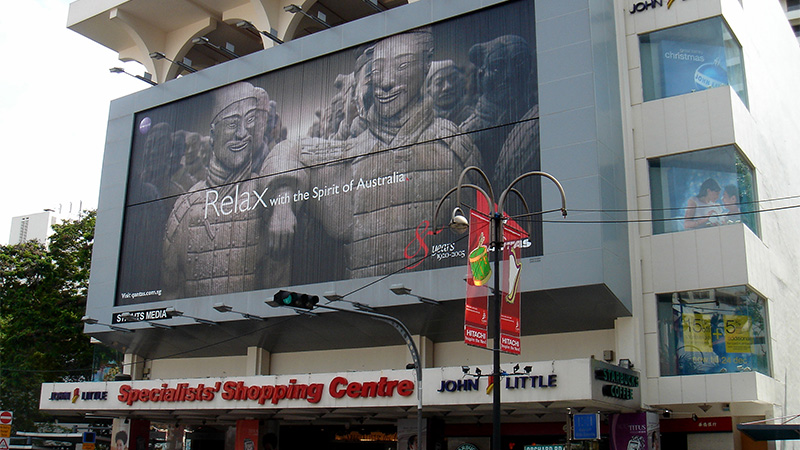
Specialists’ sat alongside the Hotel Phoenix, which also opened in 1972. The 400-room hotel was an early adopter of the electronic key-card for room access; it also introduced a new computerised lift system that allowed lifts to stop at different floors when not being used, to minimise waiting times.
Both the shopping centre and the Phoenix were demolished in 2007/2008. You’ll now find 313@Somerset, Orchard Central and JEN Singapore Orchardgateway in the same location, keeping the retail and hotel vibe going.
1972 also saw the launch of the first OG department store, with the 10-storey OG Building opening at People’s Park in Chinatown. There are still three OG outlets today – the initials stand for “Ocean Garments”, which was the original name of the family-run fashion business from the 1960s.
Exploring
Expat Living’s Judit Gál shares one of her favourite long walks on the island.
Rail Corridor – Woodlands
Checkpoint to Tanjong Pagar We might not be able to cross the border easily for now, but you can cross the country on foot in just a few hours! An easy but long hike of about 25km, the Rail Corridor passes through forested and residential areas following the former Malaysian Railway line, which ceased operation in 2011. It’s a walk down memory lane for those who had the chance to take the train when it was up and running, and a little slice of Singapore’s history for those who didn’t.
There are shops along the way so you don’t have to carry much – the silver lining of urban hiking. But do take water, sunscreen lotion and a raincoat with you. GPS comes in very handy as some parts of the corridor are closed for upgrading works (ongoing for the next couple of years) and you sometimes need to navigate amongst blocks of flats. Remember to record the walk – it looks really cool on Strava!
Find out more at nparks.gov.sg/railcorridor/rail-corridor.
Trivia
Singapore Quiz Corner
Time to test the grey matter with a few SG-themed questions. See how you go!
#1 Nelson Mandela, Kate Middleton, Elton John, Jane Goodall and Joseph Schooling have all had what named after them in Singapore?
#2 Which year saw the fall of Singapore?
#3 Name the large Indonesian island, beginning with “S”, to the west of Singapore.
#4 In 1998, what protective feature was introduced as a compulsory feature in all new Singapore residential developments?
#5 What’s the name of the official residence of Singapore’s President?
#6 Which country provided the first frozen meat and dairy shipment to the Cold Storage depot in 1905?
#7 Which Singlish word means “competitive” or having a fear of missing out?
#8 Name the only other Asian country that is smaller than Singapore in area.
#9 Which street became well known as a nightly gathering spot for transvestites in the 1950s,1960s and 1970s?
#10 Which island was known in Malay as Pulau Ujong?
Answers below!
1. An orchid 2. 1942 3. Sumatra 4. Bomb shelter 5. The Istana 6. Australia 7. Kiasu 8. Maldives 9. Bugis Street 10. Singapore (the mainland)
Food
Craving Kaya?
In late 2021, the Monetary Authority of Singapore (MAS) released a commemorative coindepicting Singapore’s hawker culture. The two versions of the coin – in silver, and in nickel-plated zinc – featured a hawker centre scene of people preparing and eating various famous local foods. Among the pictured dishes were big-hitters like Hokkien mee, roti prata and nasi lemak; front and centre, though, was a simple plate of kaya toast.
What is kaya? It’s a jam made from coconut, eggs and sugar that was initially created by Hainanese immigrants to replicate the Western-style fruit jams loved by Brits. The word kaya means “rich”, and a rich spread it is, too – sweet and creamy, with a colour that varies from brown to green (resulting from the use of pandan leaf as a flavouring).
How do you eat it? The most common way is in the popular breakfast combo of half-boiled eggs, kaya toast and coffee. The idea is to break the runny eggs into a bowl, and season them to taste with soy sauce. The toast comes sandwiched together with a couple of generous slabs of cold butter and plenty of gooey kaya. Or, you can try it in a fancier, more modern version, such as French kaya toast, or even served on crackers.
Where to try it? Specialist chains such as Killiney Kopitiam, Ya Kun Kaya Toast, and Toast Box, or standalone kopitiams including Good Morning Nanyang Café and Tong Ah Eating House.
History
Who was Whampoa?
Today, Whampoa is a housing area in Balestier – you’ve probably passed through it, or at least heard the name. That name comes from a leading Chinese businessman of the 19th century, Hoo Ah Kay (1816- 1880), better known as “Whampoa” after his birthplace of Huangpu in China’s Guangdong Province.
After arriving in Singapore as a teenager, Whampoa went on to become fluent in English and serve on Singapore’s Executive Legislative Council; he was also involved in the Tan Tock Seng Hospital. His company, Whampoa & Co, worked mainly in shipping and provisions. One of its innovations was to import blocks of ice from America’s frozen lakes. (Whampoa’s ice factory was located where the G-Max Reverse Bungy recently operated at Clarke Quay! The Victorian-style building with wrought-iron balustrades was torn down in 1981.)
Whampoa’s gardens
He was also known for his grand home, which occupied a large tract of land on the site of today’s Boon Keng MRT Station. In particular, Whampoa’s amazing gardens attracted travellers from near and far.
One of these was American author and travel writer Frank Vincent, who wrote the following passage in his travel memoir, The Land of the White Elephant (1882):
“In the afternoon, we go by road to the house and gardens of the Honourable Mr Whampoa, a Chinese merchant who has settled for life at Singapore, where he has been for a long time in business, and is reported to have made a fortune of $2,000,000. Mr Whampoa is a well-educated gentleman, speaks English perfectly, and is a member of the town council. His house, three miles from the town, is a complete museum, filled with expensive and beautiful curios from all countries, while his gardens – he is a great lover of flowers – are one of the first things a stranger is asked by European residents of Singapore: ‘Have you see the Chinaman’s gardens? If not, be sure and do so before leaving’.
“These gardens are rather a work of art than nature, with shrubs tortured into the most fantastic shapes by means of clipping and confining with wires. One may see living dogs, dragons, fish and exactly formed boats, pagodas and baskets. Walking along, we saw fish ponds, summer houses, canals, hedges, a network of paths, neatly gravelled, and then we came to the pig-sty, a long shed in which immense pigs of different breeds were wallowing; one hog – nearly the size of a cow – being too fat to stand upon its feet.”
Ten years later, another 19th-century writer, Reverend George Murray Reith, wrote the following description in his Handbook to Singapore:
“For many years, the private gardens of Mr Whampoa, a Chinese gentleman, have been considered one of the chief sights of Singapore. By the courtesy of the proprietor, the public are freely admitted to the gardens, which are very beautifully laid out and well worth a visit. They are in Serangoon Road (right-hand side), two miles from town”
“Whampoa, Singapore” (above) is an old illustration by Russian traveller Aleksei Vysheslavtsev, who was another visitor to the gardens, in the 1860s; his sketch presumably shows the area where the Whampoa River opens into Kallang.
Exploring
Expat Living’s Judit Gál enjoys exploring the island, and here she puts the spotlight on a little known corner of the north coast.
Masjid Petempatan Melayu Sembawang
If you’re cycling or walking around Sembawang Park, it’s worth taking a detour to this well-hidden little mosque. The two roads leading to the place (Jalan Mempurong and Jalan Selimang) already give an idea of what you can expect, as they’re lined by thick jungle on both sides.
Built in 1970 (though some websites say it was 1963), and surrounded by a beautiful lush garden, the place has a serene atmosphere that time has left unchanged. This is a place of religion, so remember to dress accordingly!
Did you know?
• The large rubber tree that stands adjacent to the mosque is thought to be over 100 years old. It may be the oldest surviving tree of its kind on the island.
• A crumbling old gateway can be found just beyond the mosque, on Jalan Selimang (see it in Judit’s photo here); it once led to a grand seaside bungalow belonging to Chua Boon Peng, who headed up Cycle & Carriage from 1957 to 1985.
Flashback – A solo traveller
Lilian Leland was just 25 when she set out from New York in 1884 to travel the globe and write. Her subsequent book, Traveling Alone: A Woman’s Journey Around the World (1890) recounts adventures in a wide range of destinations: from Chile and Hawaii, to Egypt, Japan, Turkey, India … and Singapore.
One critic said: “Leland was not eager to immortalise her name by attempting to add one more to the long list of tedious guide books, but wrote in a delightfully free and offhand fashion.”
This off-hand approach is evident from her very first sentence about Singapore: “It requires a stretch of the imagination to believe it is in fact November, for the temperature here is suggestive of ovens.”
She then follows up with this line about the local fauna: “I haven’t observed any sociable cobras or boa constrictors in my hotel room yet, but, as the Irishman said, ‘I have great hopes.’”
More interesting, perhaps, is her account of how she was treated at Singapore’s Hotel D’Europe, where clearly the staff hadn’t seen too many solo women travellers in their time…
“Dear me, what a dreadful thing it is to be a woman and to travel alone! I have thrown the hotel quite into a commotion. The unhappy clerk is in a pitiable state. He comes to my room and closes a shutter of my window that somebody in an adjacent room might possibly look through by partially dislocating his neck, and explains apologetically that there is so much curiosity and they ask him so many questions.
He also inquires doubtfully what my business is and I reply by way of reassuring him that I travel for my health, and to write. The table is at the time strewn with my manuscript, so the reply is eminently satisfactory.
He thinks that I ought to feel strange and frightened at being alone in a hotel, so he escorts me upstairs and downstairs to the table and back again. What a shocking sinful thing a woman is, to be whisked away and tucked into a back room, out of sight. I ought evidently to blush for my womanhood. But I don’t. On the contrary, I glory in it. I have come so far in comfort and safety, and I feel every day more confidence in myself and the innate goodness of human nature”
You can read more of the book online at Google Books – just search for “Lilian Leland”.
Animals – hawksbill hatchings
A significant hatching of hawksbill turtles took place recently on Sentosa. The hawksbill turtle is critically endangered – and that’s no surprise, as humans have prized the animal for its shell and meat for 2,500 years. But the past century has been particularly unkind, with biologists estimating the hawksbill population may have dropped by around 80 percent in that short period.
Which makes the news of a hatching on Sentosa’s Siloso Beach even more welcome. At around dawn on 1 November, 85 hawksbill turtles emerged from a nest that had been found on the beach back in September, and were safely released into the sea.
Their plight was helped by the Environment Management Team of the SDC (Sentosa Development Corporation), who built a temporary home for the nest to keep it safe from monitor lizards, crabs, humans and other disturbances. You might have seen the bright blue timber shed on a recent visit.
This is the sixth time since 1996 that hawksbill turtle eggs have hatched on Sentosa – the last time was in 2019.
As this issue was going to press, we were waiting to hear about the imminent hatching of a second nest of hawksbills, this time on Palawan Beach. Good luck, little turtles!
Tips from the SDC on protecting Singapore’s turtles
- Be quiet and keep your distance
- Don’t make loud noises or shine a torch; if a turtle is scared it will stop laying eggs and return to the sea
- Don’t dig up the nest
- If you see turtle tracks on beaches, leave them as they are, as they can be used by researchers to gather information
- If you spot a turtle nest on Sentosa, call the SDC at 1800-SENTOSA
While you’re there
Sentosa is home to other native wildlife such as the common palm civet, colourful bee-eaters, green-crested lizards, as well as peafowls, monkeys and monitor lizards. There are various nature trails to explore, and you can also visit the new Geology Gallery to learn more about the island’s rock formations and flora and fauna.
Exploring – Singapore’s newest museum
In December, EL attended the opening of the new Jews of Singapore Museum at the Jacob Ballas Centre at Waterloo Street. The permanent exhibition traces the 200-year history of Jews in Singapore, showcasing their significant contribution to society and the economy.
The museum touches on three themes: the timelines of Jewish arrivals from 1820 to today; profiles of Jewish community leaders; and festivals, culture and religion. You can learn more about all of these through photographs, videos and audio recordings.
Prominent people and places
Members of the Jewish community who have made their mark on Singapore:
- David Marshall – First Chief Minister
- Sir Manasseh Meyer – Businessman and philanthropist
- Jacob Ballas – Stockbroker and philanthropist
- Joseph Grimberg – Supreme Court Judge
- Harry Elias – Senior Counsel
- Frank Benjamin – Entrepreneur
- Victor Sassoon – Entrepreneur
The legacy of the Jewish community in roads, institutions and buildings:
- Synagogue Street
- Frankel Avenue
- Meyer Road
- Nassim Road
- Elias Road
- Jacob Ballas Children’s Garden
- Ellison Building
Did you know? In 1922, Albert Einstein travelled to Singapore a week before he won the Nobel Prize in Physics to lobby the Singapore Jews to contribute to the Hebrew University.
The Museum is free and open to the public by appointment. For more, visit singaporejews.com/museum.
Flashback – Singapore’s first phones
When was the first phone call made in Singapore? Possibly 142 years ago, in 1879. That was the year when Bennett Pell (1842- 1912), local manager of the Eastern Extension Telegraph Company, set up an exchange on the island. Singapore became known as the first city in the East to have a telephone system. (Alexander Graham Bell had only patented his new invention three years earlier, in 1876!) One of the very early connections was made between Raffles Square and Tanjong Pagar.
Despite this, it would be another 58 years before Singapore’s phone network went international, when a call to London was connected on 1 December 1937.
The first public coin-operated phone probably appeared in Singapore in the 1950s; by the early 1960s there were 250 of these, rising rapidly to 650 by 1965. (remembersingapore.org) The switch from coins to cards happened in the mid-1980s, in part to avoid the problem of people stealing coins from the boxes.
As mobile phones came into vogue, pay phones began to be phased out. And, with mobile phone penetration currently at around 150 percent of the population (that is, every person owns one and a half phones!), you’ll likely see fewer and fewer of them.
Did you know?
Singapore phone numbers had just five digits in the 1950s; an extra digit was added in the 1960s, and then seven digits became the norm in the 1980s. The eight-digit numbers we know today were introduced in 1995 for mobile phones and pagers (with the addition of a “9” at the front) and in 2002 for land lines (with the addition of a “6”).
Animals – Meet the Malayan Colugo
Along with all those macaques trying to steal your picnic treats at MacRitchie Reservoir, there are some interesting creatures that call Singapore home. Here we take a look 10 facts about one of them, the Malayan colugo.
- Malayan colugo is just one name you’ll hear this animal given. It’s also commonly referred to as the Sunda colugo, Malayan flying lemur, Sunda flying lemur, flying cat, cobego and kubong.
- What exactly is a colugo? Well, it’s not a lemur, and it can’t fly – so a few of those names we just mentioned aren’t too accurate! Officially, a colugo is an arboreal (tree-dwelling) gliding mammal that is native to Southeast Asia.
- The flying reference comes from the fur-covered membrane that stretches between the colugo’s limbs and fingers, which works like a cape (think Batman…) and allows the creature to glide from tree to tree. How far? One individual has been recorded travelling 150 metres in a single glide.
- While they’re elegant in the air, the Malayan colugo is an awkward-looking tree climber, moving up and down the trunk with a stop-start hopping motion. And on the ground they’re even less mobile – in fact, they go out of their way to avoid the jungle floor.
- The animal’s diet includes leaves, buds, flowers, shoots, fruit and sap.
- In Singapore, while they’re relatively common, they can be tricky to spot as they’re almost wholly nocturnal. Take a quiet early morning stroll on the trails and boardwalks at Lower Peirce Reservoir, and you’ve got a decent chance. Colugos have also been seen in more built-up areas – even in the Botanic Gardens.
- The Malayan colugo is also found in Malaysia, Thailand, Cambodia, Laos, Indonesia and other parts of Southeast Asia.
- It has amazing stereoscopic vision, allowing it to easily see which branch it’ll grab onto at the end of a glide, even in very dim lighting.
- While they look like the most mellow of animals, Malayan colugos can apparently make a racket, especially when two males are fighting. Their call has been described as a very loud “ripping” sound that can be heard from a considerable distance.
- Nobody knows exactly how many of these creatures live in Singapore; in 1994, they were listed as being vulnerable, based on an estimated population of just 200 animals; today, it’s generally thought this number is in the low thousands instead.
Find out more about Singapore wildlife in our series of nature stories at expatliving.sg.
Museums – newly reopened
Lovers of military history are in a for a treat, with another important Second World War site in Singapore reopening after a makeover. Having closed in 2018 for a major reno, Reflections at Bukit Chandu (RBC) is now open again. The museum tells the story of the Battle of Pasir Panjang (12-15 February 1942), when heavily outnumbered soldiers from the Malay Regiment fought valiantly against a much bigger force of 13,000 Japanese troops.
RBC is located on Pepys Road in Kent Ridge Park; it’s housed in a bungalow that was built in 1930 for senior British staff of an opium packing plant further down the hill. Right nearby is “Point 226”, the military position that marks the heroic last stand of the Regiment.
There are, of course, all kinds of military-themed artefacts to explore, from rifles and machine-guns to bullets and helmets. What’s also interesting, though, are the everyday objects that archaeologists have retrieved from the site. Here are three of them:
#1 This small bottle made of handblown glass dates to the early or mid-20th century. It’s most likely a Chinese medicine vial, perhaps used by a domestic helper.
#2 Made of tin, this mess cup was owned by the Regiment’s Lieutenant Ibrahim Sidek; he was executed by the Japanese on 28 February 1942.
#3 A more recent discovery is this silver and glass talisman with a scroll inscribed with a Thai writing script. It perhaps belonged to a labourer working in Singapore around 40 years ago.
The reopening of Bukit Chandu comes hot on the heels of the new-look Changi Chapel and Museum beginning operations again this year, also after a three year redevelopment. You can read more about that site in our June 2021 issue.
RBC is at 31-K Pepys Road. Entry is $5 (free for Singapore citizens and PRs) and $15 for a family. Open daily except Monday.
Singapore travel – the old route from South to North
If you’re making the trip from Boat Quay to the Woodlands Checkpoint these days, it’ll take around 30 minutes, zipping along the AYE, PIE or CTE. But what about 130 years ago?
Reverend George Murray Reith (1863-1948) was a Scottish minister of Singapore’s local Presbyterian church (plus a member of the Straits Philosophical Society and the Raffles Library), and a keen traveller on the side. He wrote one of the earliest guidebooks to the island, Handbook to Singapore, published in 1892. Below is his account of the half-day journey to Johor (“Johore”).
From the Wharves to Kranji via Singapore Town, and thence to Johore Bahru.
“If the traveller has ten to twelve hours to spare, he cannot do better than cross the island to Kranji, and thence pass over to the kingdom of Johore on the mainland; for he passes through the town of Singapore en route, and also has the opportunity of seeing the general appearance of the coffee, gambier and pepper plantations, and of the jungle in the interior of the island.
A carriage and horses for this excursion can be hired from one of the Livery Stables. From the Christian Cemetery, instead of turning into Thompson Road, the traveller keeps his course along the Bukit Timah Road, on which, seven miles out, he passes the hill that gives its name to the road: Bukit Timah or “ Hill of Tin”, the highest point in the island (height 519 feet).
The ascent of this hill is made by carriage or on foot. There is a Government Bungalow on the summit, to which residents go occasionally for a change of air. There are two Mission Chapels in the Bukit Timah district, for Chinese converts. One belongs to the English Presbyterian Mission; the other, the Chapel of St. Joseph, to the French Catholic Mission. From Bukit Timah to Kranji, the road winds through plantations and jungle for seven miles. At the village of Kranji there is a small pier whence Chinese and Malay sampans transport passengers across the Strait to Johore.
The Johore Strait (Silat Terbau), varying from three quarters of a mile to two miles in breadth and thickly wooded on both sides to the water’s edge, charms the visitor with beauties that are peculiar to land and water scenery; the ever-changing light and shade throw the landscape into combinations of colour as pleasing as they are varied. Travellers have compared it favourably with the Rhine scenery, with Loch Lomond, and with the best views on the estuaries of the Forth and the Tay.
Johore Bahru (“New Johore”), the capital of the dominions of the Sultan of Johor and Muar, is a town with a population of 20,000. The chief place of interest is the Istana, or palace, which faces the Strait. It has been tastefully furnished in the European style by the present Sultan, who is a staunch ally of the British Government.”
Exploring
New Street Art
There are a couple of cool new alfresco art installations to enjoy right now – track them down on your next weekend wander!
The People’s Gallery
National Gallery Singapore has rolled out The People’s Gallery, which transforms more than 25 open spaces around the island – mostly void decks of HDB blocks – into galleries for discovering 50 surprising artworks by Singapore and Southeast Asian artists, using QR codes and Augmented Reality (AR) technology. The void decks are located in eight heartland neighbourhoods: Bishan, Toa Payoh, Jurong West, Marine Parade, Serangoon, Pasir Ris, Punggol and Yishun.
Singapore Art Museum
Though the museum itself is closed for a major makeover, it continues to be a “Museum in Action”, by bringing art to everyday and unexpected spaces in Singapore. For instance, keep an eye out for the newly commissioned artworks by Kray Chen and Sam Lo on the hoardings of SAM’s heritage buildings along Bras Basah Road and Queen Street. Pictured is one section of Sam Lo’s piece, Our Future is In(con)clusive.
Find out more at singaporeartmuseum.sg/museuminaction.
History – Sembawang’s past
Last year, we previewed the new Hougang Heritage Trail in our Singapore Pages. Now, there’s another new trail to explore! The National Heritage Board’s Sembawang Heritage Trail launched in August 2021 and features 21 historic sites across three different routes, each taking a couple of hours. Here’s a taste of what you’ll discover.
#1 Giant Dock
Sembawang boasted the world’s largest dry dock in the 1930s. Named the King George VI Dry Dock, it was over 300 metres long and could fit the Royal Navy’s largest battleship. Once a ship entered, water was pumped from the dock so repair works could be carried out on dry land. When Britain withdrew its military forces from Singapore in the late 1960s, the dockyard became a commercial operation, the Sembawang Shipyard.
#2 House on the Coast
Sembawang’s Former Admiralty House is a gazetted National Monument and was once home to the most senior officer at the former Sembawang Naval Base. Called Nelson House for a time, after Lord Nelson, it’s been renamed Canberra House and is being developed as a community hub and library, opening in 2022.
Sembawang fact file
- Located at Singapore’s pointy northern end, east of Woodlands, north of Yishun.
- First mentioned in maps from the early 1800s (as “River Tambuwang”)
- Named after the pokok sembawang, a tall tree found in various parts of Southeast Asia, and still in Sembawang Park today.
- Once a major rubber-growing area (early 1900s), then an important naval facility for Britain’s Far East Fleet.
#3 Scoring Goals
A famous Sembawangian (if that’s a word!) is Singapore former national football player Quah Kim Song; he used to live in a coastal kampong in the area and play football with the dockyard workers at the Deptford Road field (pictured). Renowned as a fast striker, he scored two goals in the 1977 Malaysia Cup Final in Kuala Lumpur to help Singapore claim a 3-2 victory over Penang.
#4 Boiled Eggs
Singapore’s only natural hot spring park is in Sembawang. It was converted into an onsen during the Japanese Occupation, before becoming a popular spot in the 1950s to cook eggs or soak sore muscles. (Bathing during horseracing season would apparently bring good luck.) You can visit today – and still cook eggs! Check nparks.gov.sg for updates around COVID restrictions.
#5 From Tree to Temple
The Holy Tree Sri Balasubramaniar Temple dates to 1962, when a dockyard worker had a dream about a Hindu god and a golden cobra under a jujube tree. The worker then saw the same tree from his dream near Canberra Road and began to pray at it. A simple altar was built, then a wooden shed, and finally, in 1971, a proper temple.
History Hunt
If you’re a history buff, there are 20 other official trails and walks to follow in Singapore – from Tampines to Tiong Bahru – taking you past points of interest and information signs. Find out more and download maps at roots.gov.sg/visit/trails.
Sport – medal moments
At the recent Tokyo Olympic Games, Singapore unfortunately didn’t come away with a medal. While there was a bit of fuss about this from some corners, it’s worth keeping in mind that the Team SG was only 23 strong. America sent 657 athletes to the Games!
Here are some other stats:
Singapore at the Games
Number of Olympic appearances: 17 (1948-2020)
Number of Olympics with no medals: 13
First medal of any colour: Silver, 1960 Rome
First gold: Joseph Schooling, 2016, Rio
Total medal haul over 72 years: 5 (1 gold, 2 silver, 2 bronze)
Rather than dwell on numbers, though, let’s focus on the stories – and we’re sure the athletes who performed their hearts out in Tokyo have a few to tell. For now, though, here’s the tale of Singapore’s first ever medallist, Tan Howe Liang.
Tan was a weightlifter whose two Olympic appearances were dramatic, to say the least! At the 1956 Games in Melbourne, he blacked out while attempting a particularly heavy lift. The team manager tried to retire him from the competition, but he insisted on finishing, coming a very respectable ninth.
In Rome, four years later, Tan suffered pain in his legs after his first lift, and the authorities tried to shuffle him off to the athletes’ village for treatment. Tan didn’t give up. He went on to beat 33 competitors on his way to claiming silver for Singapore. Oh, and he also broke a world record for the clean and jerk in the lightweight category!
Another nine Olympic Games would pass before the country won another medal, a silver in table tennis at the Beijing Olympics.
Neighbourhoods – 100th anniversary of Amber Road
It’s interesting what you find when you dig into the past. In one of our recent Street Talk columns in our print magazine, we chatted to a family who lived in Amber Gardens. When we took a casual look in the books to see if it had any historical significance, we quickly discovered it does!
Located in Tanjong Katong, Amber Gardens runs perpendicular to the L-shaped Amber Road, at the western end of Marine Parade Road. It was built exactly a century ago this year. The word “Amber” appears in various placenames in the neighbourhood and elsewhere in Singapore from that time, and while its direct origin is unknown, it’s almost certainly connected to the family of Joseph (“Joe”) Aaron Elias (1881-1949). (His mother was sometimes referred to as Mrs Sarina Elias Amber.)
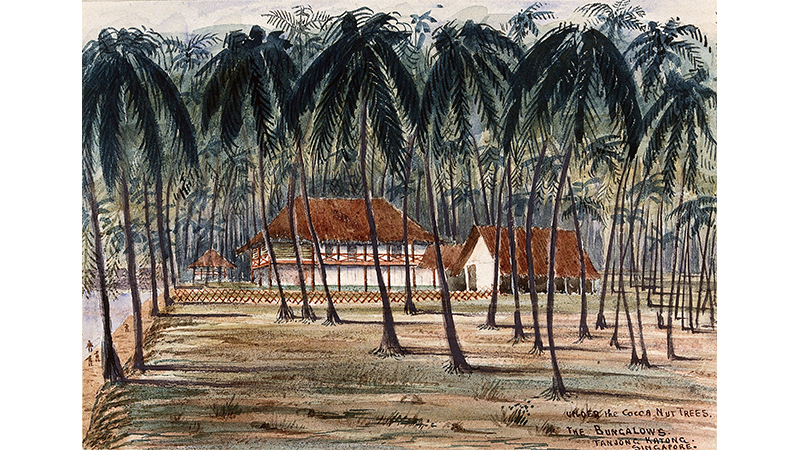
According to Singapore Infopedia, Elias was a prominent Jewish businessman of the day; he owned one of Singapore’s first shopping centres, Amber Mansions. It was located near where Dhoby Ghaut MRT is today, and was demolished in 1984.
The area around Amber Road was also the site of an earlier Malay kampong, Kampong Amber, which was active in the 1940s and 1950s, and known for the multiculturalism of its Chinese, Indian and Malay villagers.
Another piece of trivia: Mandalay Villa was a prominent house on Amber Road, and apparently the place where Singapore’s first Prime Minister Lee Kuan Yew proposed to his wife, Kwa Geok Choo!
The Chinese Swimming Club, which is still on Amber Road today, was launched in 1905 as a swimming group for Straits Chinese who couldn’t join the Singapore Swimming Club set up for European members by the British. Some superb swimmers launched their careers at the club, including Patricia Chan, Singapore’s flag bearer at the 1972 Olympic Games in Munich, and Mark Chay, who swam at the 2000 and 2004 Olympics (and who was recently appointed a new Nominated Member of Parliament.
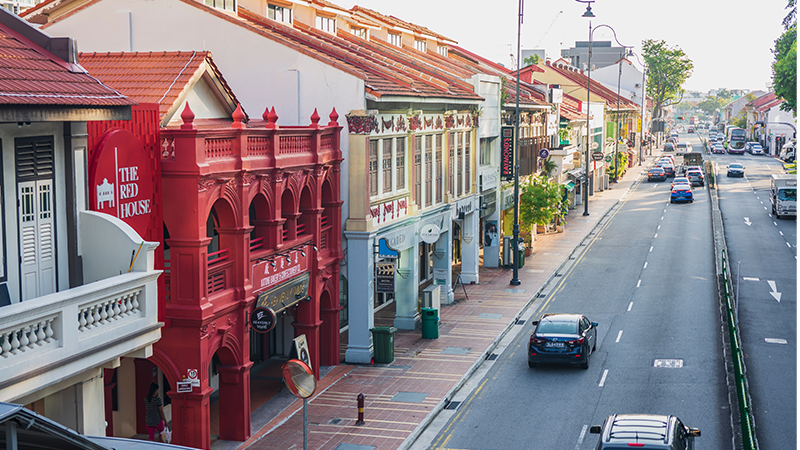
Nature – check out the chiku
Singapore is a goldmine for fans of tropical fruit. Go to any food centre and you’ll find an amazing array of fruit that you can enjoy either fresh on a stick, or in juices, ice creams and more. We’ve tried most of them, from rambutan and mangosteen, to durian and dragon fruit, but we admittedly know less about chiku (also “ciku” and “chikoo”). If you’re in the dark, too, here are 10 fast facts!
- Native to Central and South America, chiku came to Singapore via the Philippines, where it was introduced during Spanish colonisation.
- It’s commonly known in many Englishspeaking countries as sapodilla.
- The fruit is round or egg-shaped, and up to 10 centimetres in diameter. It has a thin, brownish-grey skin and a light brown-orange flesh with large black seeds.
- The taste of chiku has been described as “caramel-like” – or “pear sprinkled with sugar”!
- In an official tree-planting campaign of the 1970s and 1980s, chiku was one of the fruit trees chosen to be planted around housing estates in Singapore. Lee Kuan Yew planted a chiku tree at Spottiswoode Park Road on 3 November 1985.
- In the first half of the 20th century, an area of the East Coast had its streets renamed after tropical fruit. Chiku Road is still there today – it’s a short dead-end street running off Joo Chiat Place.
- Chiku trees are known to attract bats, so you’ll often see the fruit wrapped in newspaper as it hangs from the branches
- Known as chicle, the sap from the chiku tree and other similar tree varieties was once used as the base for making chewing gum.
- The plant is said to have medicinal qualities, with the bark used in the Philippines to treat fever and diarrhoea, and the flowers in Indonesia in a body ointment for women after childbirth.
- The dark and durable wood of the chiku tree can be used to make furniture.
Food – McChicken Rice?
The reviews are in. And they’re … mixed. To commemorate National Day in August 2021, McDonald’s launched a new Crispy Hainanese Chicken Burger, inspired by Singapore’s “national dish”, chicken rice. It features a crispy chicken patty with crunchy salad and three sauces (ginger, garlic chilli and a sweet dark sauce). YouTube has a feast of reviews where the burger’s pros and cons are discussed at mind-numbing length! In the meantime, here are a few other factoids about the popular hawker favourite.
- An average serve of chicken rice has around 600 calories. We couldn’t find a calorie count for the new McDonald’s burger, but a Big Mac has 1,020 calories.
- Chicken rice has inspired at least two Singapore films. Chicken Rice War (2000) is a rom-com featuring young lovers from different chicken rice-making families. (Loosely based on Romeo and Juliet, apparently!) And Rice Rhapsody (2004; Jackie Chan executive producer) is set in a successful chicken rice restaurant in Chinatown.
- There’s a chicken rice franchise in Japan called Mr Chicken, launched by a couple of young Japanese foodies who grew up in Singapore.
- The late Anthony Bourdain did a segment on chicken rice for a show, and the place he chose to eat at was … drumroll … Tian Tian Chicken Rice at Maxwell Food Centre. The stall opened in 1987 and continues to be popular today. (Having said that, everyone has their own “best chicken rice” stall, right?!)
Singapore History
Who would be a snake?
Egerton K Laird was an Englishman (born in Birkenhead in Cheshire) who wrote about his leisure travels around the world in the 1870s. One of these trips brought him to Singapore for a couple of weeks, the details of which he recounted in his 1875 book, The Rambles of a Globe Trotter. There are some interesting perspectives in its pages, including this reflection on Laird’s encounter with one of Singapore’s most confronting animals.
“I saw a boa-constrictor brought into town today, 25 feet long; it was caught only 6 miles from here and was killed whilst in a state of stupor, having just demolished a large sow weighing about 200 pounds [90kg]. It’s not pleasant to think that there are such customers here at hand. I only weigh 118 lbs [53kg], so I would have been a mere pastime for it; but I flatter myself that I would have been somewhat angular and more difficult of digestion; however, if he had, as they always do, covered me with saliva I dare say I would have glided down easily enough – what a curious idea. I was told that one was once found with the head of a deer sticking out of its mouth, as the horns were rather too much of a good thing, even for a boa; so it would have slept until the horns gradually dropped from decay. Who would be a snake?”
Operation Jaywick
Singapore commemorates Anzac Day (25 April) each year with an annual service at Kranji War Memorial in remembrance of Australians and New Zealanders who served their countries. (See cwgc.org for more info.) Here, we take a look at a key event featuring Australian soldiers in Singapore’s Second World War history.
In December 2020, a Japanese flag made by Australian and British troops in 1943 sold at auction, together with some WWII medals, for around S$70,000. The flag had been used to help conceal a boat, the MV Krait (pictured), during an Allied mission in Singapore titled Operation Jaywick.
That mission saw a 14-man crew disguise themselves as Malay fisherman and sail the Krait – named after a type of snake – all the way from Western Australia and into Japanese-occupied Singapore Harbour in September 1943.
On the night of 26 September, six soldiers in three canoes paddled into the harbour and placed explosives on the hulls of a group of Japanese ships. The men escaped safely. When the explosives were detonated, at least three of the ships were destroyed, with three more damaged in some way.
The aftermath
The raid was considered a success by Allied forces – not only from a strategic viewpoint, as it further stretched the already thin Japanese resources, but also from a morale standpoint. However, there would be unfortunate ramifications for those on the ground in Singapore. Since the operation took the Japanese by surprise, they believed it had been carried out by the civilian population. In what became known as the Double Tenth Incident, more than 50 people were arrested and tortured. Though, of course, they also had no idea how the ships came to be destroyed.
Among this group was Elizabeth Choy (1910-2006). Together with her husband, she had been risking her life smuggling messages and food to prisoners-of-war at Changi. She somehow survived the Double Tenth ordeal, going on to become an educator and politician, and known as one of Singapore’s war heroines (swhf.sg/profiles/elizabeth-choy).
Exploring Singapore – A new chapter at Changi
Exciting news for history buffs: after closing in 2018 for a major redevelopment, Changi Chapel and Museum (CCM) reopened recently (May 2021). There’s a whole bunch of interesting new stu to see, including fascinating artefacts donated and loaned from families of internees at the infamous Changi prison camp.
The 114 artefacts are showcased across eight galleries highlighting the daily lives of internees, and how they responded to the hardships they faced. Over 80 of these items have never been displayed before – here’s a glimpse at just four!
#1 Toothbrush Fashioned From Scratch
These toothbrushes were made between 1942 and 1945 in a broommaking workshop at Changi. POWs used their skill and innovation to produce 30,000 items during the workshop’s operation. Coconut fibres were used as bristles, and attached to a bamboo handle by bitumen from roadways.
#2 A 400-page Diary
Arthur Westrop was a civilian internee at Changi who risked retribution by keeping a diary, with entries styled as letters to his wife (in Rhodesia at the time). He took care to hide the diary under the floorboards of his cell, and it was never found by the Japanese.
#3 Christmas Dinner Menu
When Private Albert Riley of the Royal Army Medical Corps was interned at Changi, he had in his possession a Christmas menu he’d enjoyed aboard the US troopship that brought him to Singapore in 1941. The menu features roast turkey, giblet gravy, cranberry sauce, plum pudding and other goodies, and includes the following poem: “We’re way out here upon the sea And not where we should like to be / But don’t complain on Christmas Day / Just smile and to each other say / ‘Merry Xmas’ – that’s the way / To be real happy all the day”.
#4 An Old-school Camera
Like Arthur Westrop’s diary, this metal Kodak Brownie Camera was painstakingly hidden from Japanese troops by internees for the duration of their time at Changi. It belonged to Sergeant John Ritchie Johnston, and was given to him by his wife.
Other highlights include a section of the Changi Wall, a Morse code device hidden in a matchbox that was used by internees to transmit messages, and replicas of biblical murals that were painted for spiritual comfort.
In addition to artefacts, you’ll find new multimedia offerings in the revamped CCM, which help to convey stories of the time. These include a projection show of the key events of the three-and-a-half year Japanese Occupation; you can also step inside a recreated Changi cell to get a sense of the cramped living confines, while listening to historical recordings of internees’ conversations.
Did you know? The logo of the Changi Chapel and Museum incorporates the site’s acronym (“CCM”) in a way that shows the silhouette of the chapel’s architectural shape, while also representing prison bars. It’s a clever nod to the site’s history and significance.
Opening hours: Tuesday to Sunday, 9.30am to 5.30pm. For info and tickets, visit changichapelmuseum.gov.sg or CCM’s Facebook and Instagram pages.
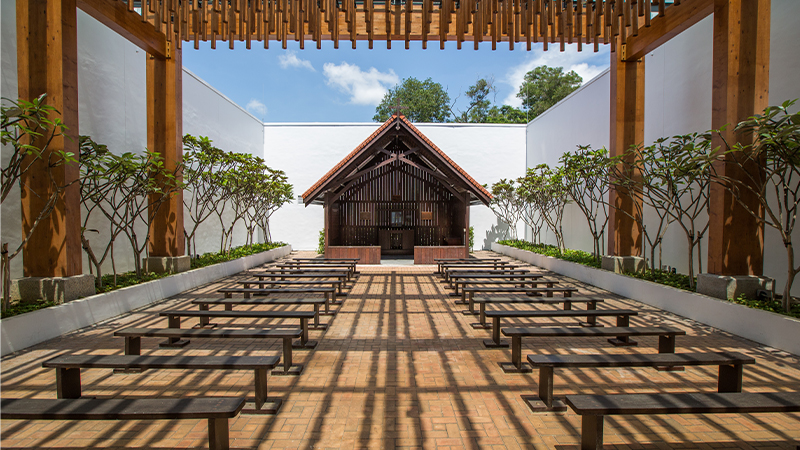
Flashback – 0ne of Singapore’s earliest hotels
Today, there are over 400 hotels in Singapore, including dozens of big-name international brands. Back in the 19th century, however, only a handful of lodgings existed. The best known were Raffles (of course!), the Adelphi Hotel, Hotel de la Paix and the one we’re looking at here, Hotel de l’Europe.
Originally built on Hill Street in 1857 by a French entrepreneur, the premises shifted to its final location – the spot now occupied by the Old Supreme Court Building (the current National Gallery) – in 1865. In the early 1900s, it was rebranded as the Grand Hotel de l’Europe. By this time, it had over 100 luxury rooms, with all the “mod cons”, including electric lights and fans. There was even a roof garden.
In the 1930s, the hotel was demolished, and replaced by the courthouse of the Supreme Court, which opened in 1939.
About the photo: The image dates to around 1900, with the Hotel de l’Europe front and centre. The Padang is in the foreground, with Fort Canning Hill in the distance. Out of shot are St Andrews Cathedral, to the right, and the Cricket Club, in the left foreground.
A review of Hotel de l’Europe
Here’s what American author and travel writer Frank Vincent had to say about the hotel in his 1882 book, The Land of the White Elephant.
“This hotel we find to be very large and comfortable, situated in the midst of beautiful gardens, facing ‘the green’ and commanding a fine view of the straits, the large island of Bintang [sic] in the distance, and the Chinese junks and foreign shipping in the harbour. Attached to the establishment, which is kept by a German, is that ‘peculiar institution’, an American barroom, where California mixed drinks are served. There is also a ‘regular down east’ Boston Arctic soda-water fountain; a billiard-room; and a reading-room, where one will find papers and journals in four or five languages, from New York, London, Bombay, Calcutta, Batavia, Hong Kong, Shanghai, Yokohama and San Francisco.”
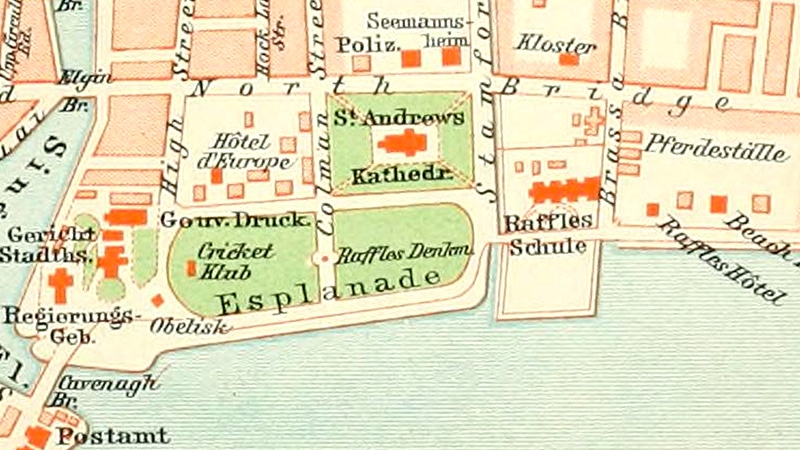
Singapore Trivia – four world records
We have our fair share of world beaters in Singapore. Here’s a handful just to begin with!
#1 Fluoro Flowers
Anyone who’s strolled in the Botanic Gardens knows that Singapore does a great orchid. The national flower is a type of orchid. And the country leads the world in creating new hybrids of orchids. But have you ever seen one that glows? Back in 1999, Professor Chia Tet Fatt from the National Science Academic Group produced the first ever successful bioluminescent flowers – orchids, of course – and set a Guinness World Record in the process.
The professor used a white-petalled strain of orchid known as the “Dendrobium White Fairy #5” and transferred biologically active DNA containing a gene from the firefly into the orchid’s tissues. He then propagated them, and was eventually able to grow stable orchids that retained the firefly gene. The flowers emitted a greenish-white glow from petals, roots, stem and leaves that lasted up to five hours at a time.
#2 Yoga Guru
A more recent record was achieved in Singapore by Jeyaseelan Venkadasamy of India. On 4 December 2020, he set a new Guinness World Record for the “longest time to hold the tree pose”. His time of 1 hour, 12 minutes and 59 seconds eclipsed the old record by around six minutes. Known as Vrikshasana and named after the Sanskrit word for “tree”, this balancing yoga pose is centuries old. It involves placing one foot on the inside of the opposite thigh, while leaving the other foot on the ground.
#3 Longest Satay
The world record for the longest satay stands at just over 140 metres. (That’s nearly the length of one and a half football pitches!) The Kopitiam Group of Companies (Singapore) set the record at famous food centre Lau Pa Sat on 21 July 2007. Around 150kg of chicken was marinated with cumin, coriander, fennel, ginger, turmeric, lemongrass, onion, sugar and salt, and then grilled over charcoal by 150 staff.
#4 Largest Game of Pass the Parcel
A record-breaking 3,918 students gathered at Nanyang Technological University on 28 February 1998, where they played a 2.5-hour game of Pass the Parcel, removing 2,200 wrappers from an enormous parcel (1.5m x 1.5m x 0.5m). Though they still hold the record for the most participants, the record for the largest parcel used in Pass the Parcel was set in the UK in 2014. It was the size of a car!
This article first appeared in Expat Living. Purchase the latest issue or subscribe so you never miss a copy!
For more interesting facts and trivia about Singapore, see our Things To Do section.

